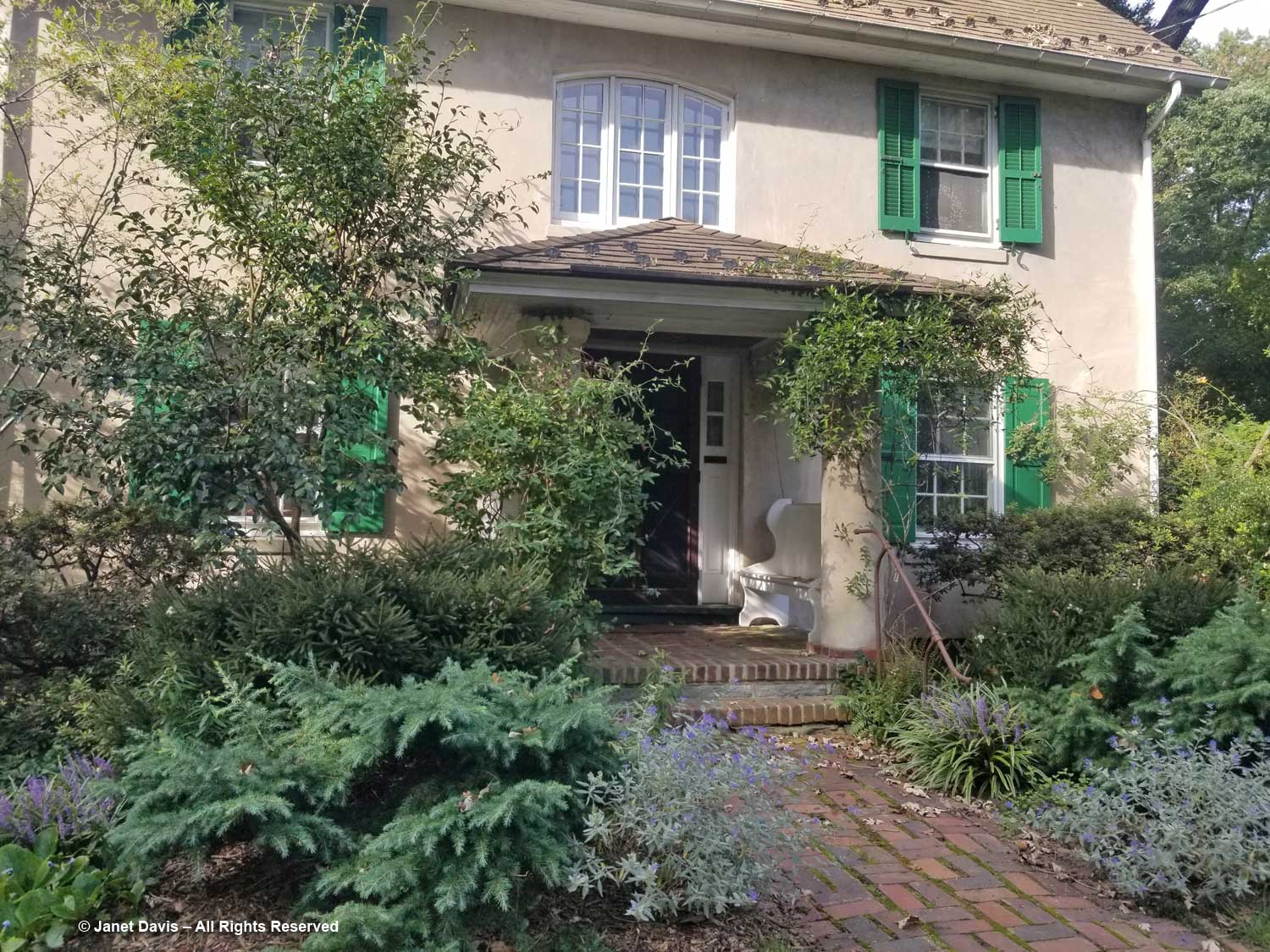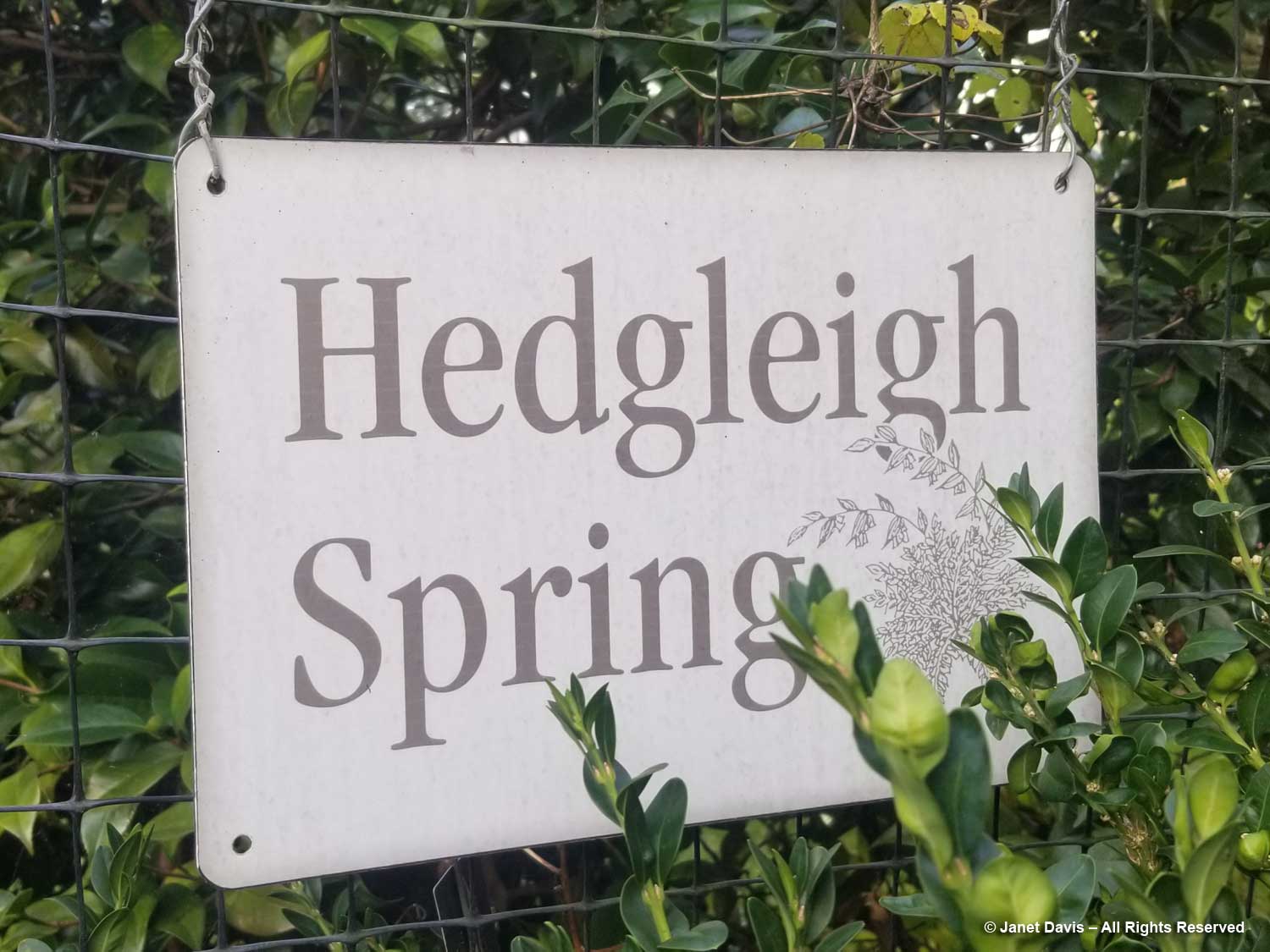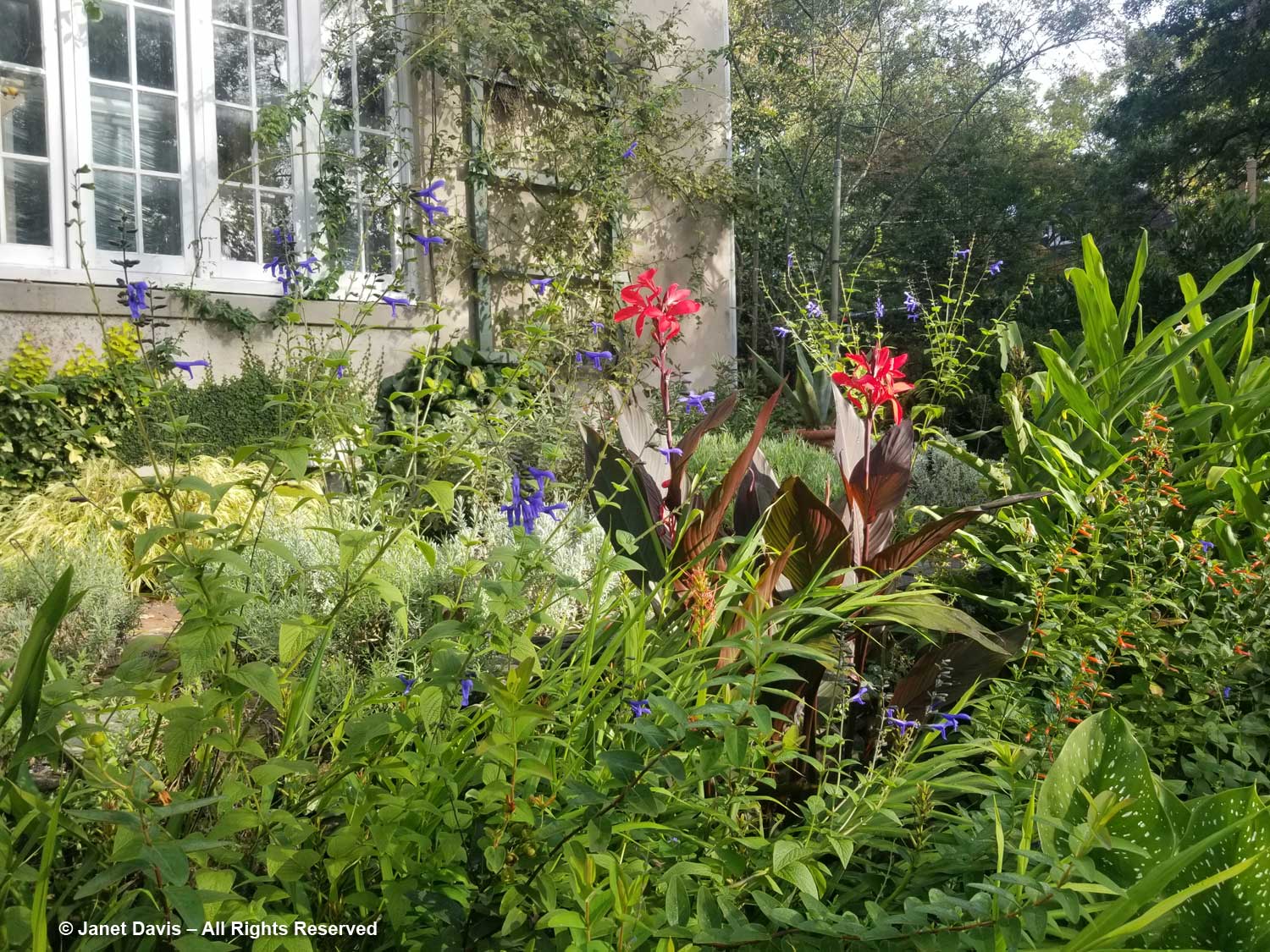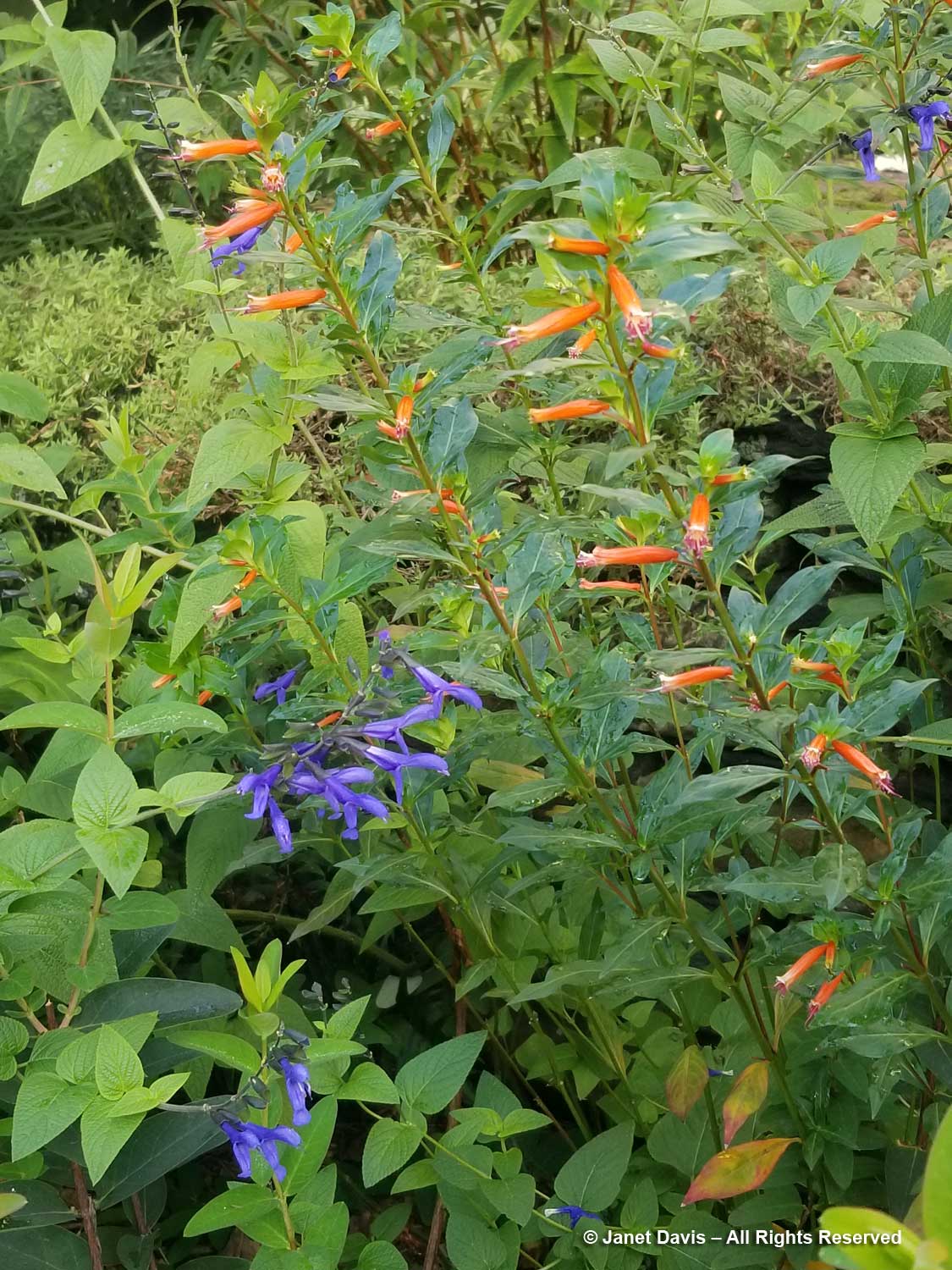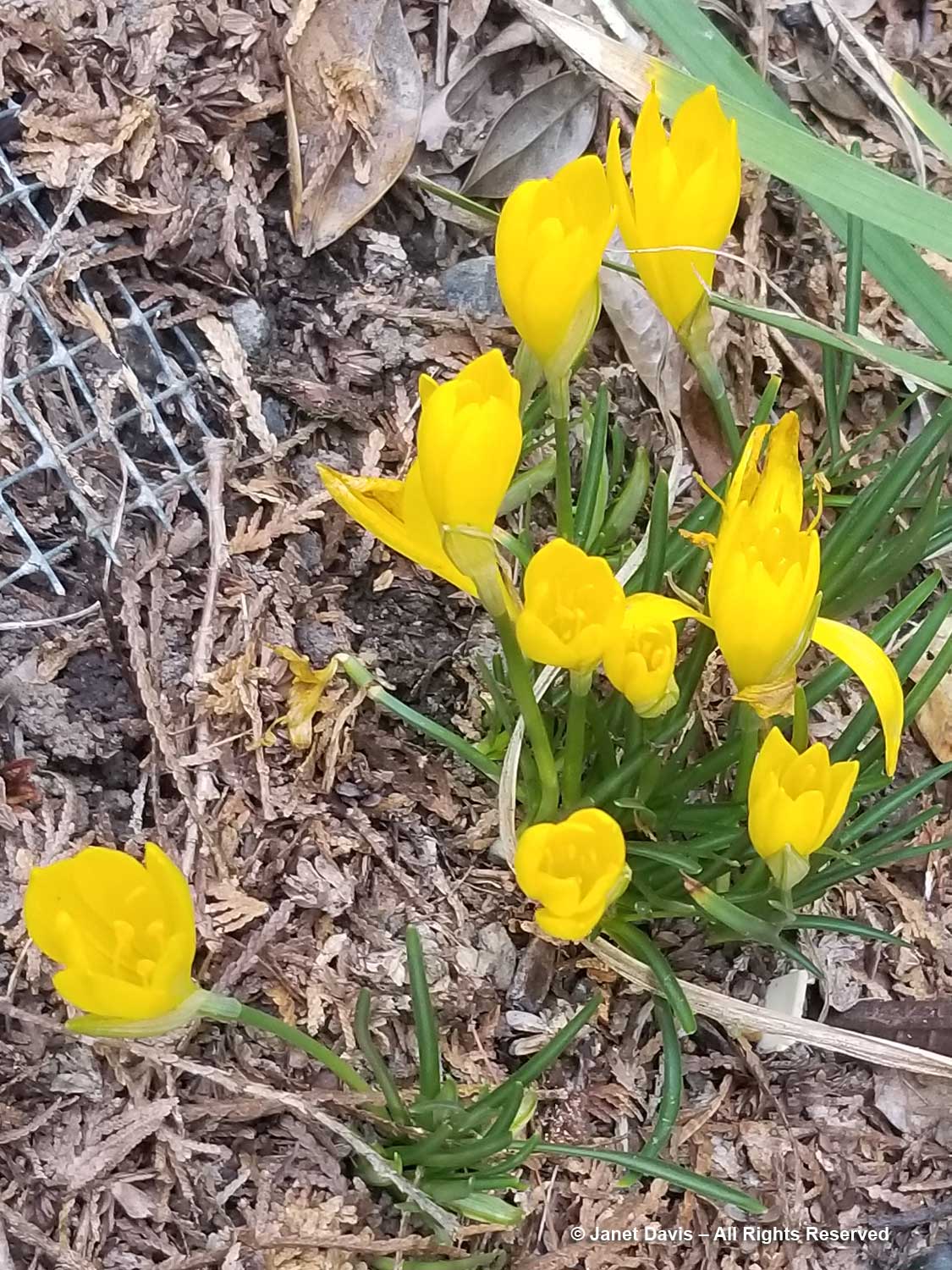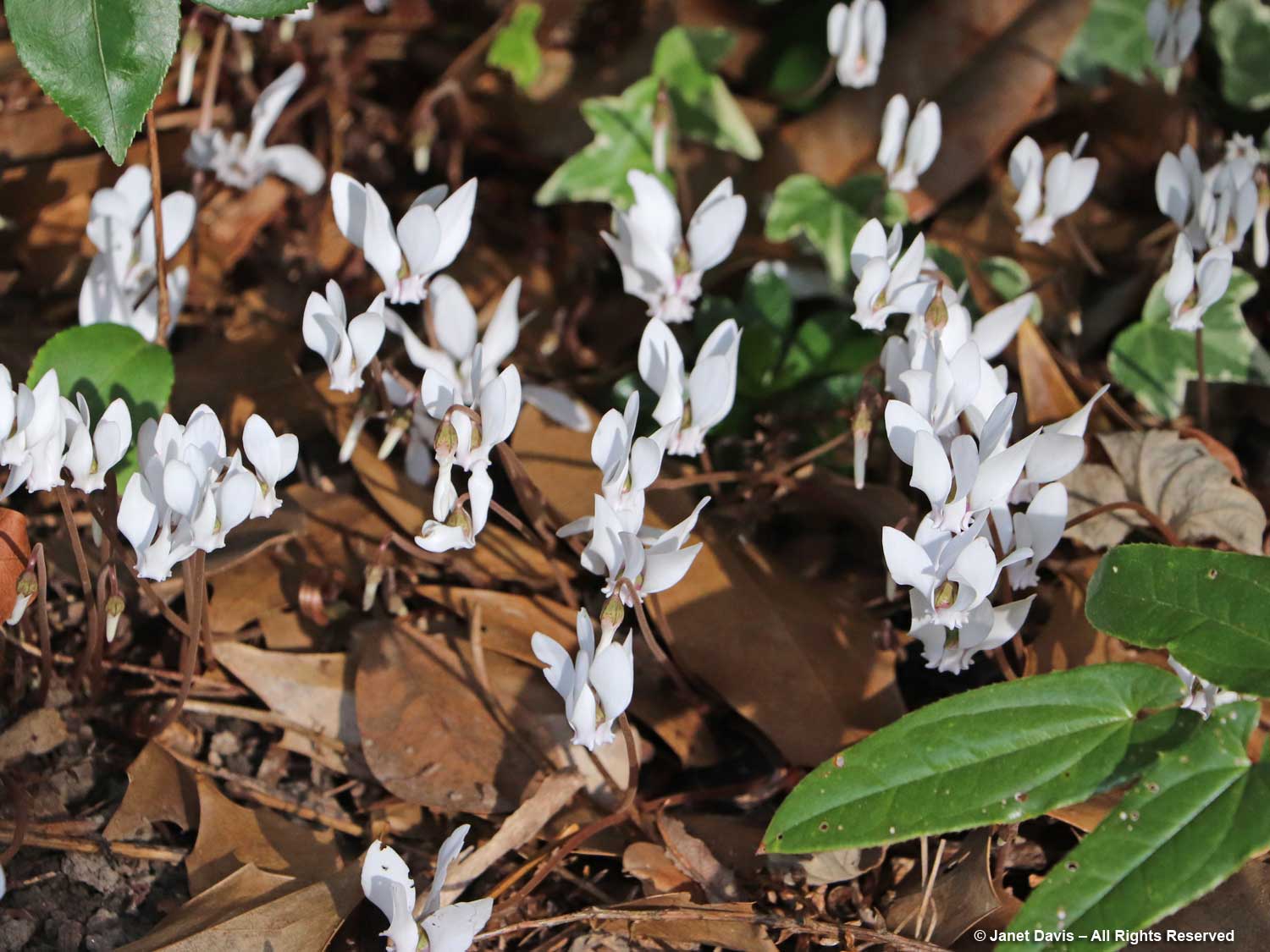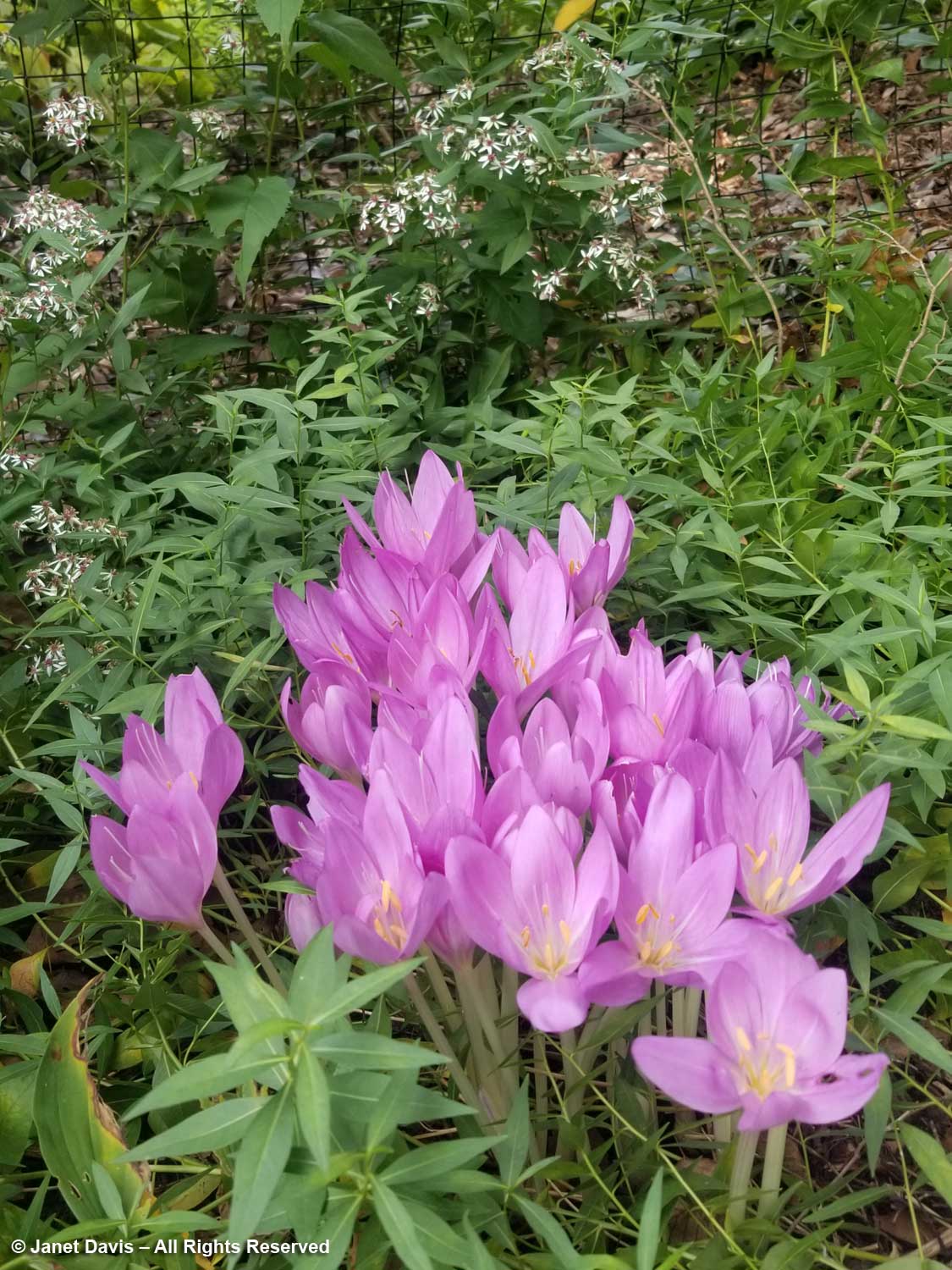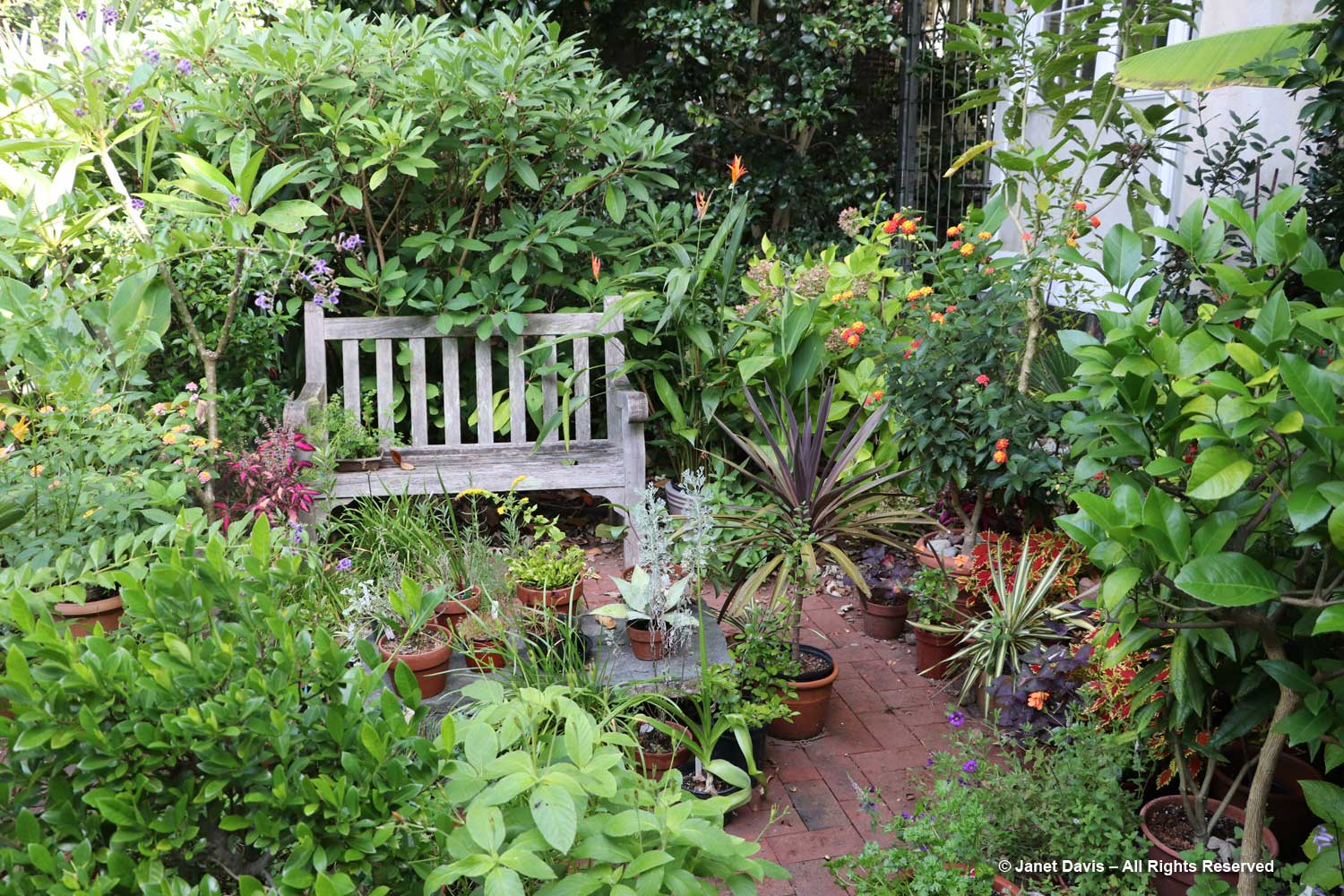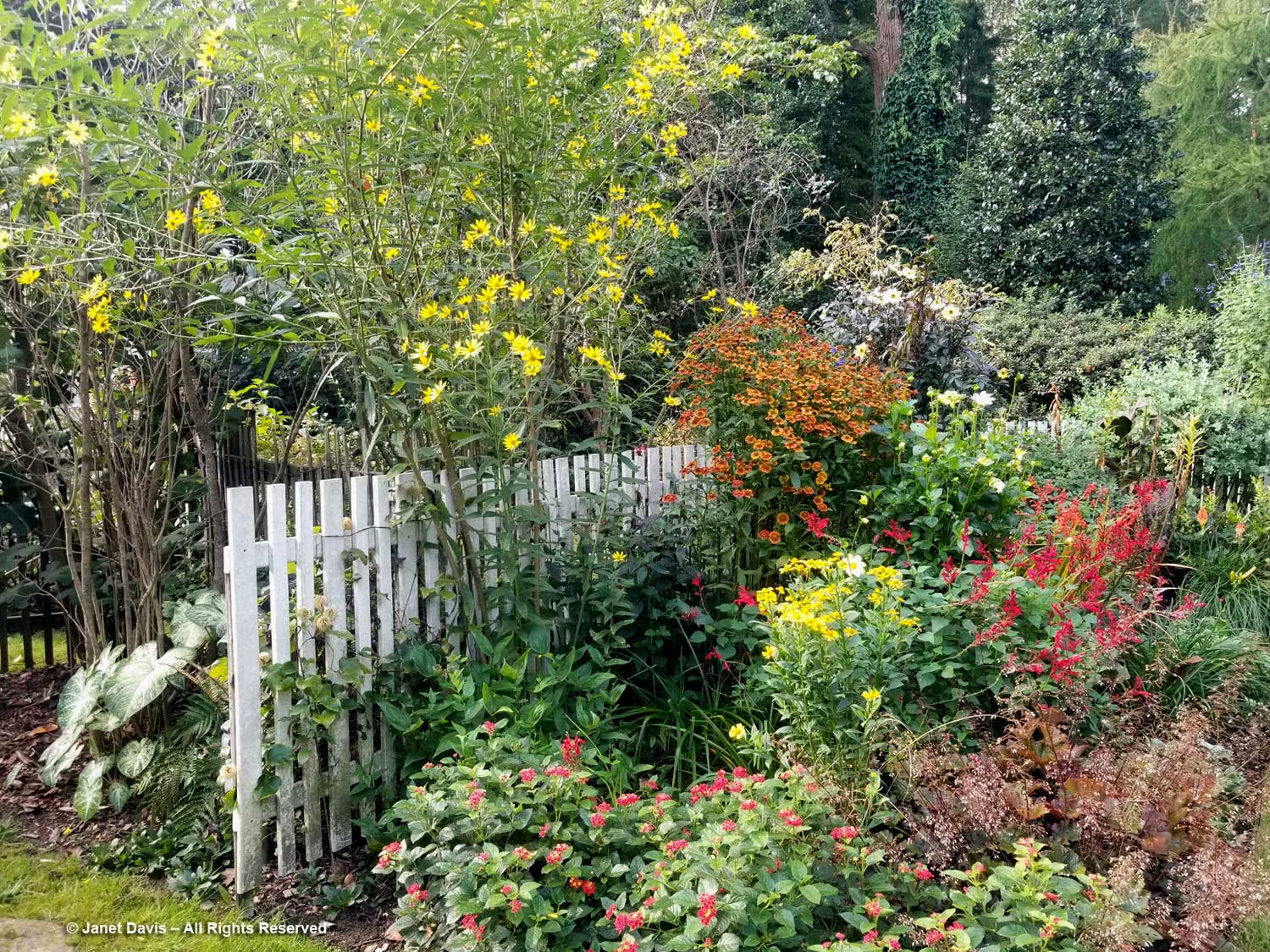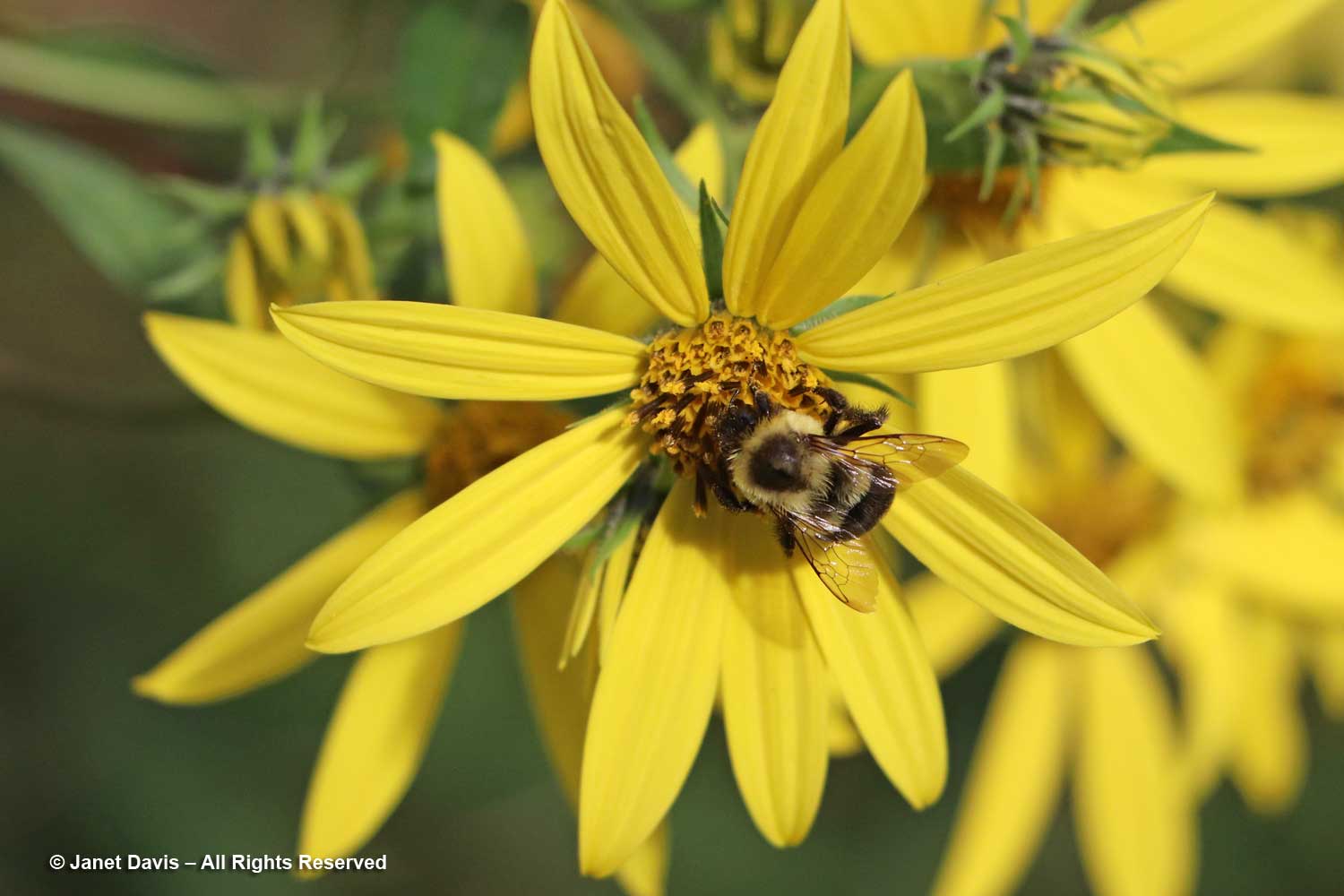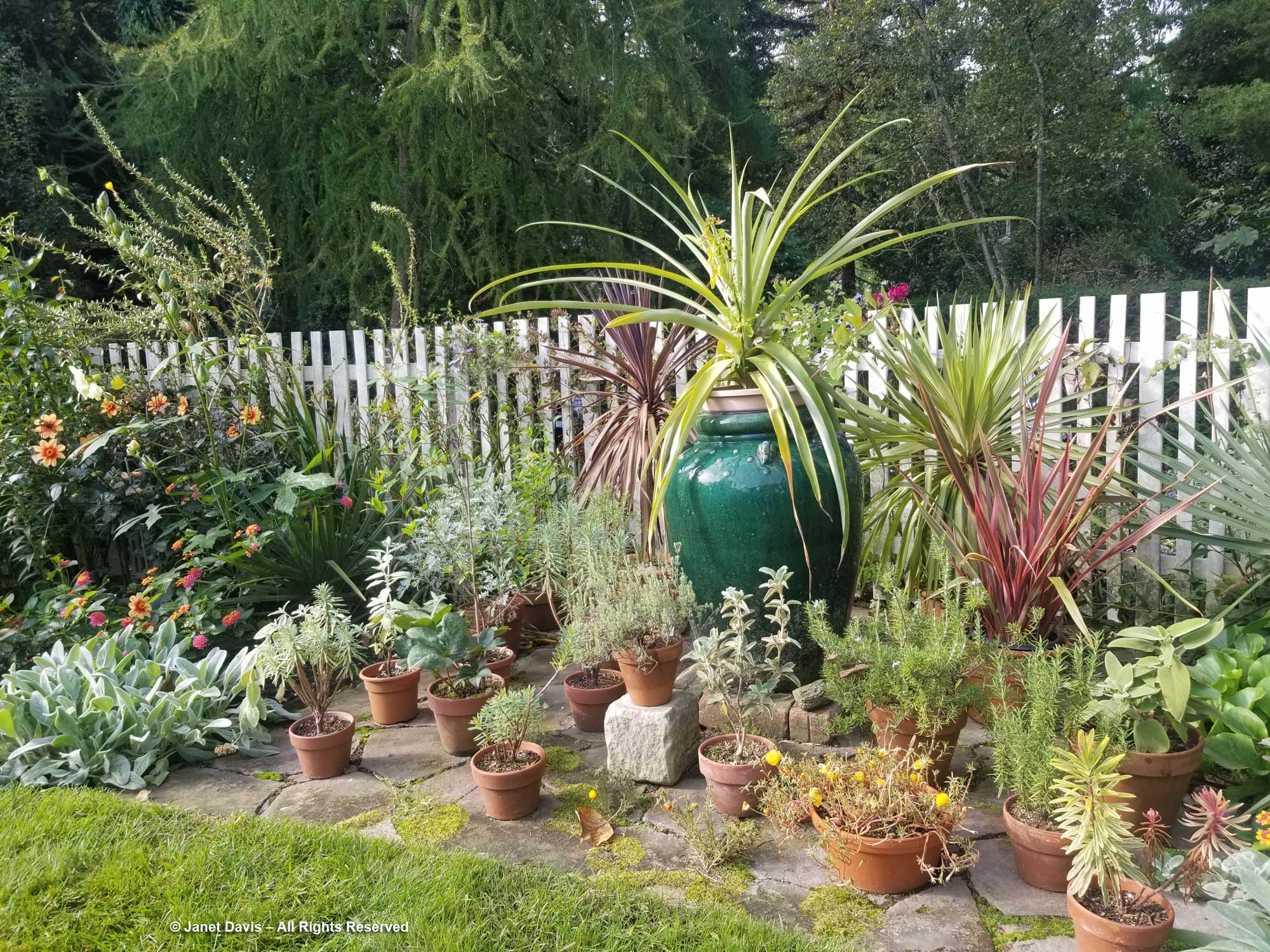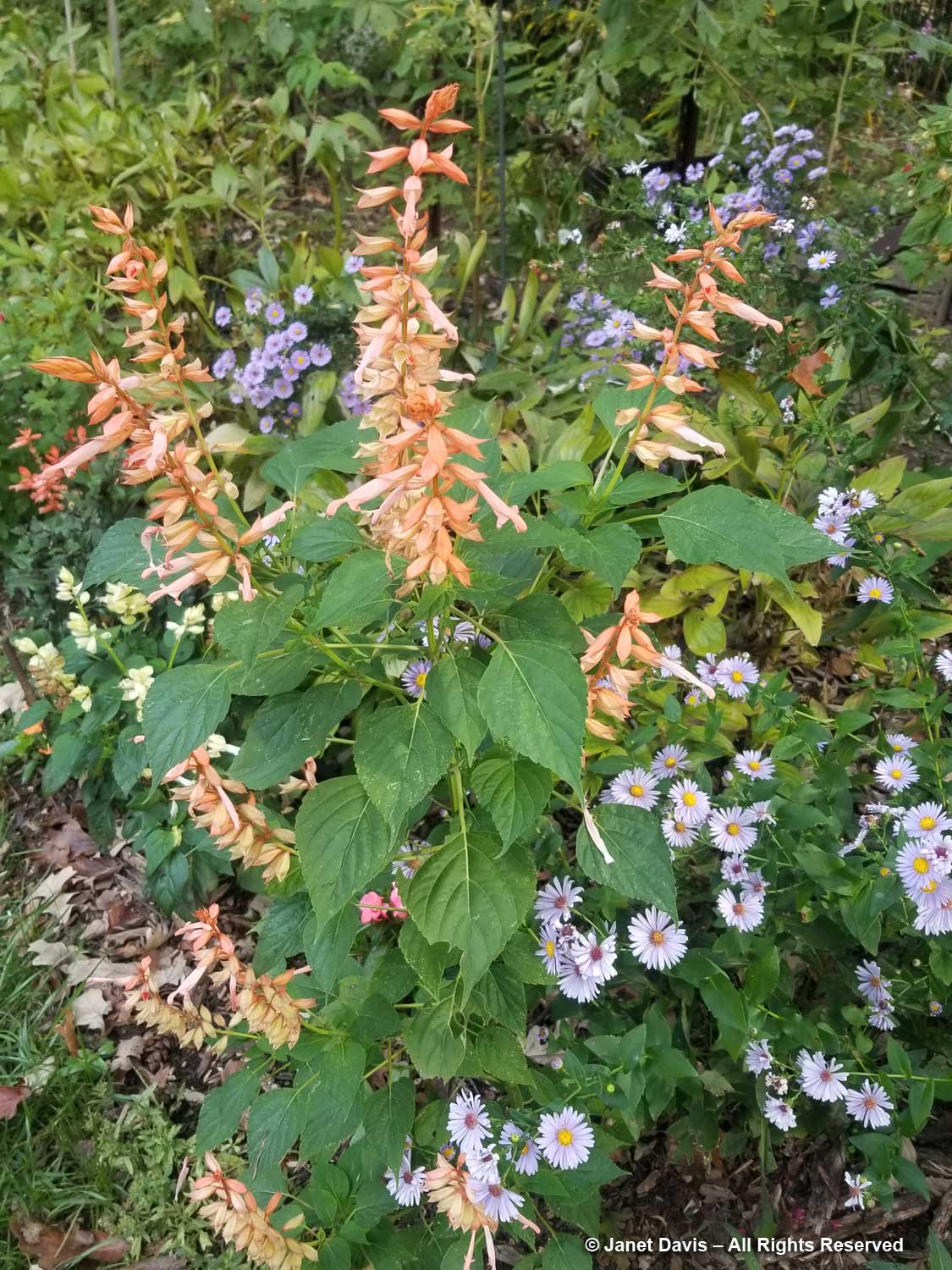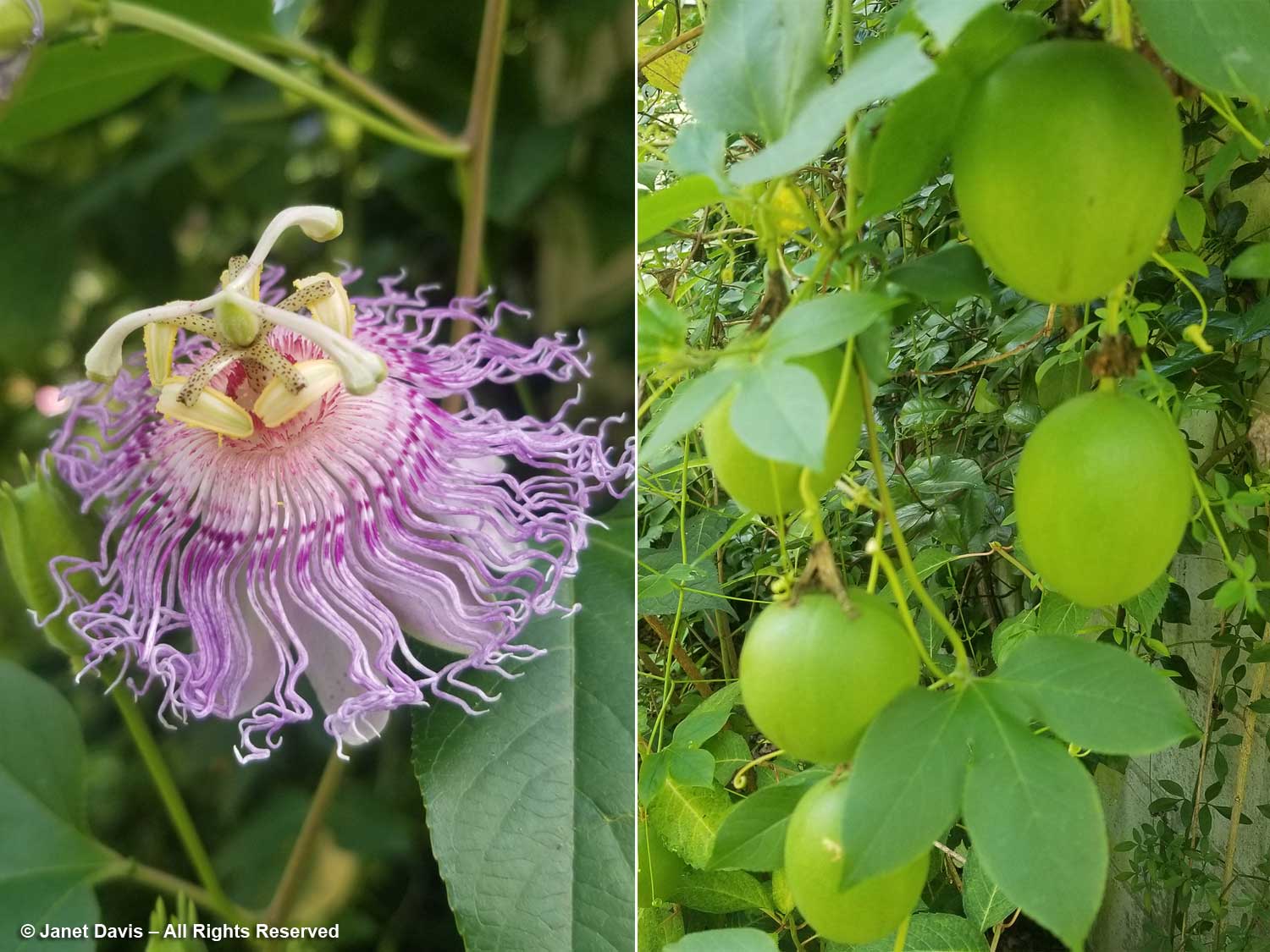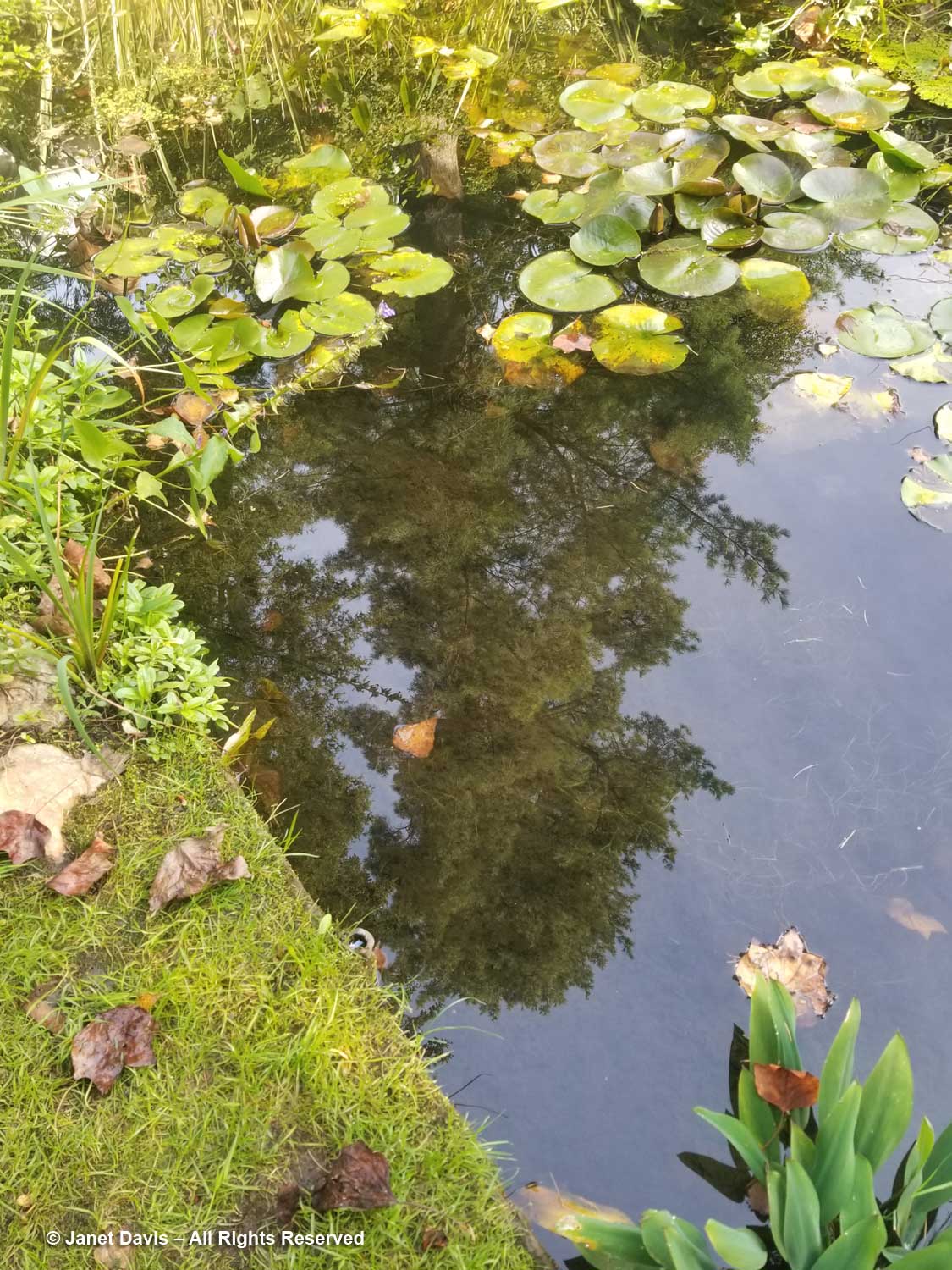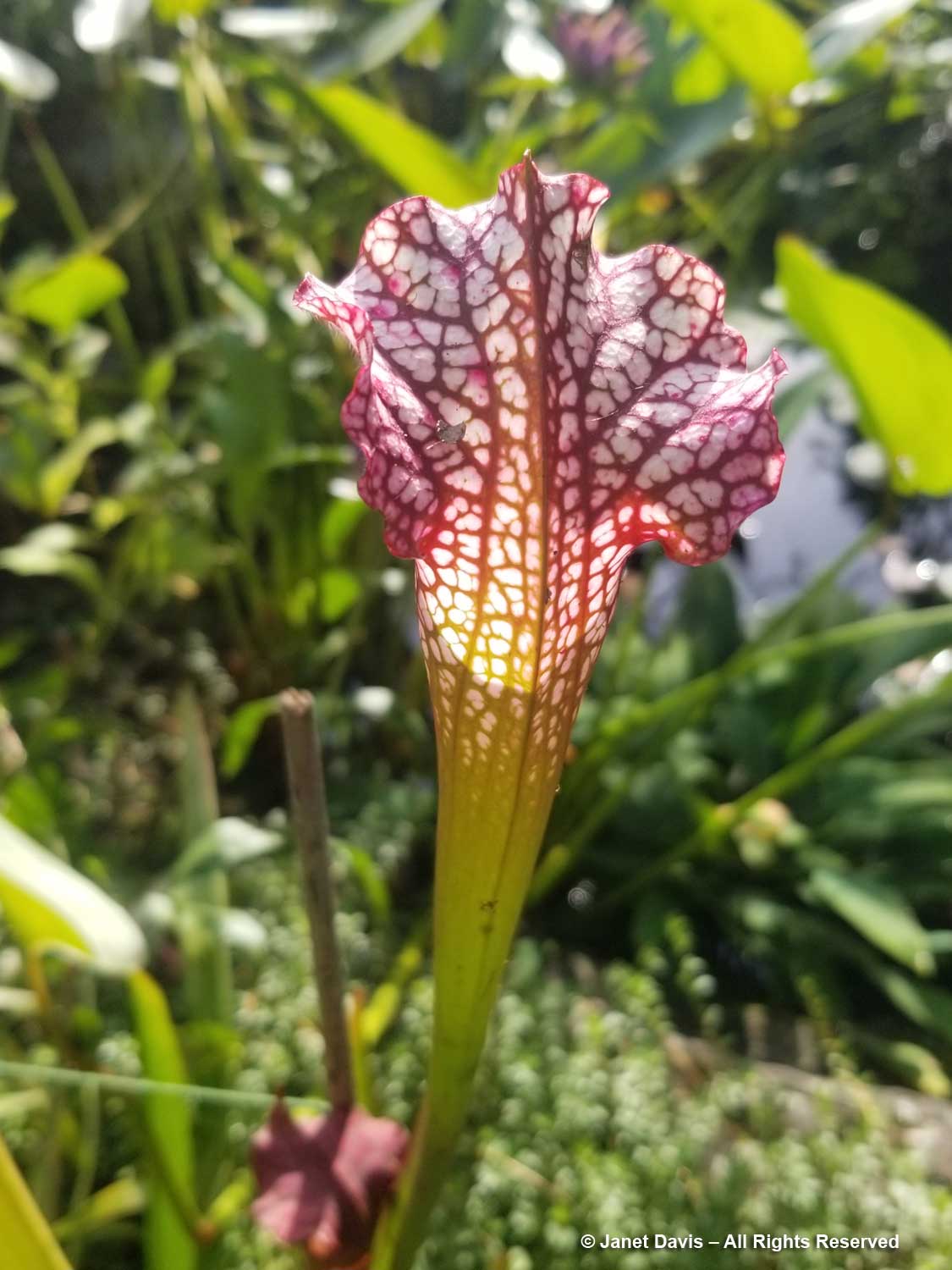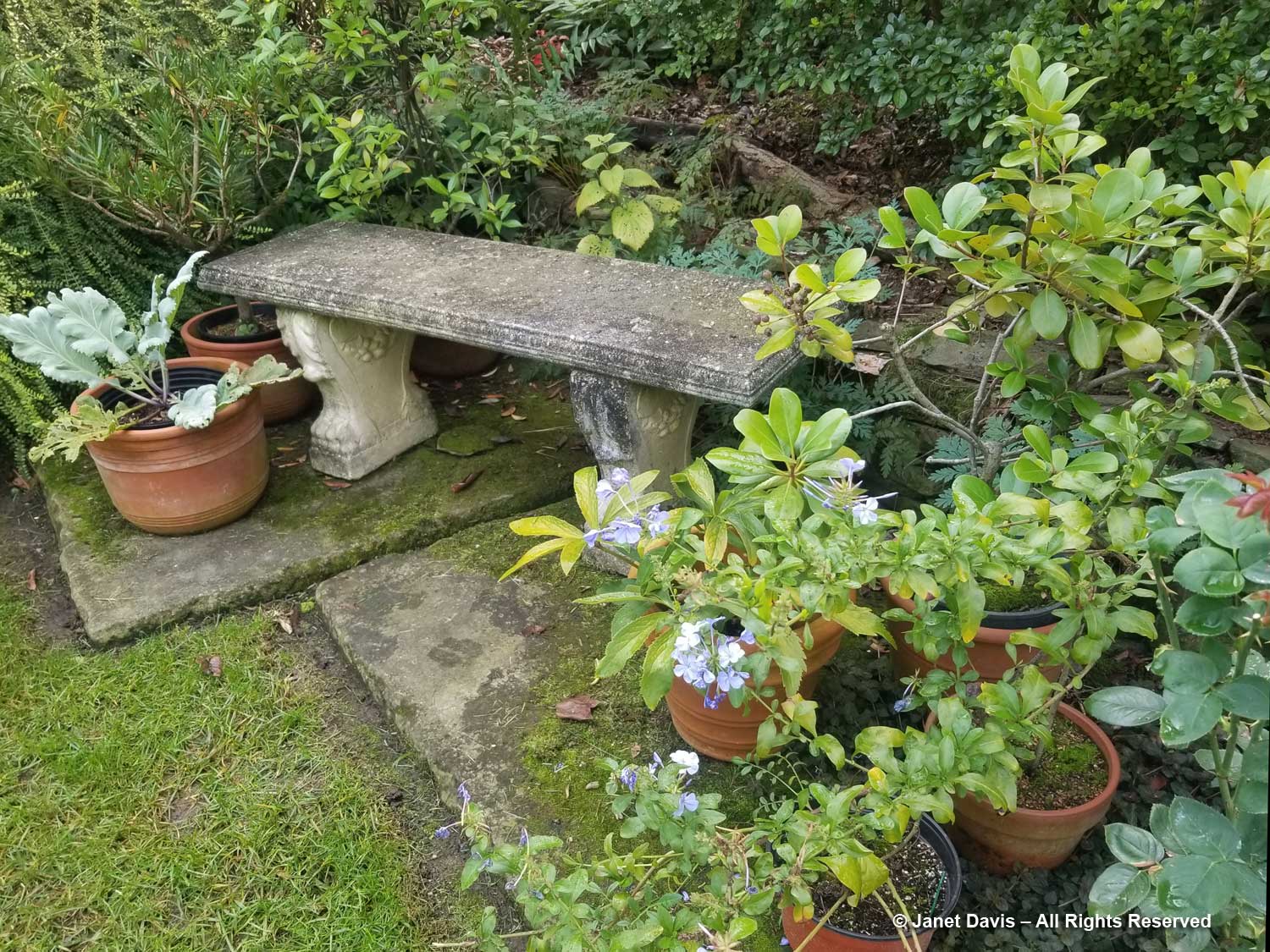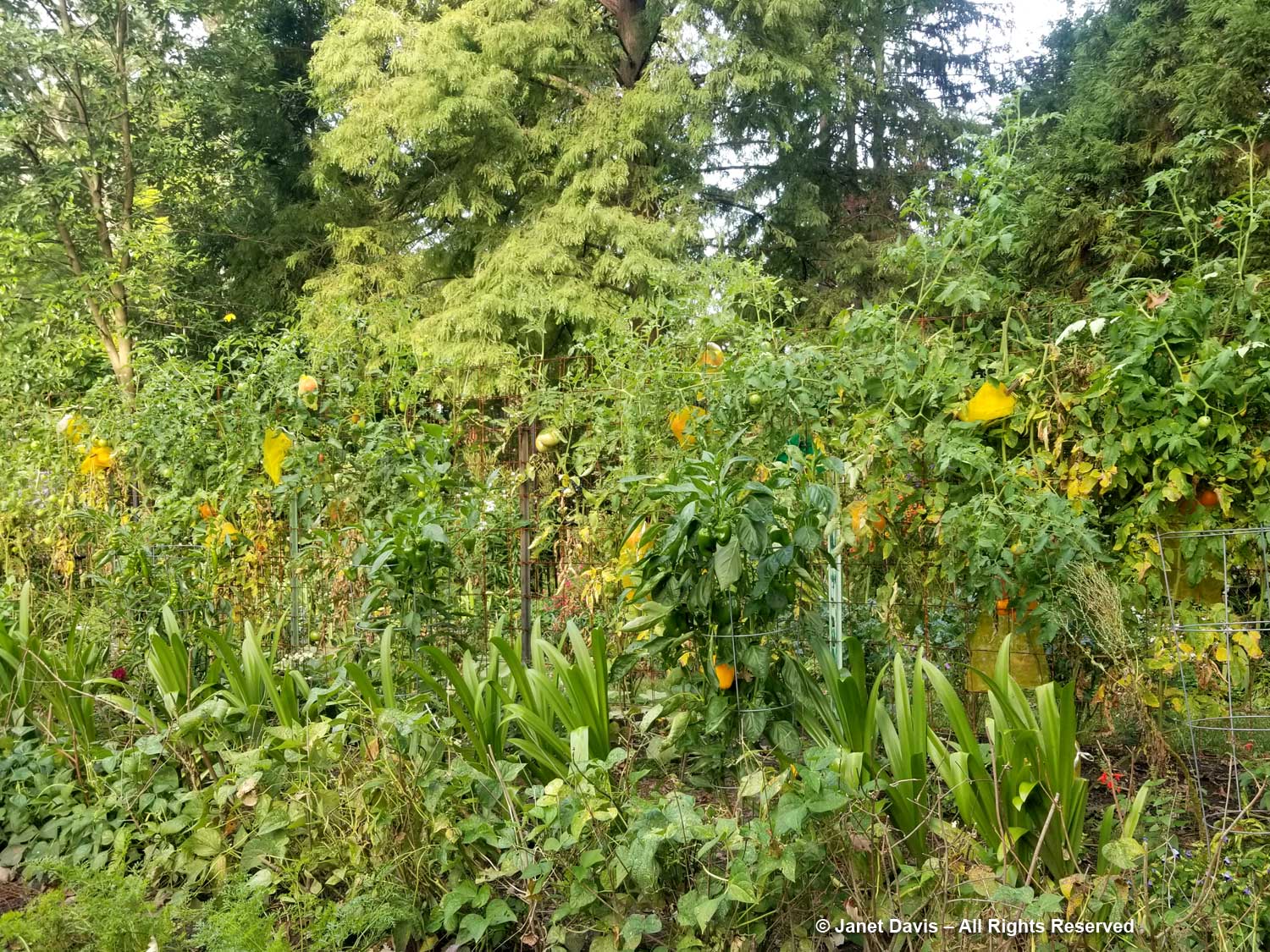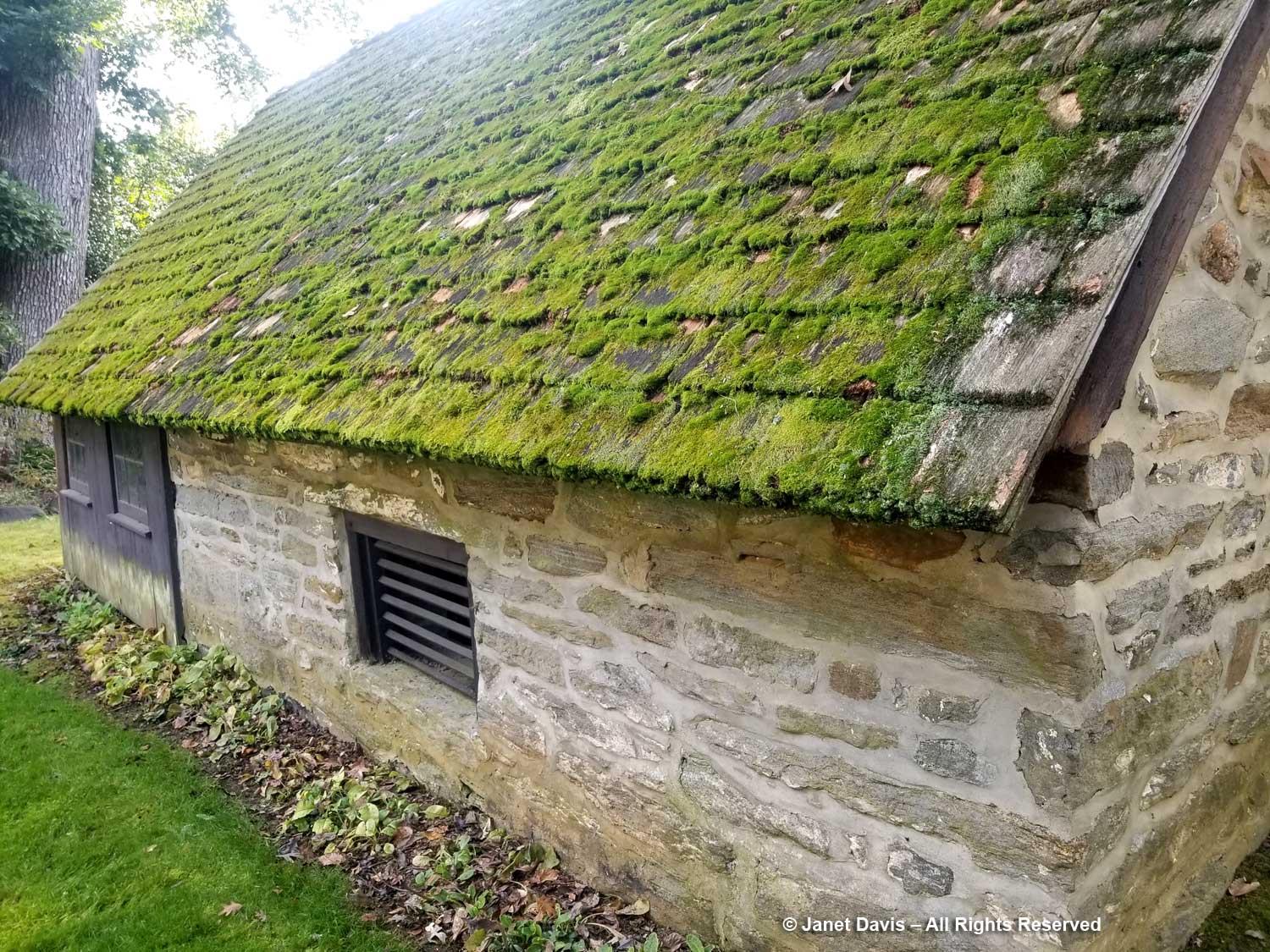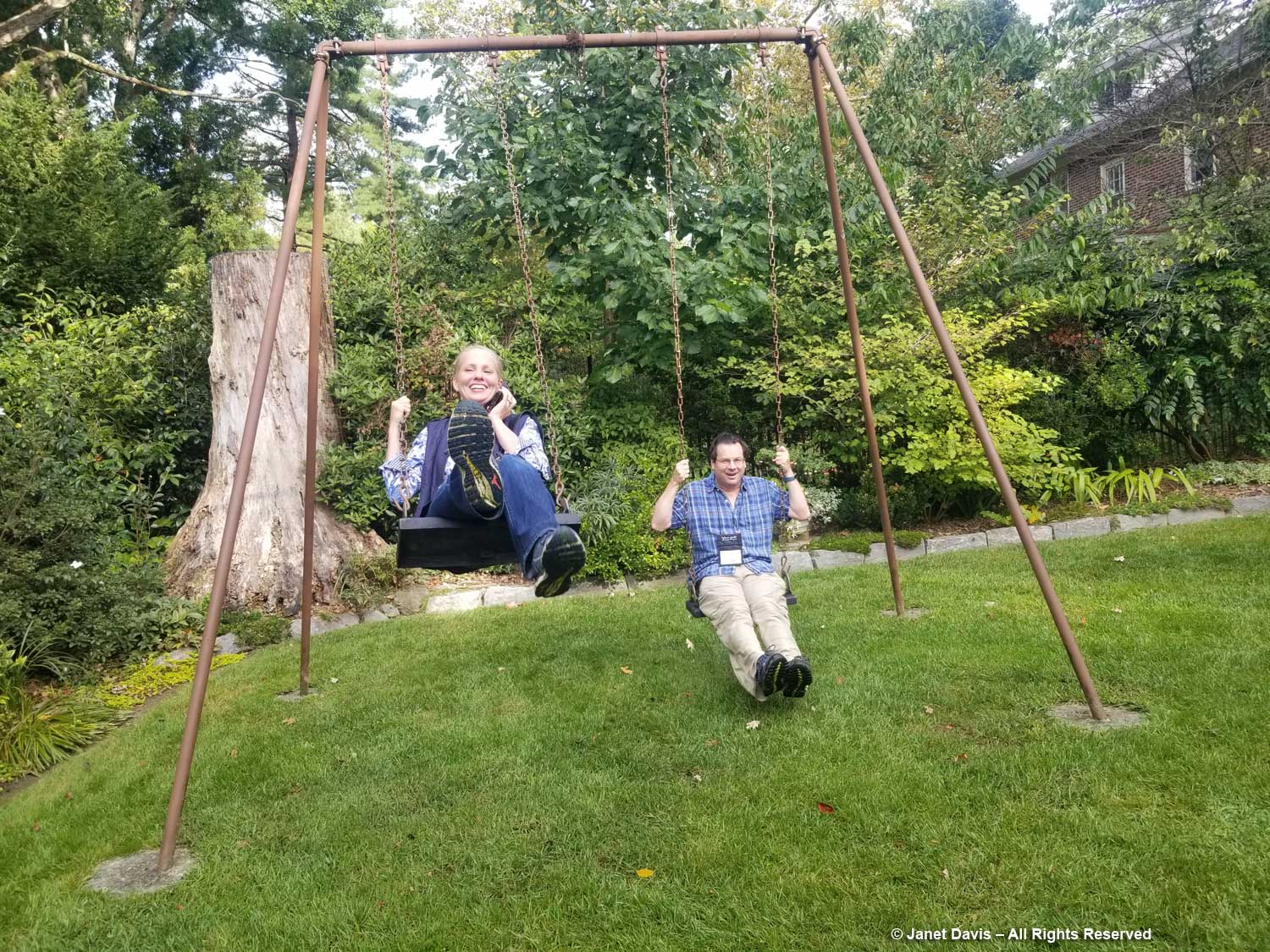In the past decade, I’ve had the great joy of travelling in the United States — along with dozens of other garden writers and photographers from far and wide — to participate in an event called the Garden Fling. It’s allowed me to see the finest private and public gardens in Washington DC, Austin, Denver and Philadelphia. This year the Fling was centred in Washington State’s Puget Sound region, and was organized by Camille Paulsen, with help from a fine team of volunteers from Tacoma and Seattle and her own husband Dirk. So my first blog honours the gorgeous Paulsen garden in Puyallup, Washington overlooking the Orting Valley and lofty Mount Tahoma/Rainier. Let’s begin at the handsome entrance to the front door……
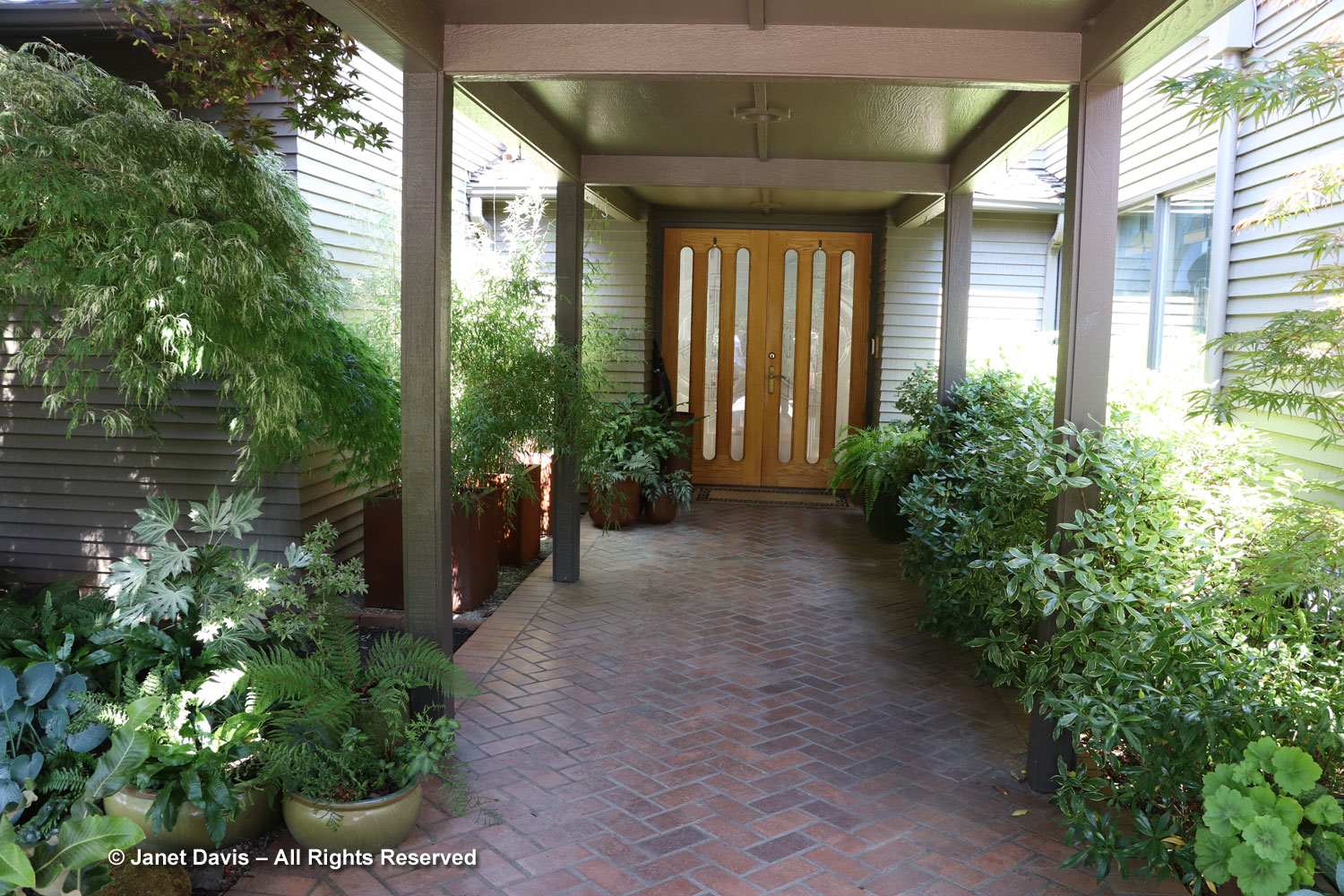
…… where you can already see Camille’s penchant for textural plant combinations, especially in shade.
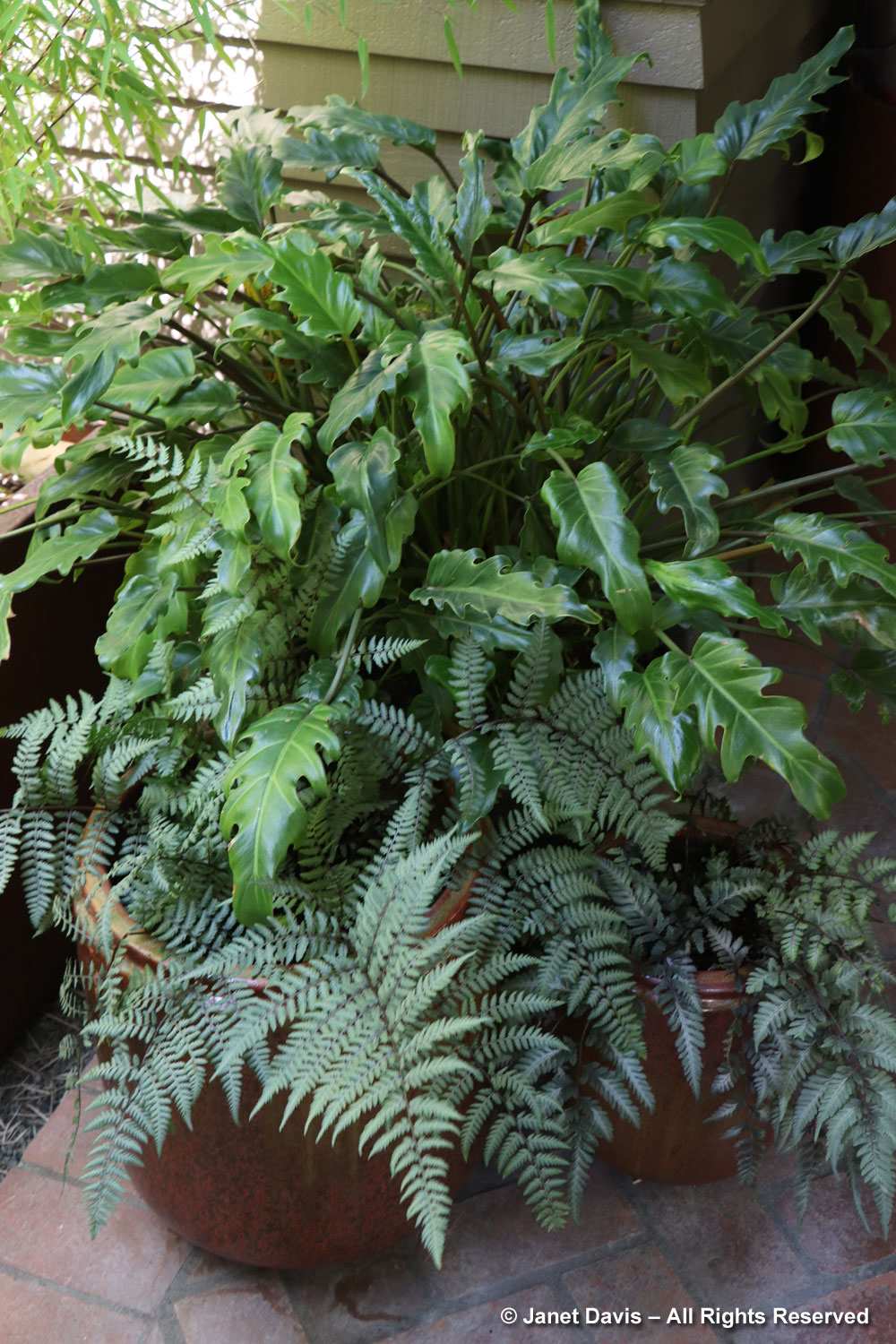
The front garden also features a waterfall and tiny stream….
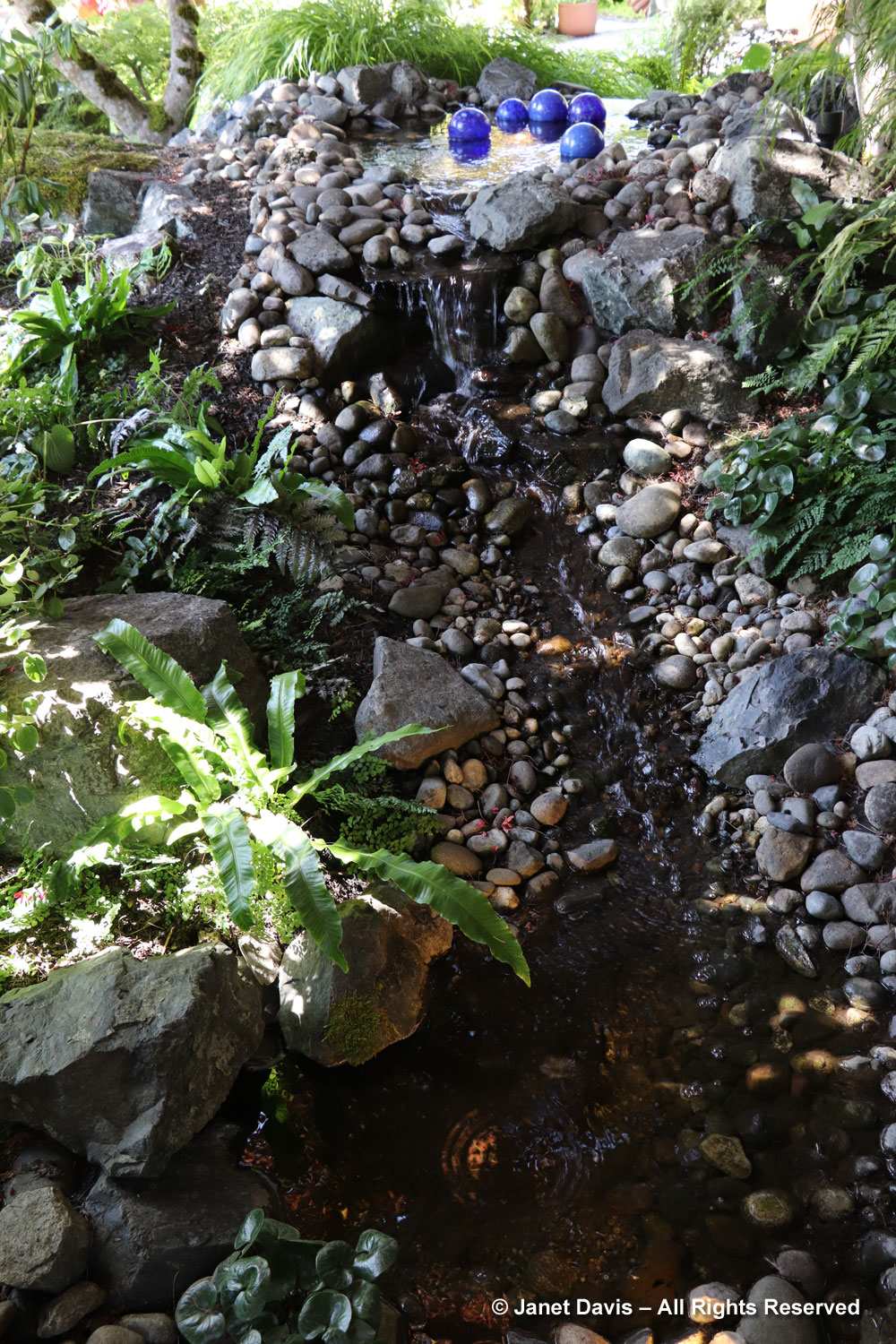
…. leading to a large, naturalistic pond stocked with koi. Dirk Paulsen, an airline captain, has done much of the hardscaping and woodworking in the garden.
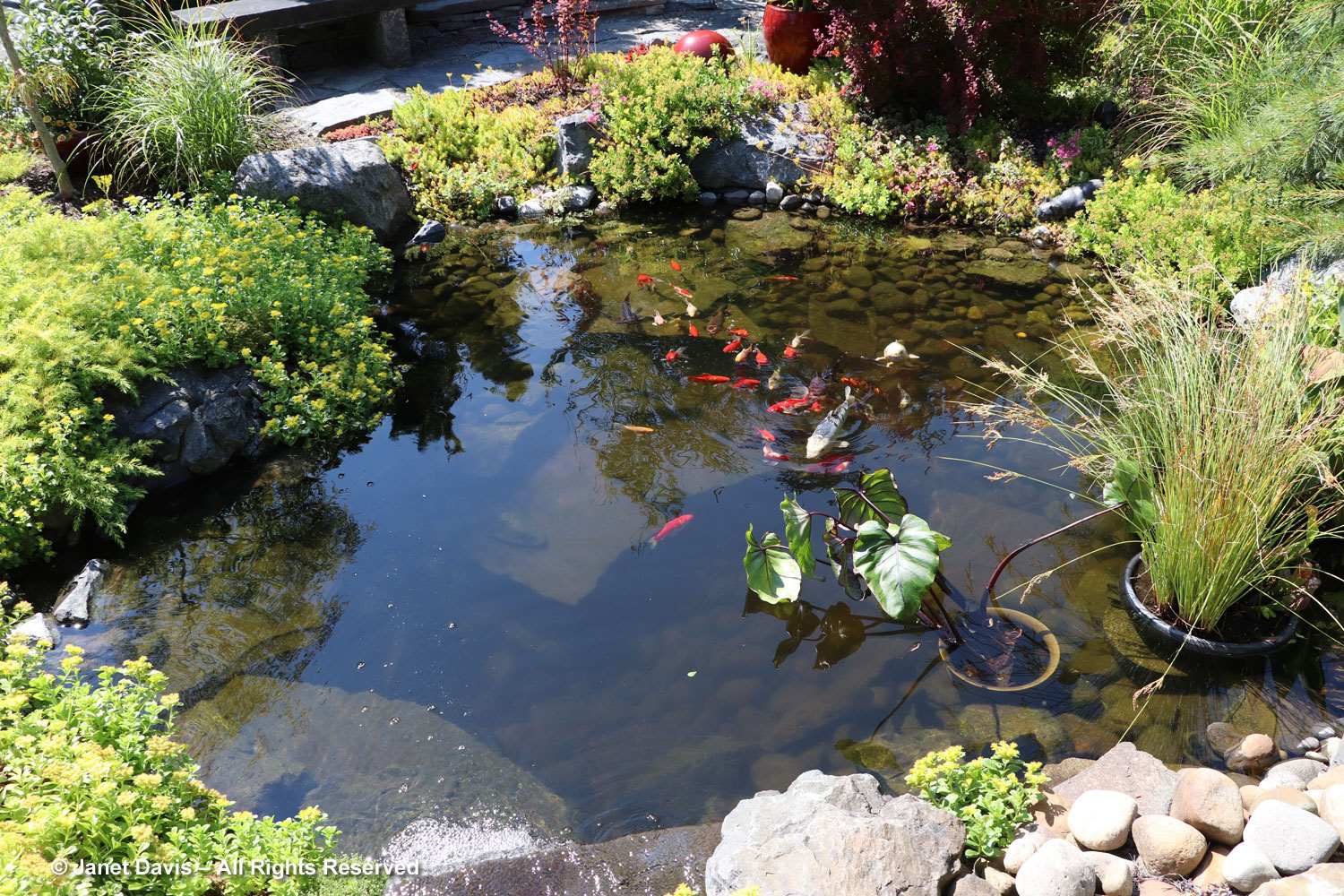
Start walking the path through the side-yard to the right of the house and you come to a large, gnarled log that Camille found in her travels nearby and had delivered to the garden. (She uses driftwood, too.) In its hollow end is western maidenhair fern (Adiantum aleuticum).
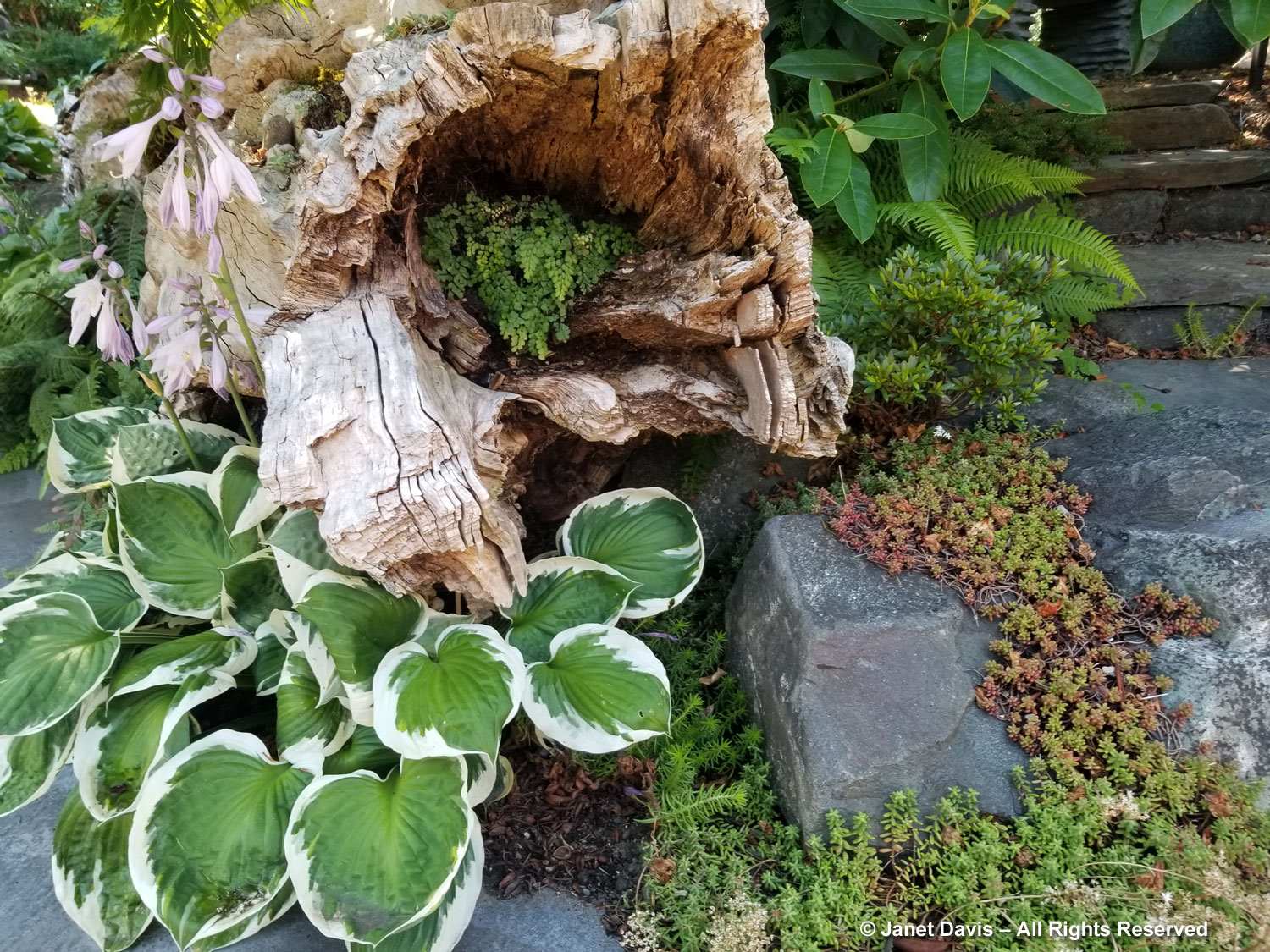
Moss grows in nooks and crannies along the log and beneath it is are ferns, hostas and other plants – demonstrating Camille’s deft touch with texture.
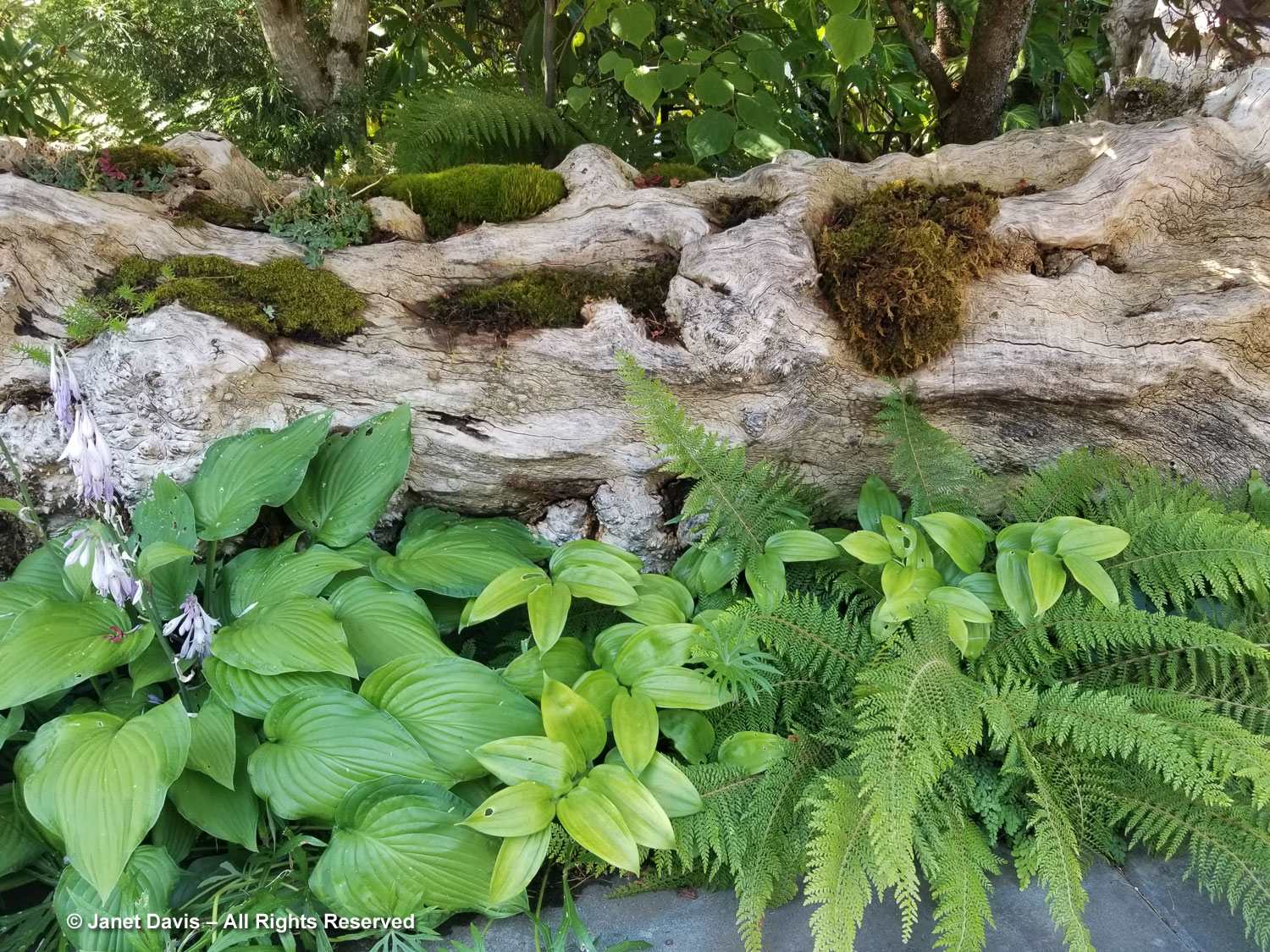
I love this hollowed-out, hanging birch log planted with orchids and a staghorn fern.
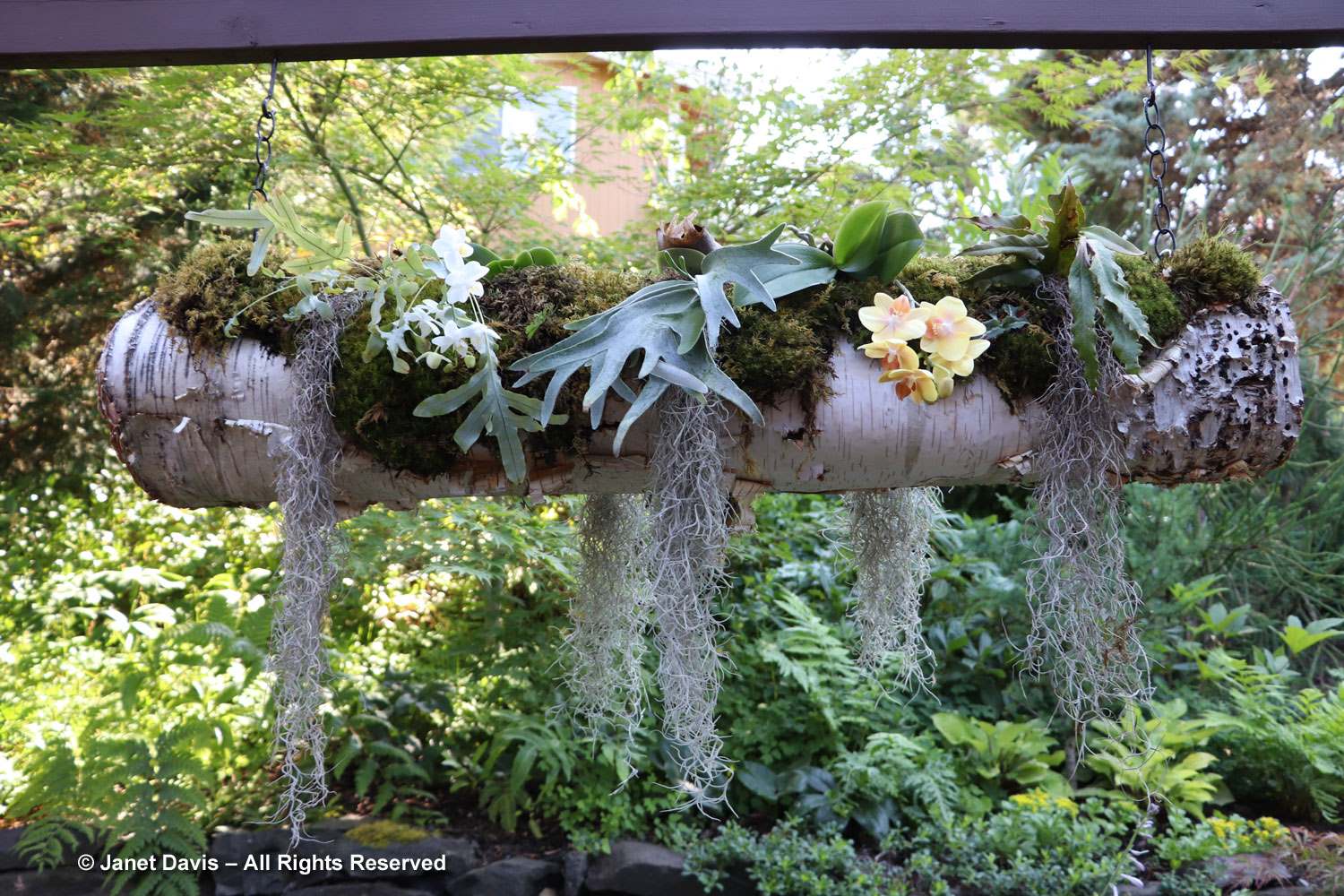
Hardy impatiens (I. omeiana) is one of countless plants chosen for season-long foliage interest, even when out of flower.
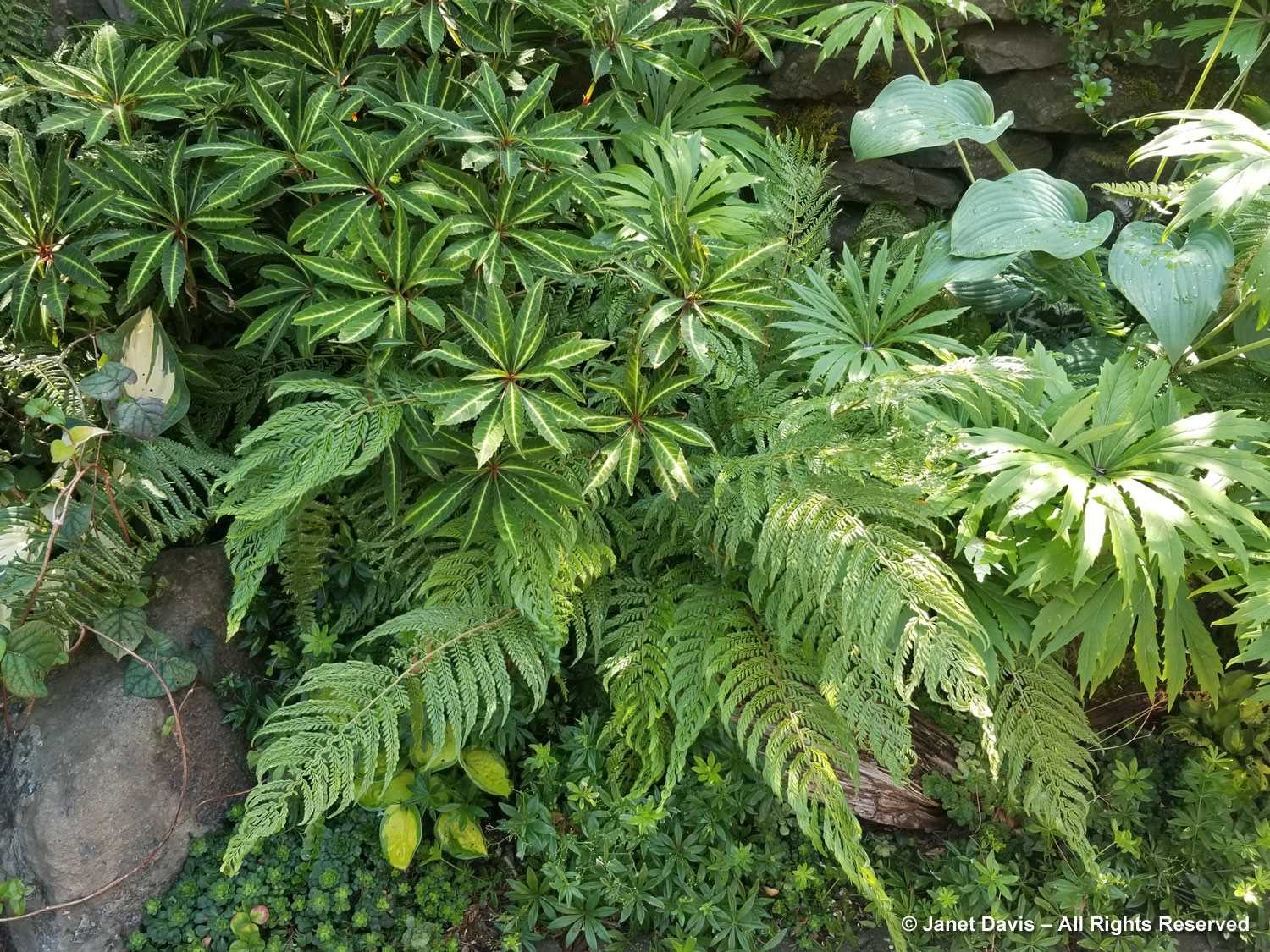
I believe this is lovely Japanese maple is A. palmatum ‘Butterfly’.
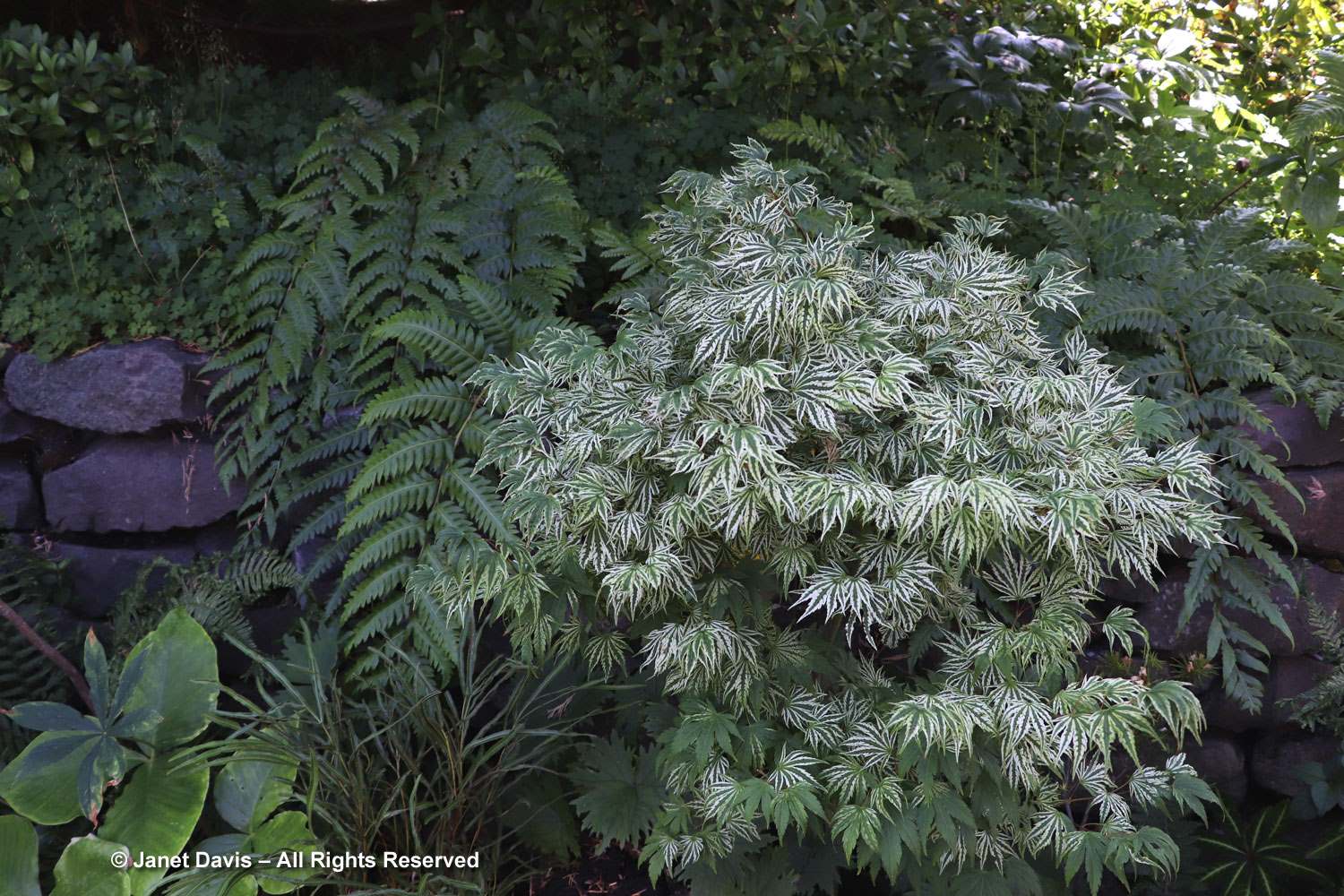
Further along, keeping company with a rhododendron and ferns, is a variegated dove tree (Davidia involucrata ‘Lady Sunshine’).
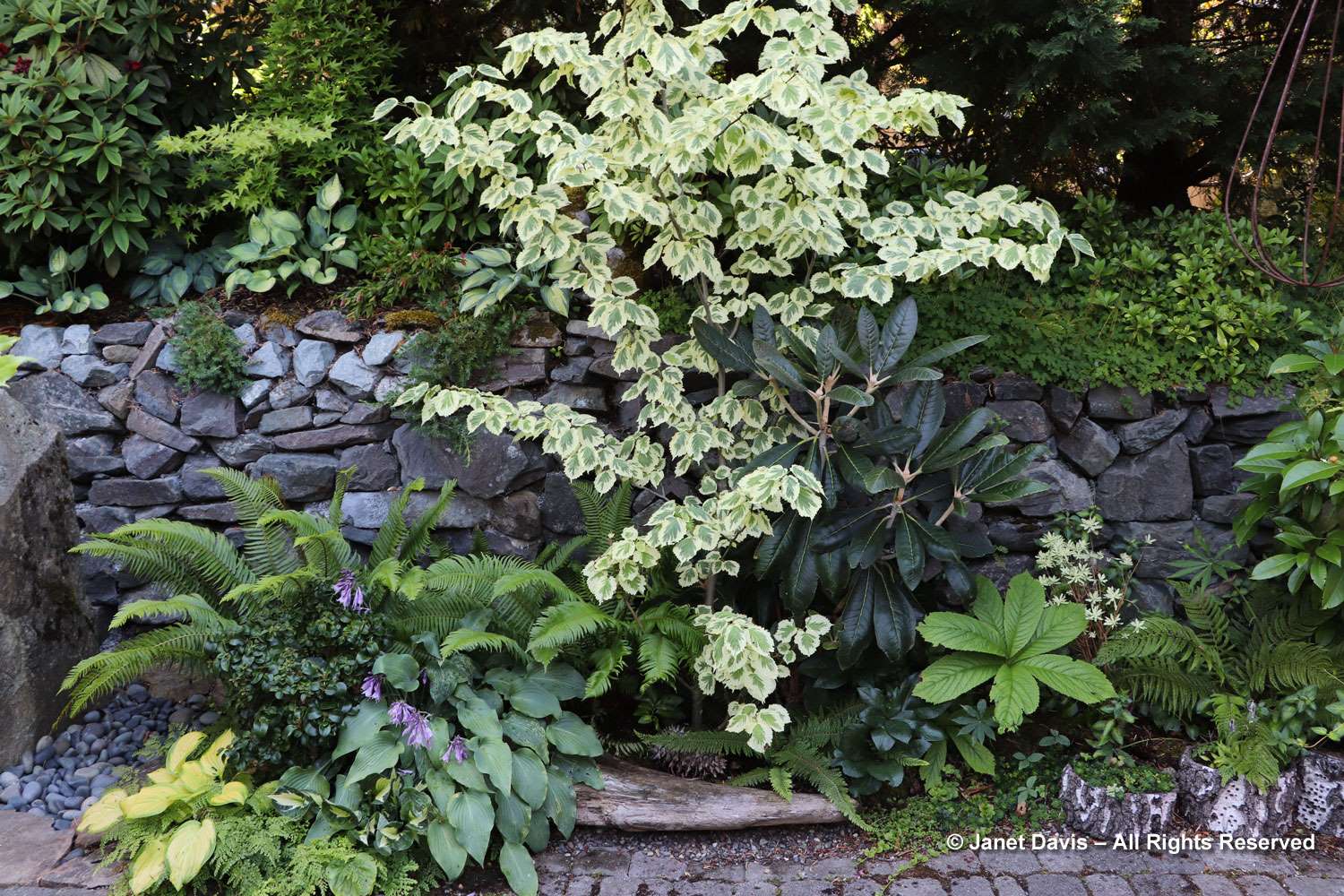
Camille has shared online that her garden contains approximately one hundred Japanese maples and an equal number of conifers. That’s serious ‘collector’ level!
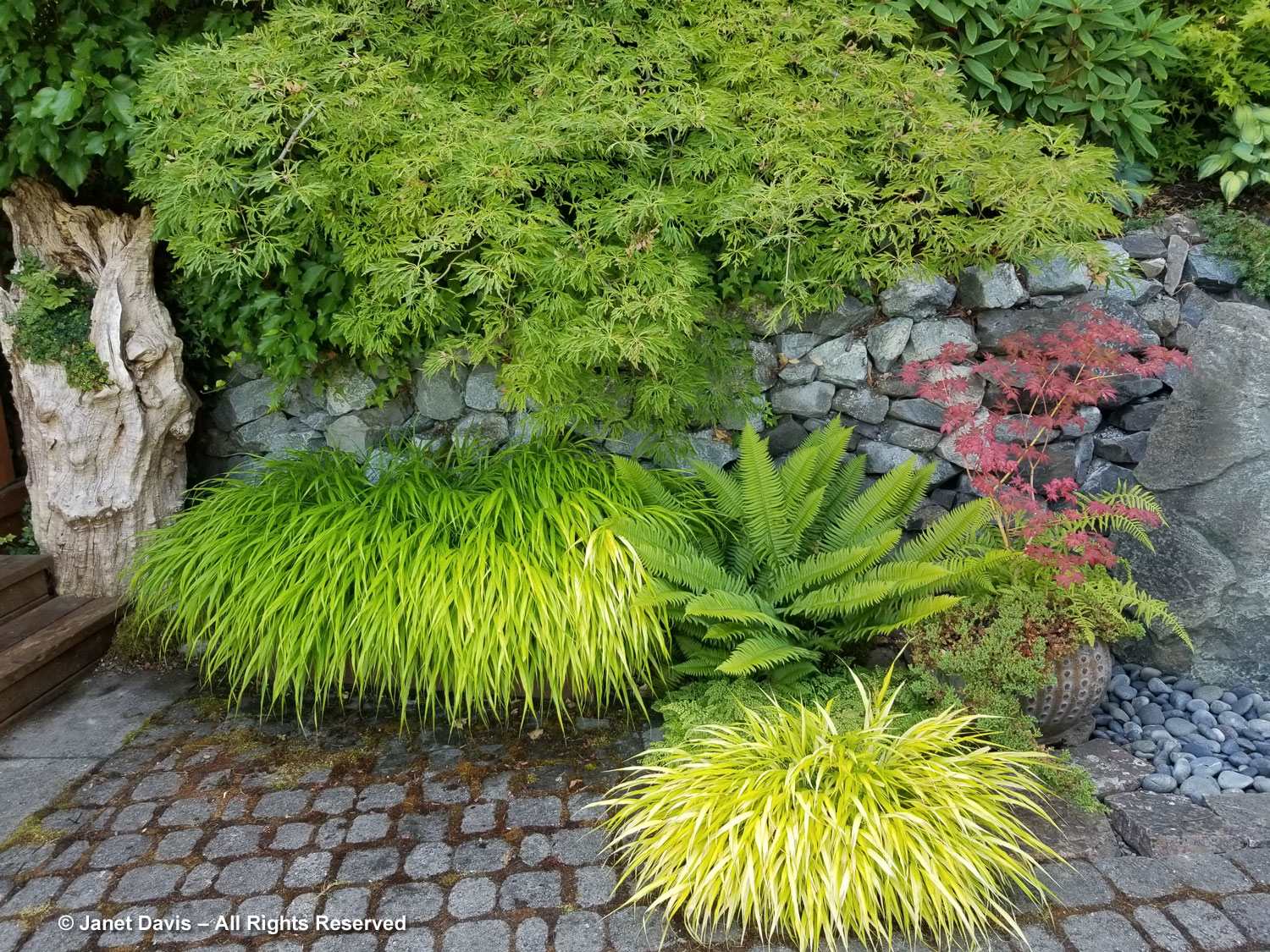
This basalt rock fountain is one of many water features in the Paulsen garden.
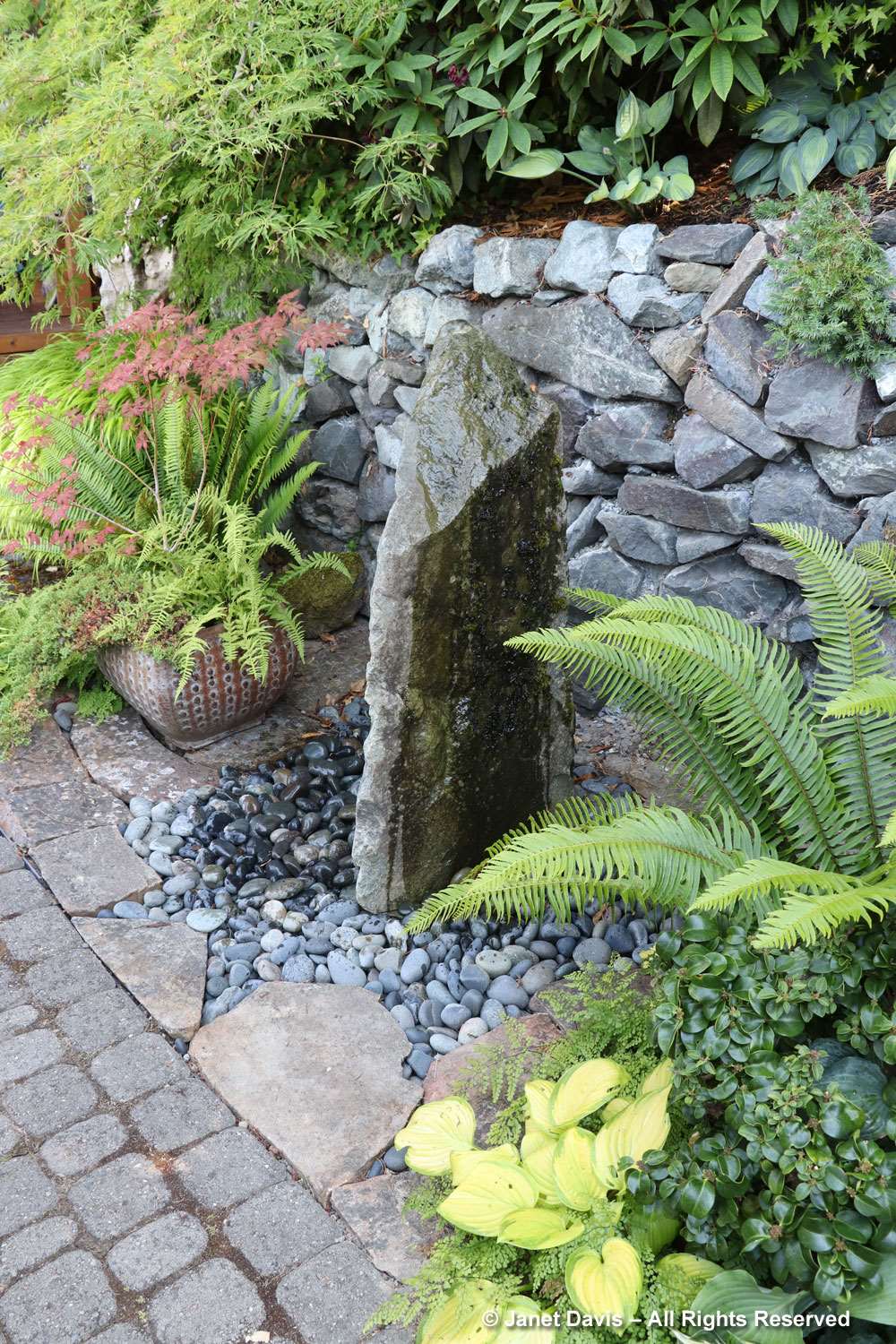
Rodgersia was bearing rosy-red seedheads.
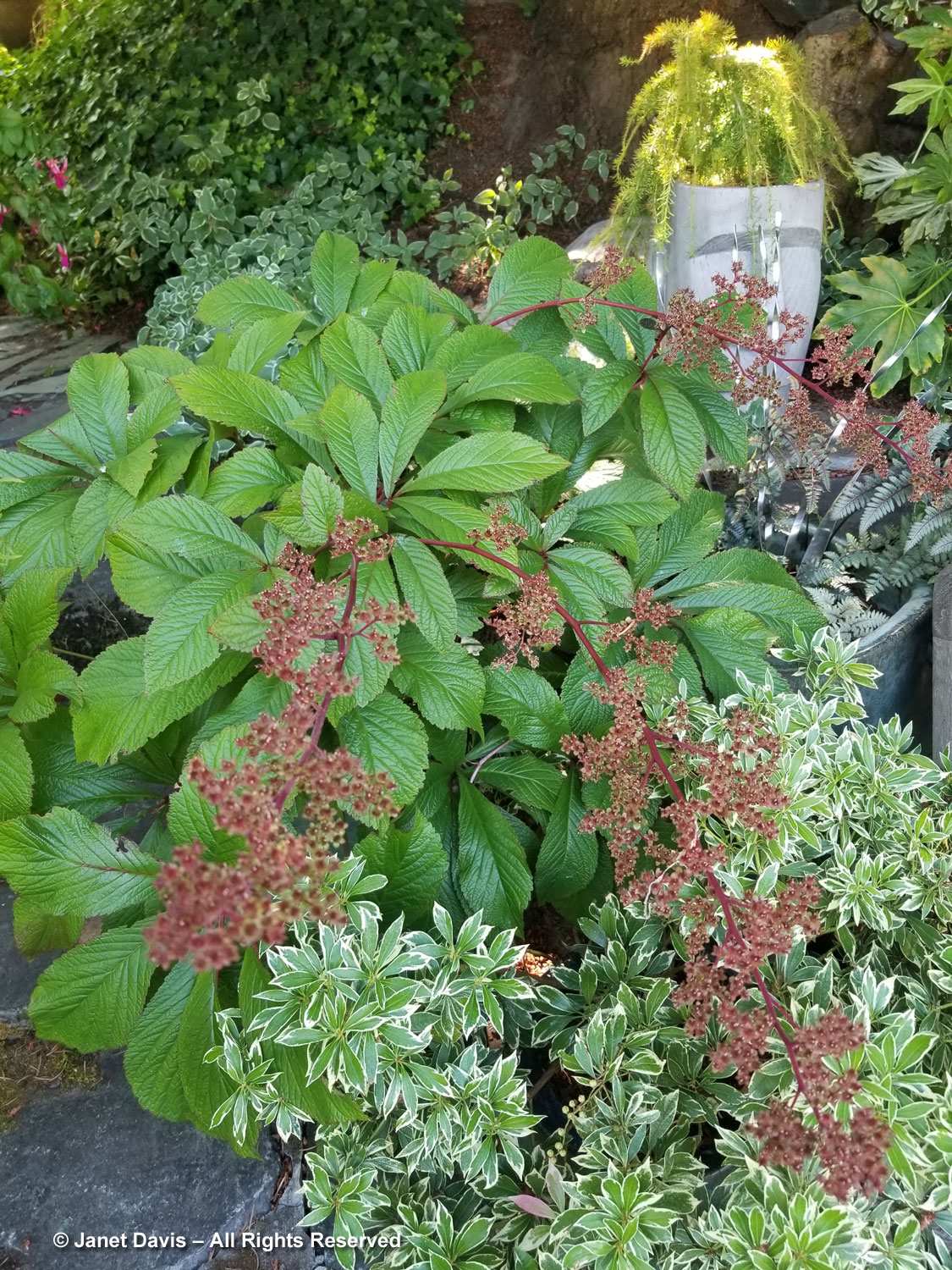
Another gnarled stump offers a niche for ferns and succulents.
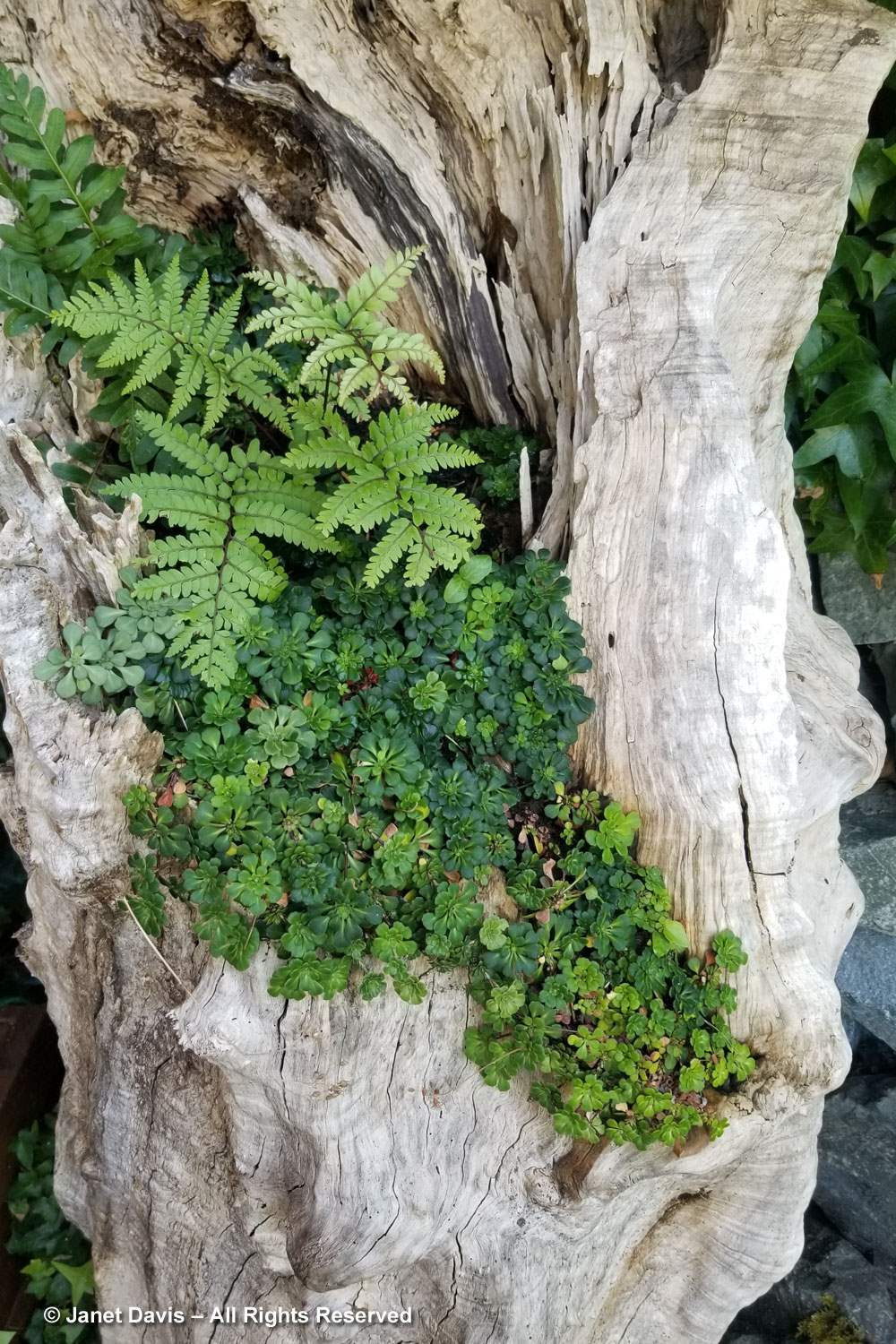
Camille had lots of pressure with two buses full of garden tourists, four days of carefully orchestrated scheduling and her own garden to prepare, but she handled it with aplomb – and a beautiful smile.
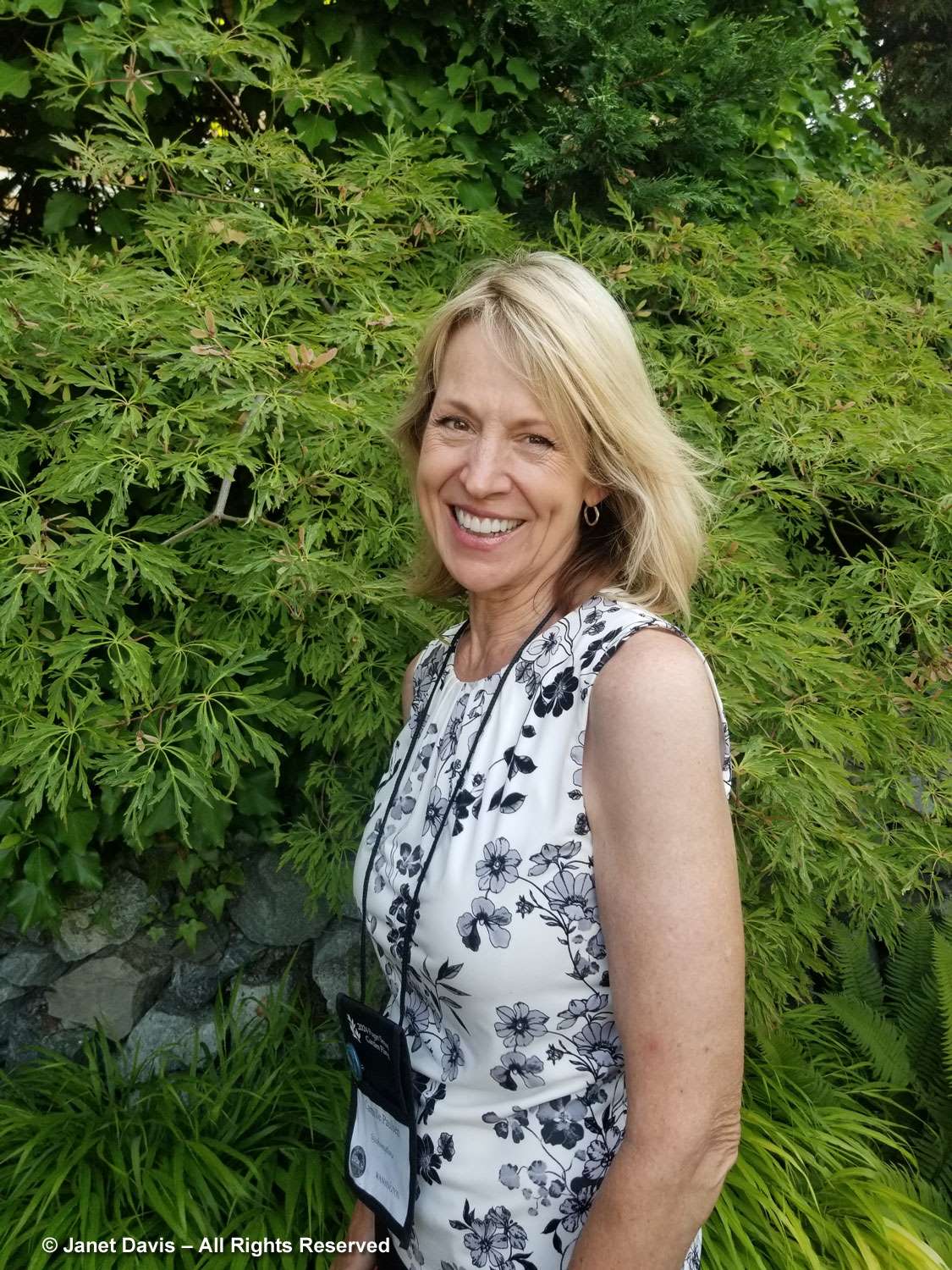
Tahoma or Mount Rainier is an active 14,411-foot (4,392 metre) stratovolcano and the highest peak in Washington State. The view from the Paulsen garden is spectacular – especially when Camille captures it on a clear day. (My so-so view was on a very hot day when there was haze above the snowy peak and the nearby Orting Valley). Though its last volcanic activity was in the 19th century, it has been called a “Decade Volcano”, one of 16 worldwide so named because of its potential destructive eruption capacity and its proximity to densely-populated regions. In fact, many of the surrounding communities are built atop old “lahars” from Rainier, i.e. volcanic mudflows triggered by melting of the mountain’s glacial ice. The most famous was the Osceola Mudflow some 5,000 years ago.
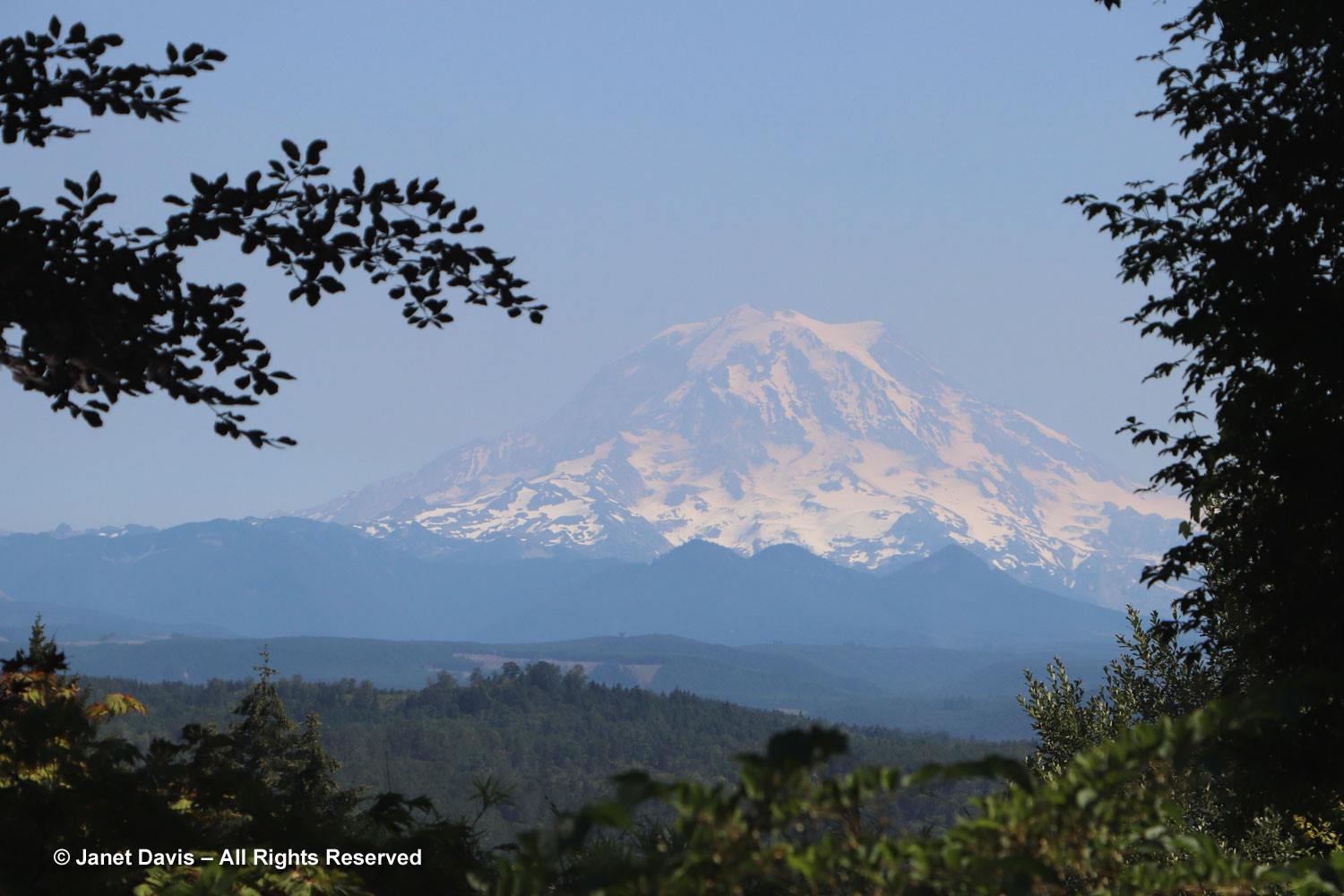
The closer view at this point, glimpsed through drifts of Mexican feathergrass and an iron sculpture, is a lower level swimming pool below the ferny, wine-red foliage of Albizia ‘Summer Chocolate’ .
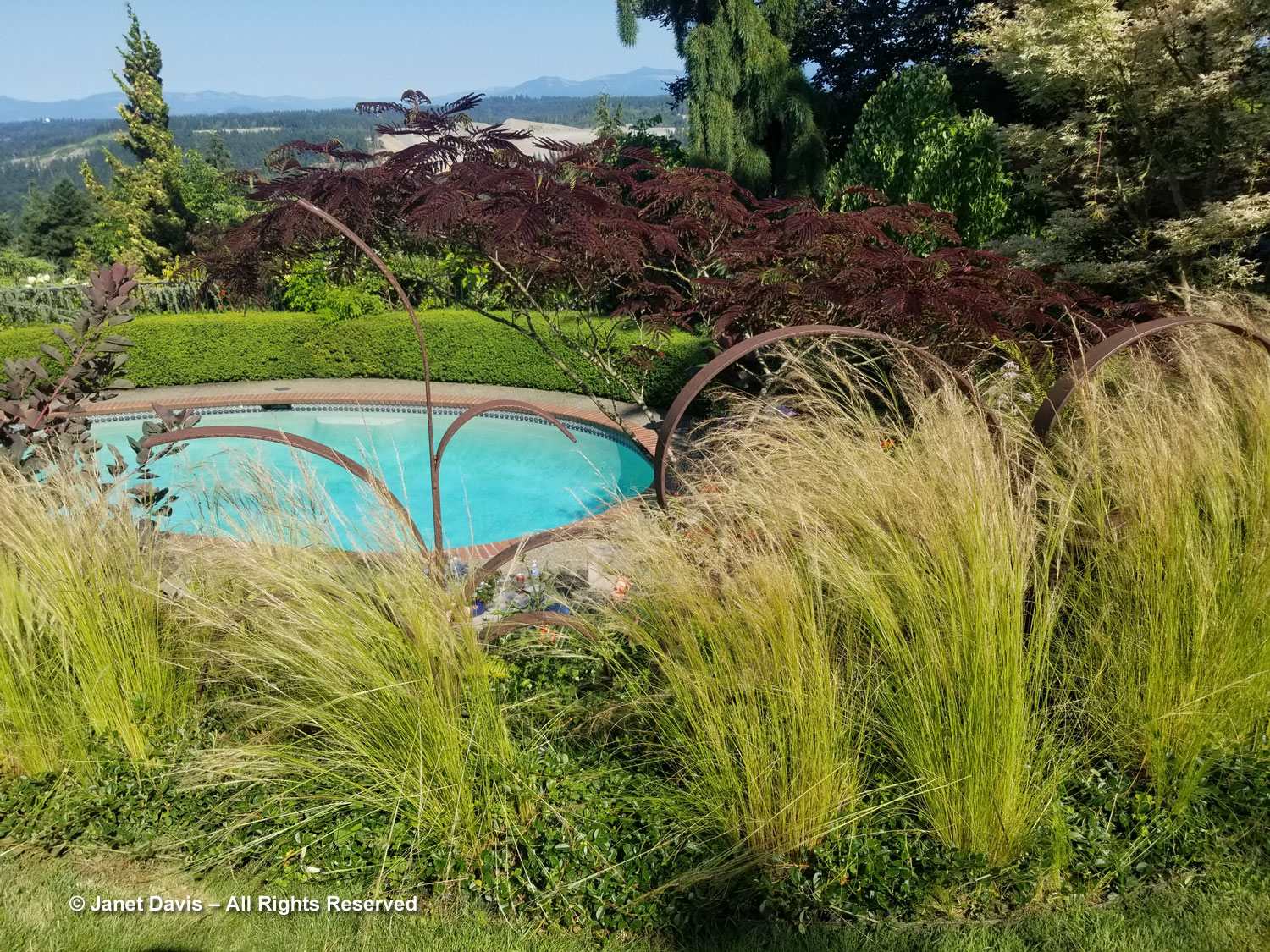
Colourful dahlias in a raised bed light up the area behind the house.
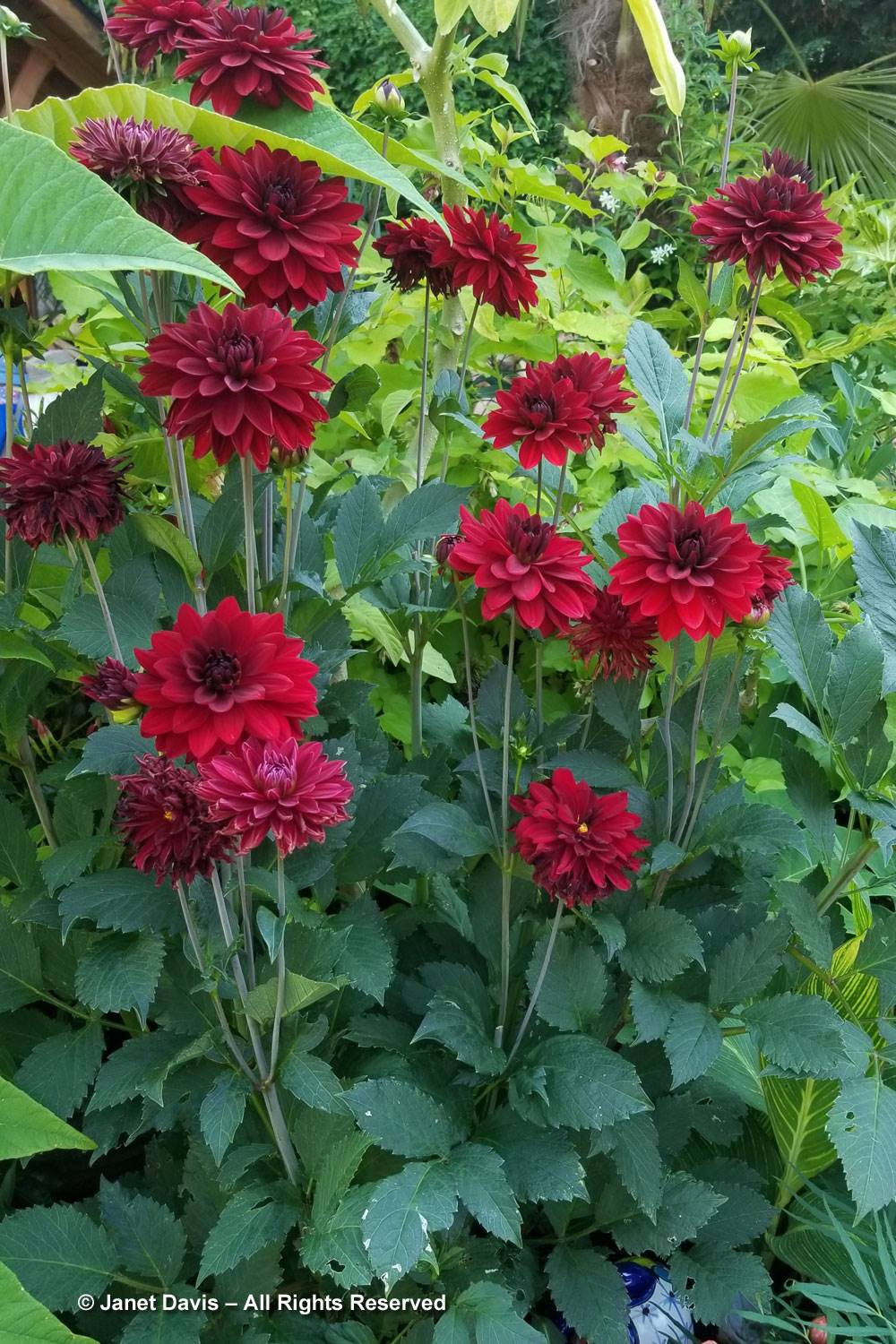
Corten planters behind Camille’s greenhouse hold a mix of culinary herbs and flowers.
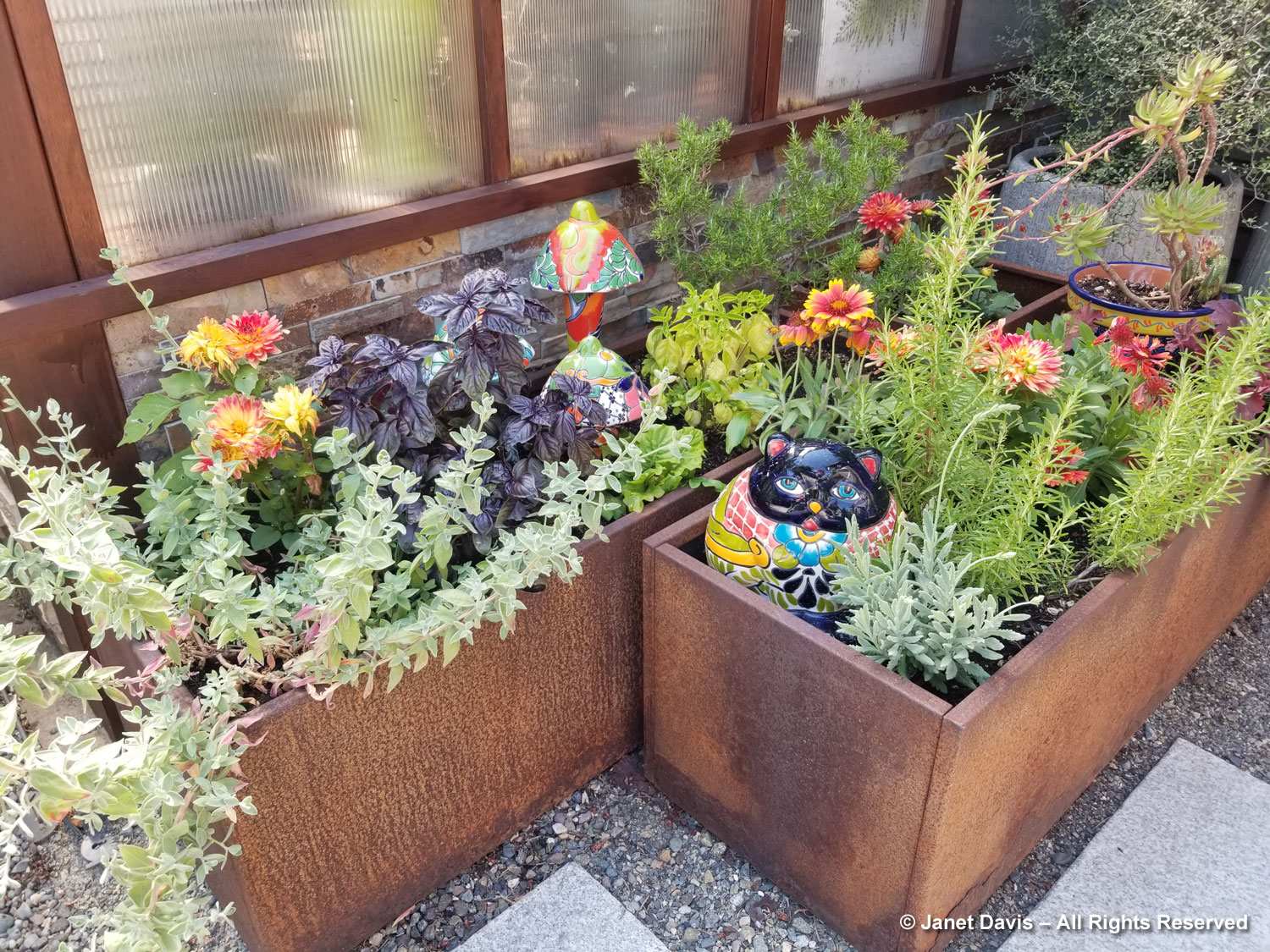
More pots feature tropicals and succulents.
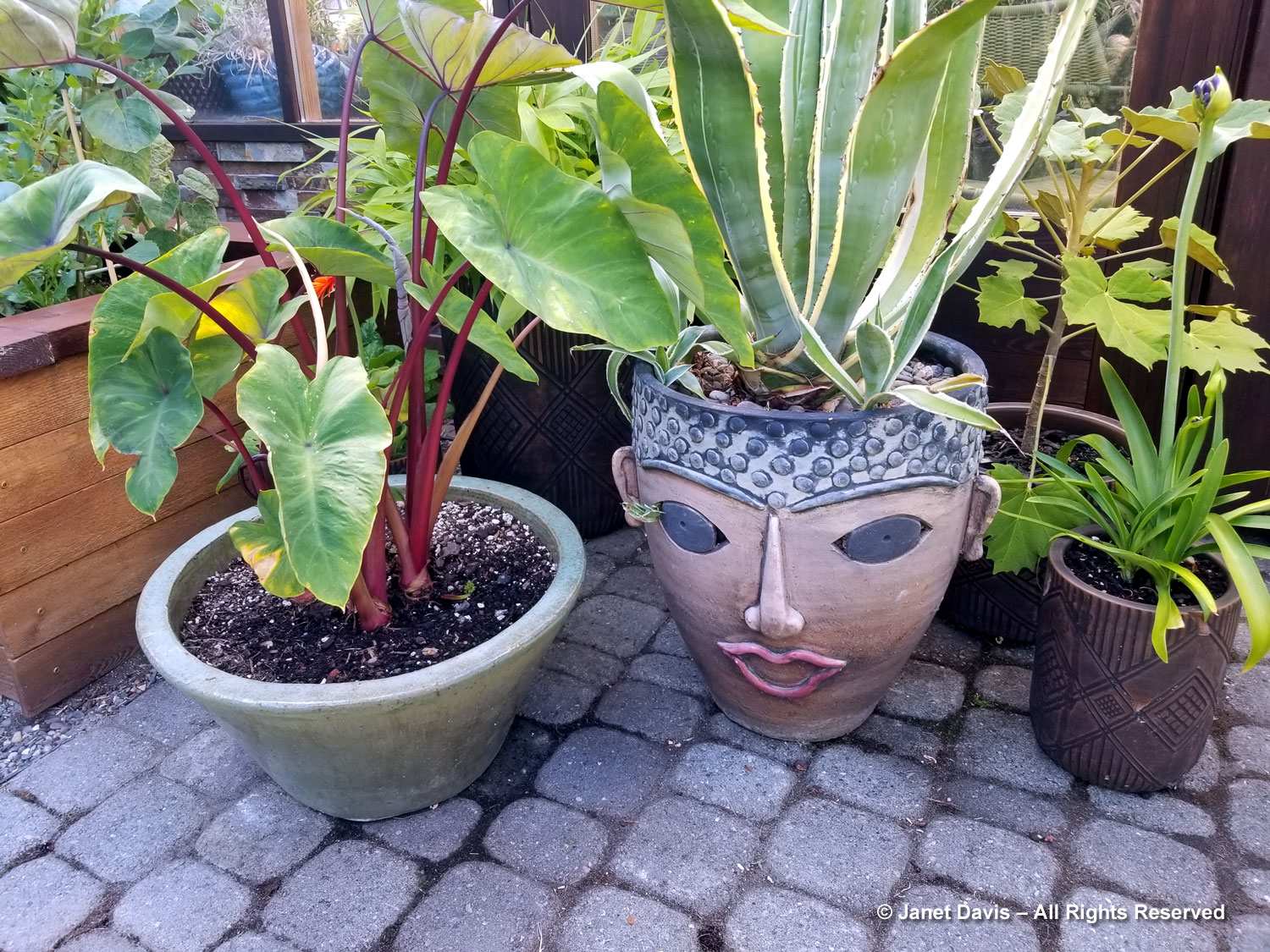
It’s not surprising that in the land of renowned, Tacoma-born glass artist Dale Chihuly, colourful blown-glass ornaments play a role in many Puget Sound gardens, including these pendants hanging from a ‘Twisty Baby’ black locust (Robinia pseudoacacia).
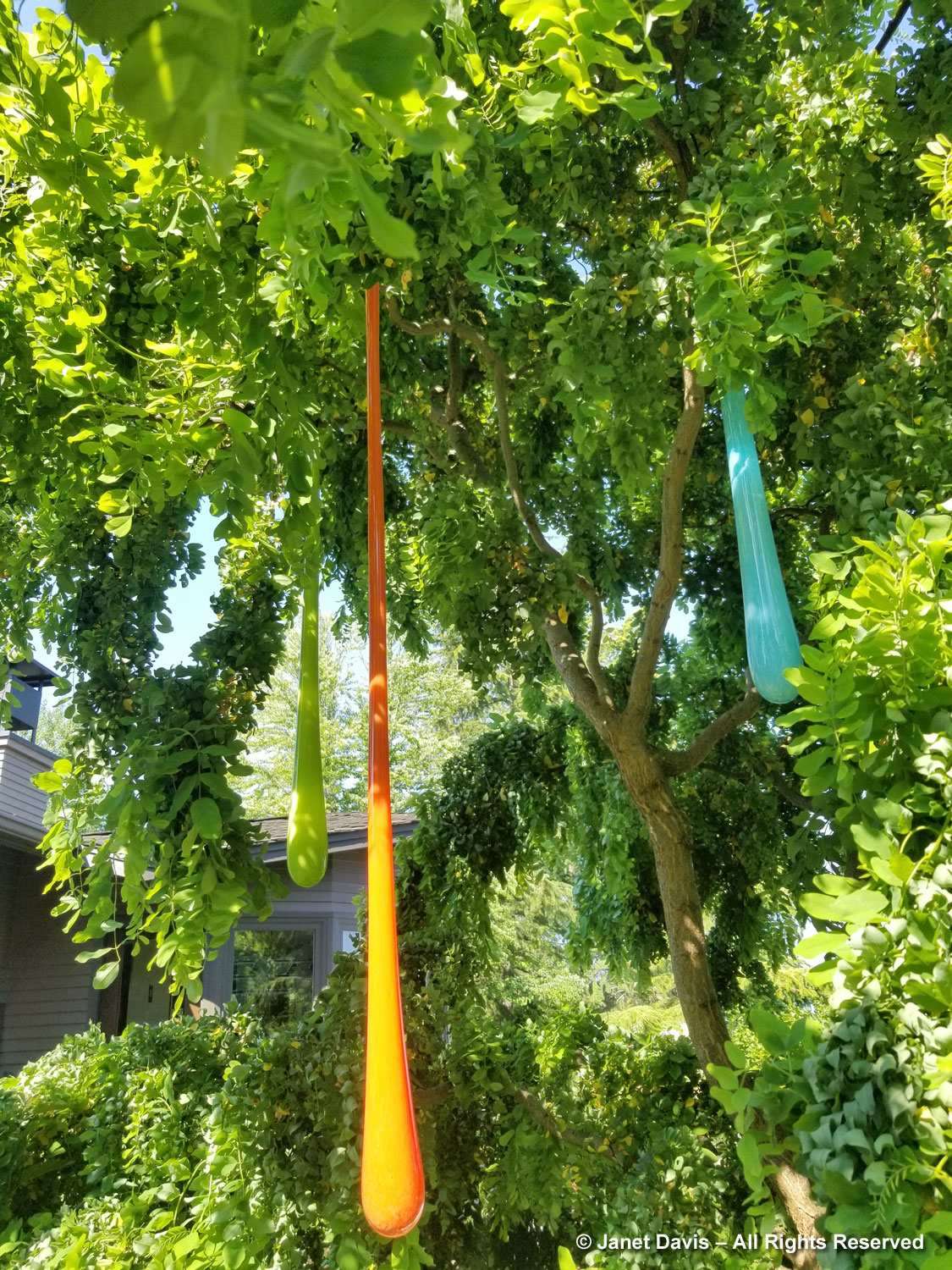
Stone stairs lead to the swimming pool level – a journey past more maples, rhododendrons, ferns and shade plants.
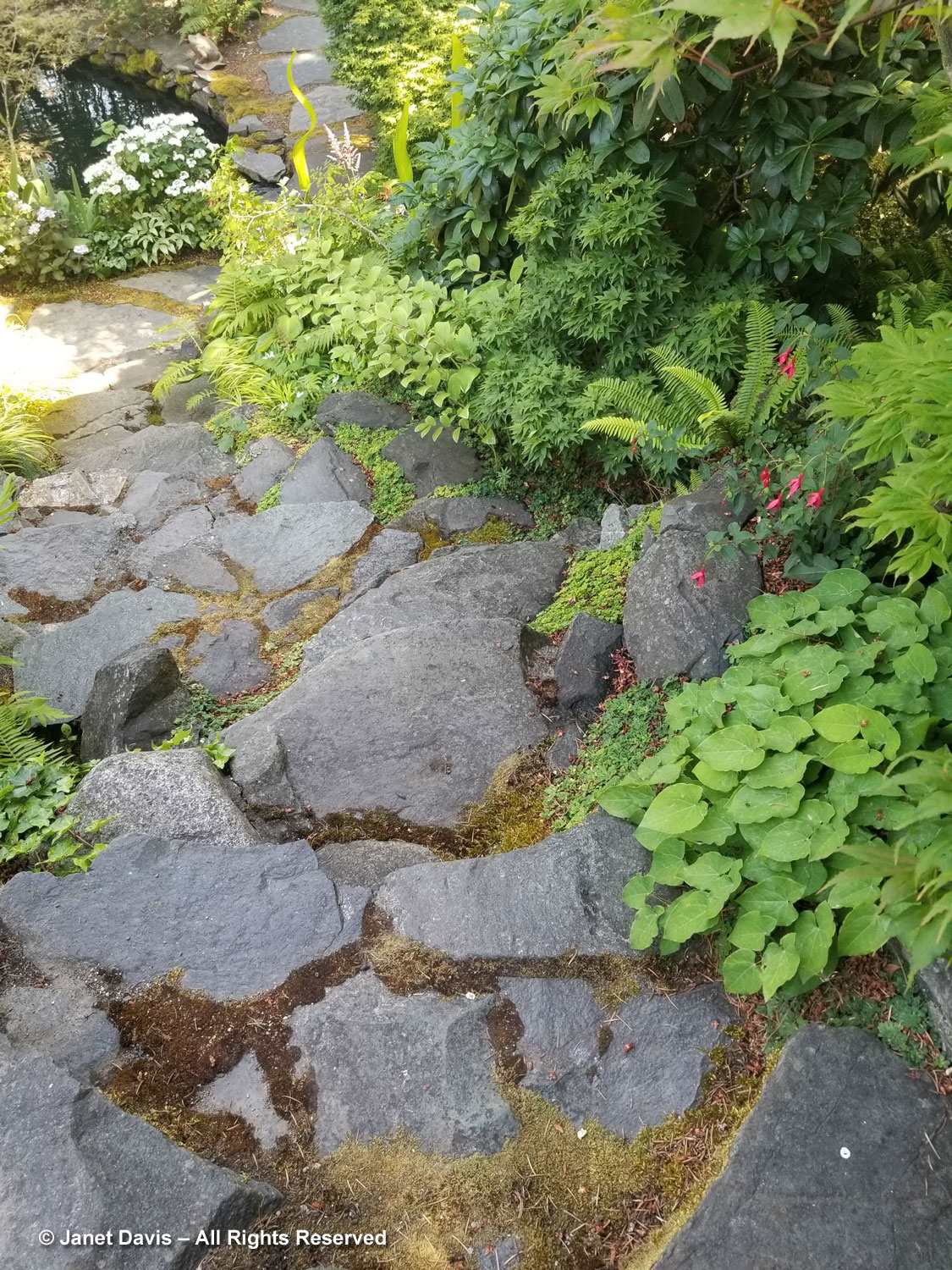
I like the chunky bamboo railing leading to the lower level.
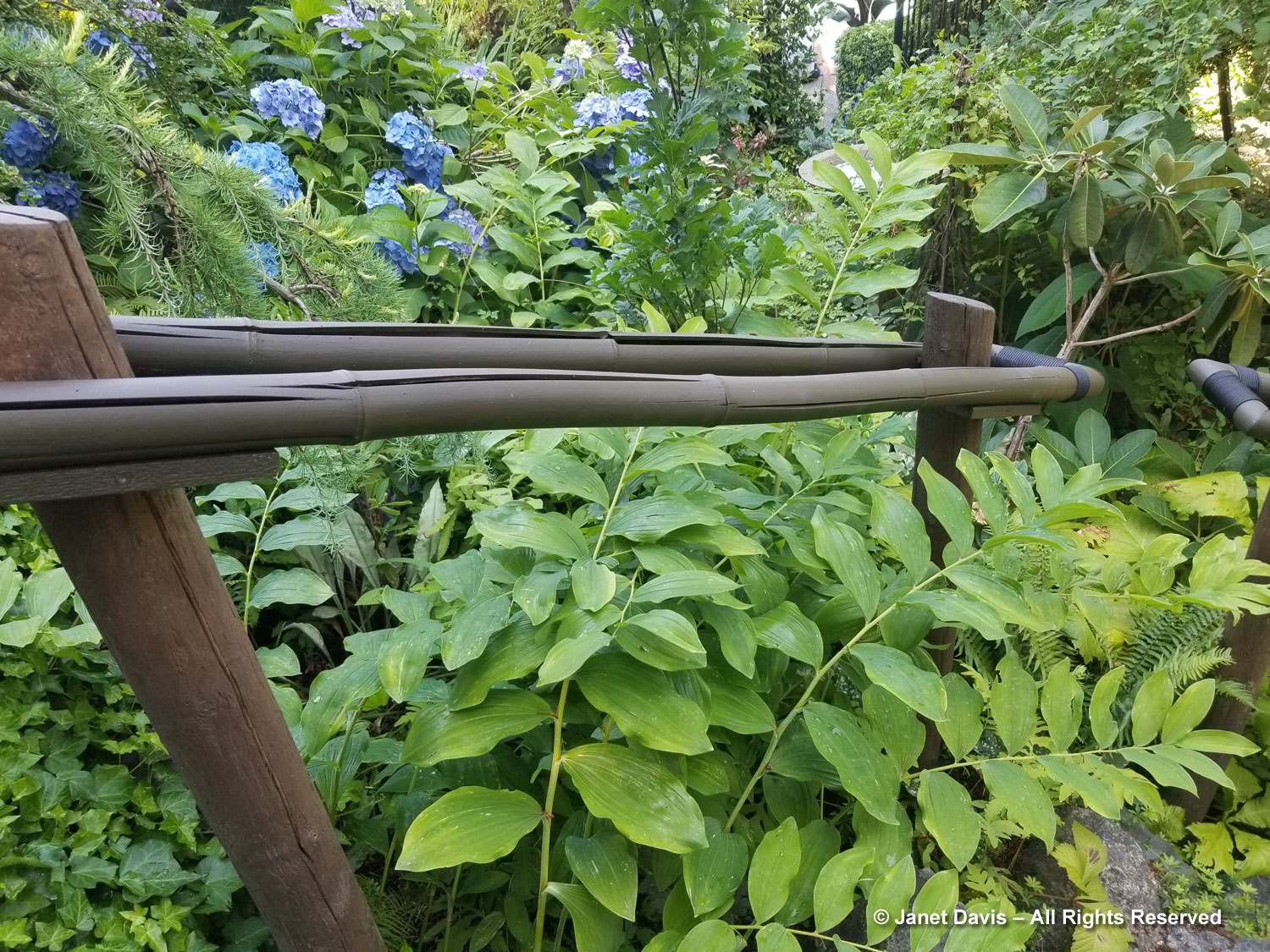
As I said, Camille’s garden is one of the finest examples I’ve seen of textural plant combinations, including white-flowered chameleon plant (Houttuynia cordata) and variegated Solomon’s seal (Polygonatum odoratum ‘Variegatum’) with ferns, hostas and tiny succulents.
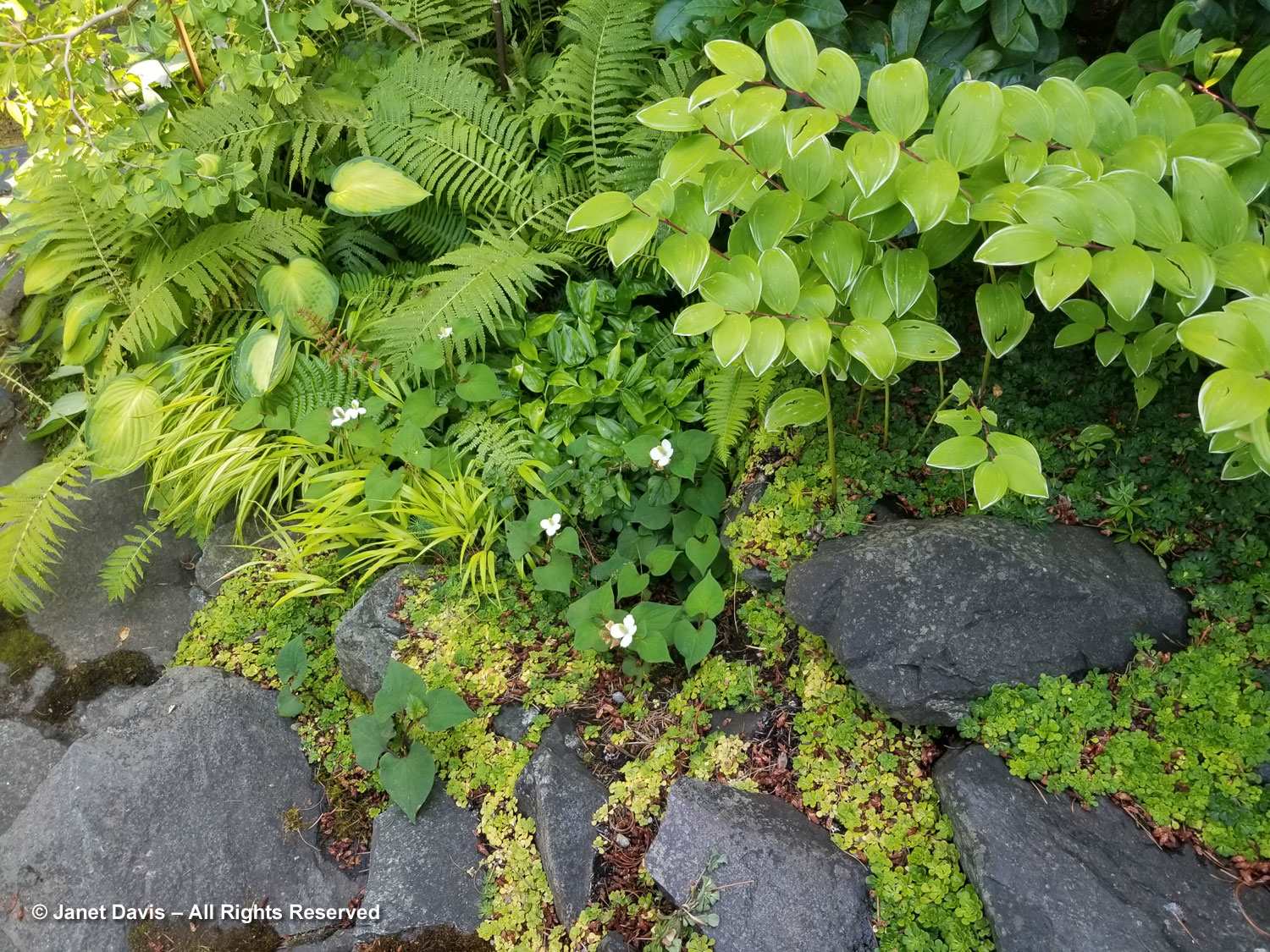
One of my favourite vignettes features foliage of a variegated ginkgo (G. biloba ‘Variegata’).
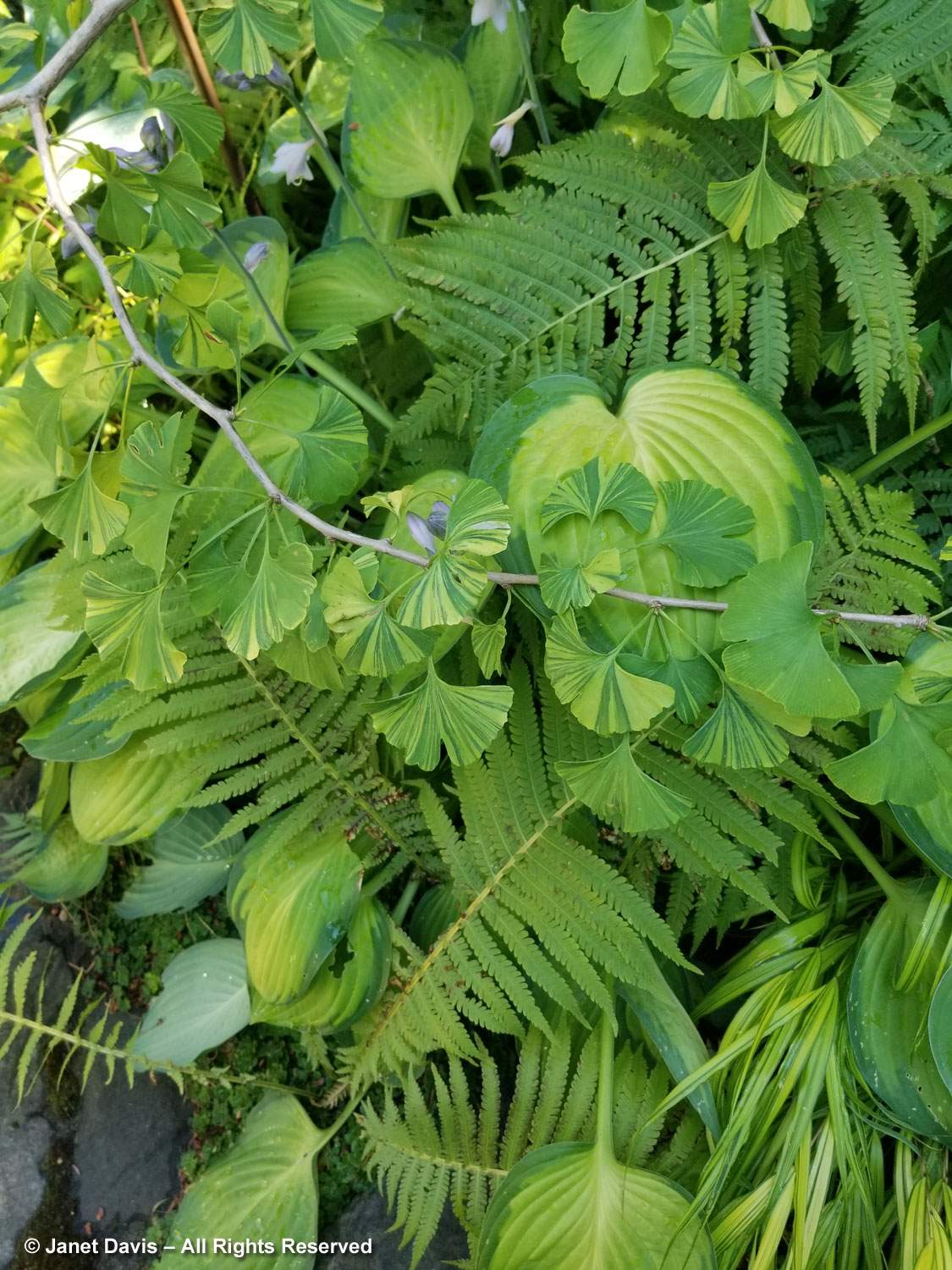
The lower level features a naturalistic pond edged with mossy flagstones, overhung by trees with moss-covered branches. Bamboo makes interesting reflections in the water. (Sadly for the photographers but happily for everyone else, the sun shone bright in a blue sky for much of our Puget Sound visit).
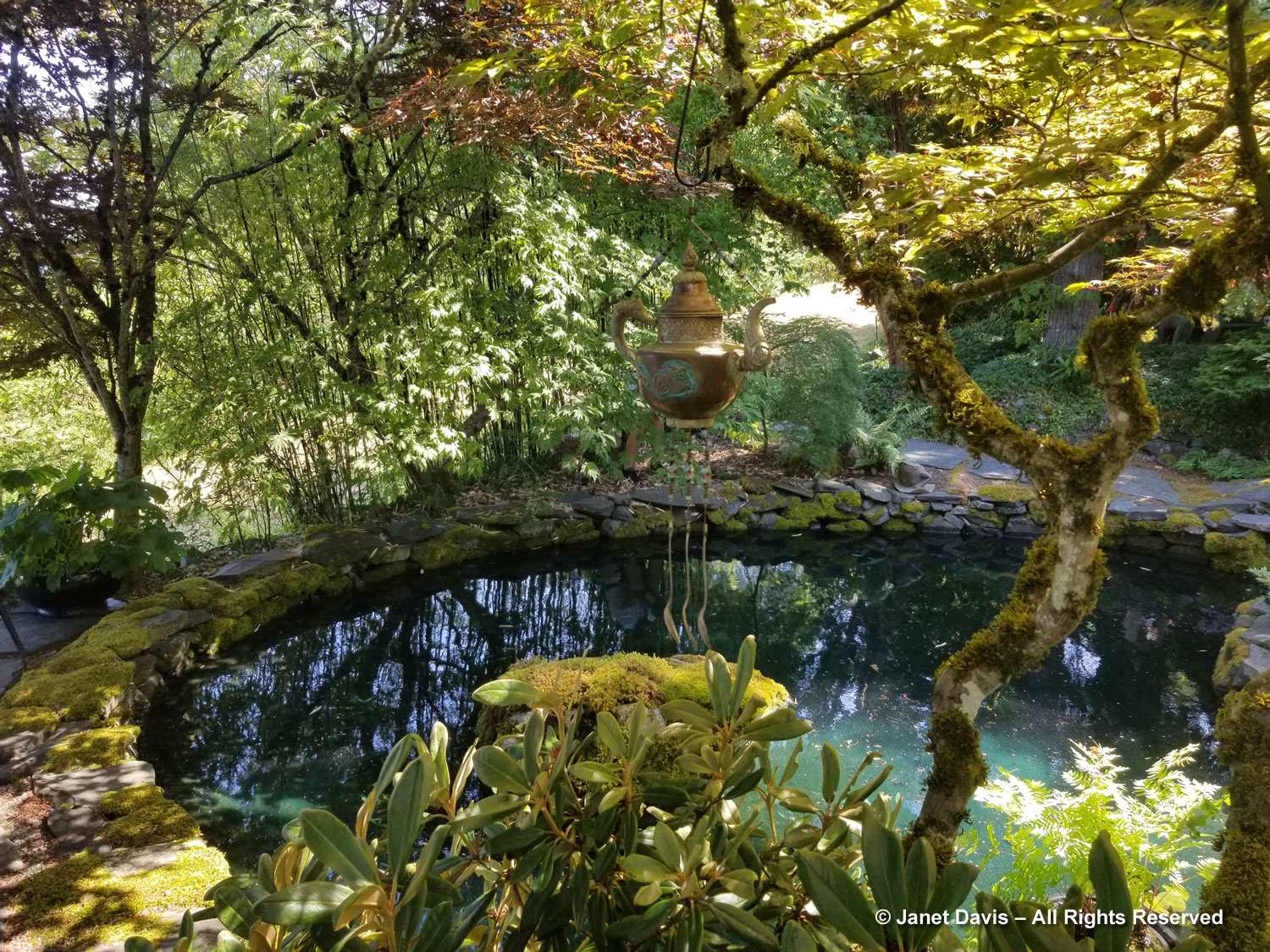
Camille has collected delightful windchimes.
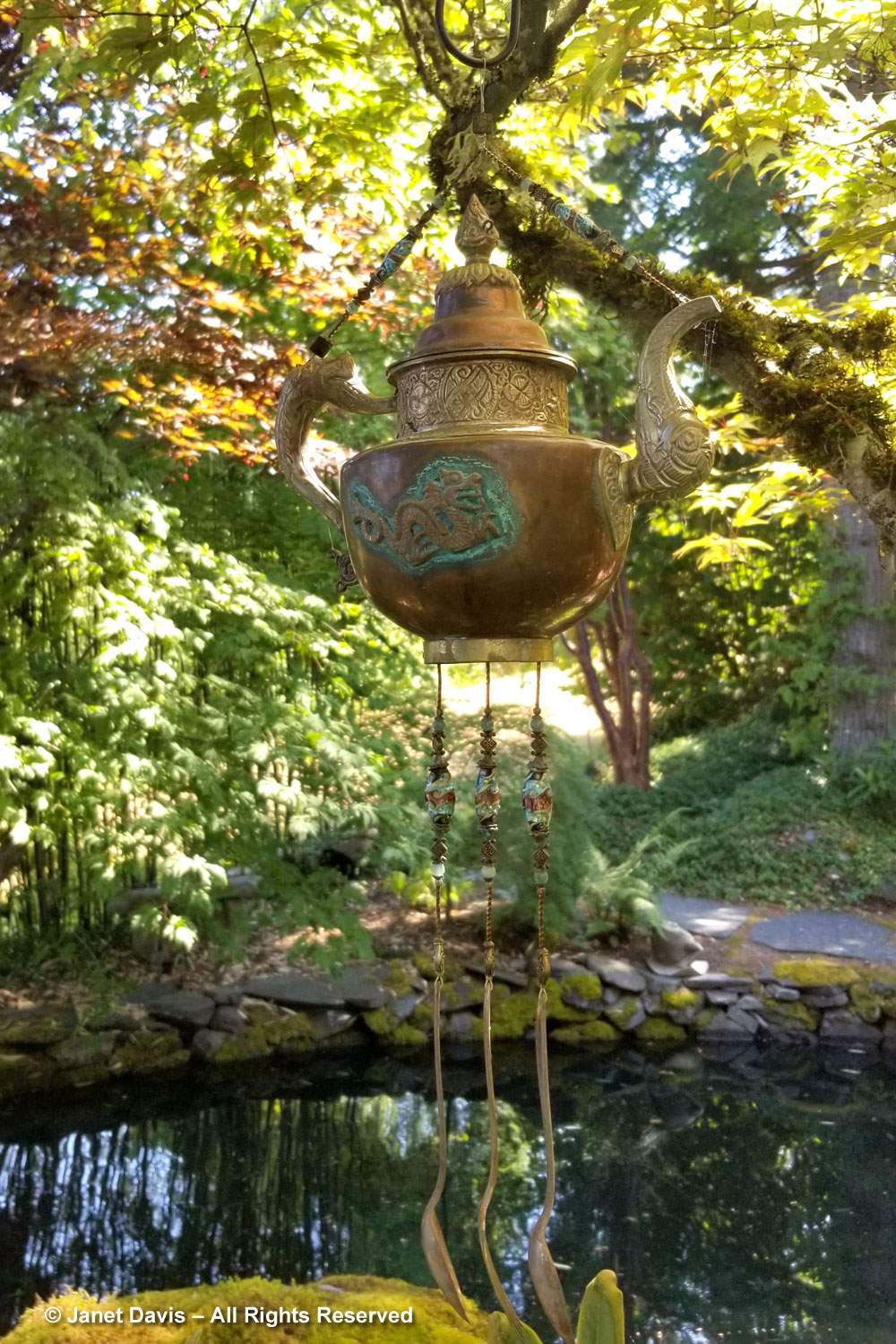
With so much water in the garden, engineering the journey over it is important, and this handsome stone slab does a beautiful job of moving people through.
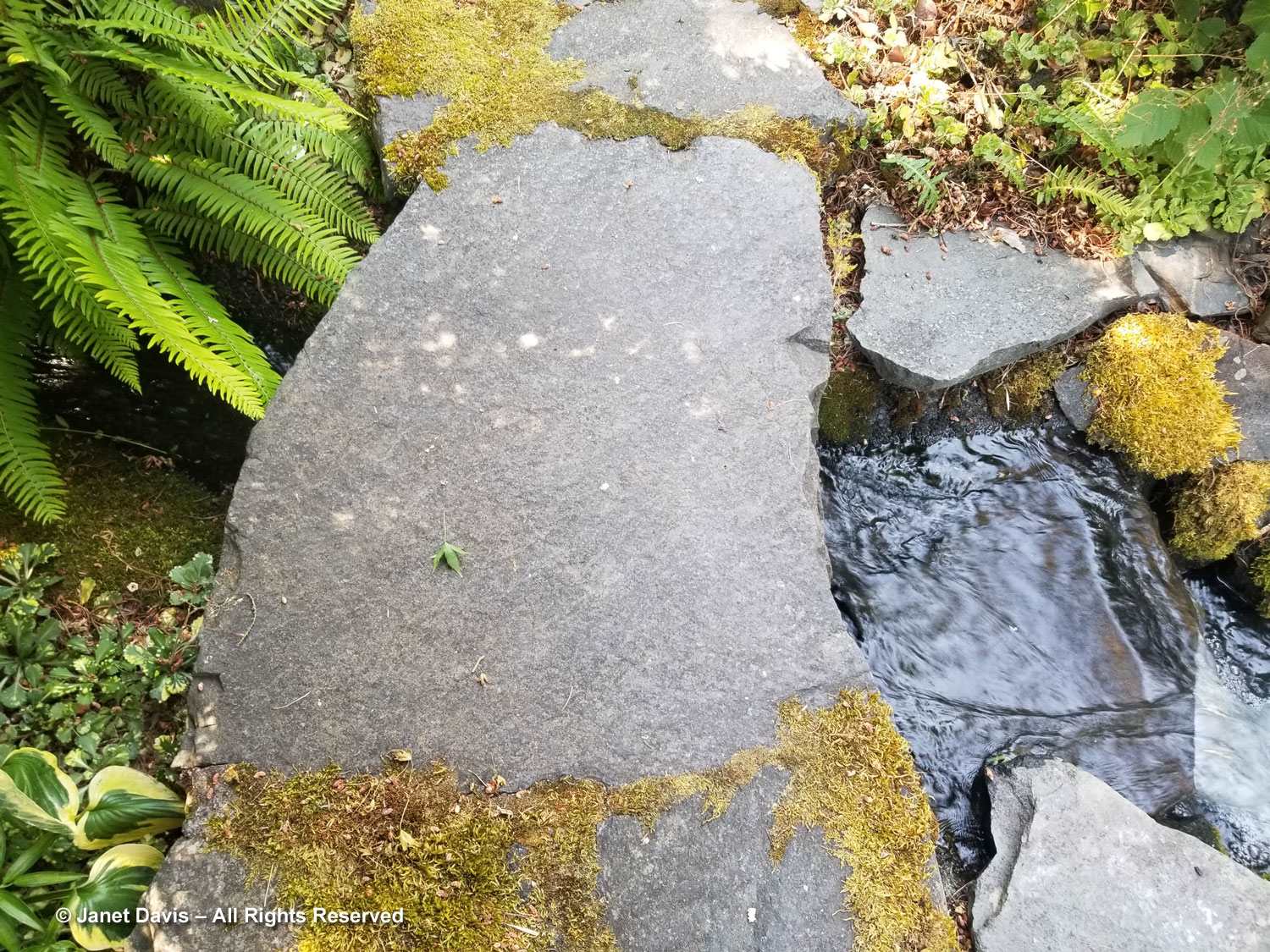
Tucked into a garden on the swimming pool level are touches of blue and purple, including Clematis ‘Rooguchi’ and big-leaf hydrangea (H. macrophylla).
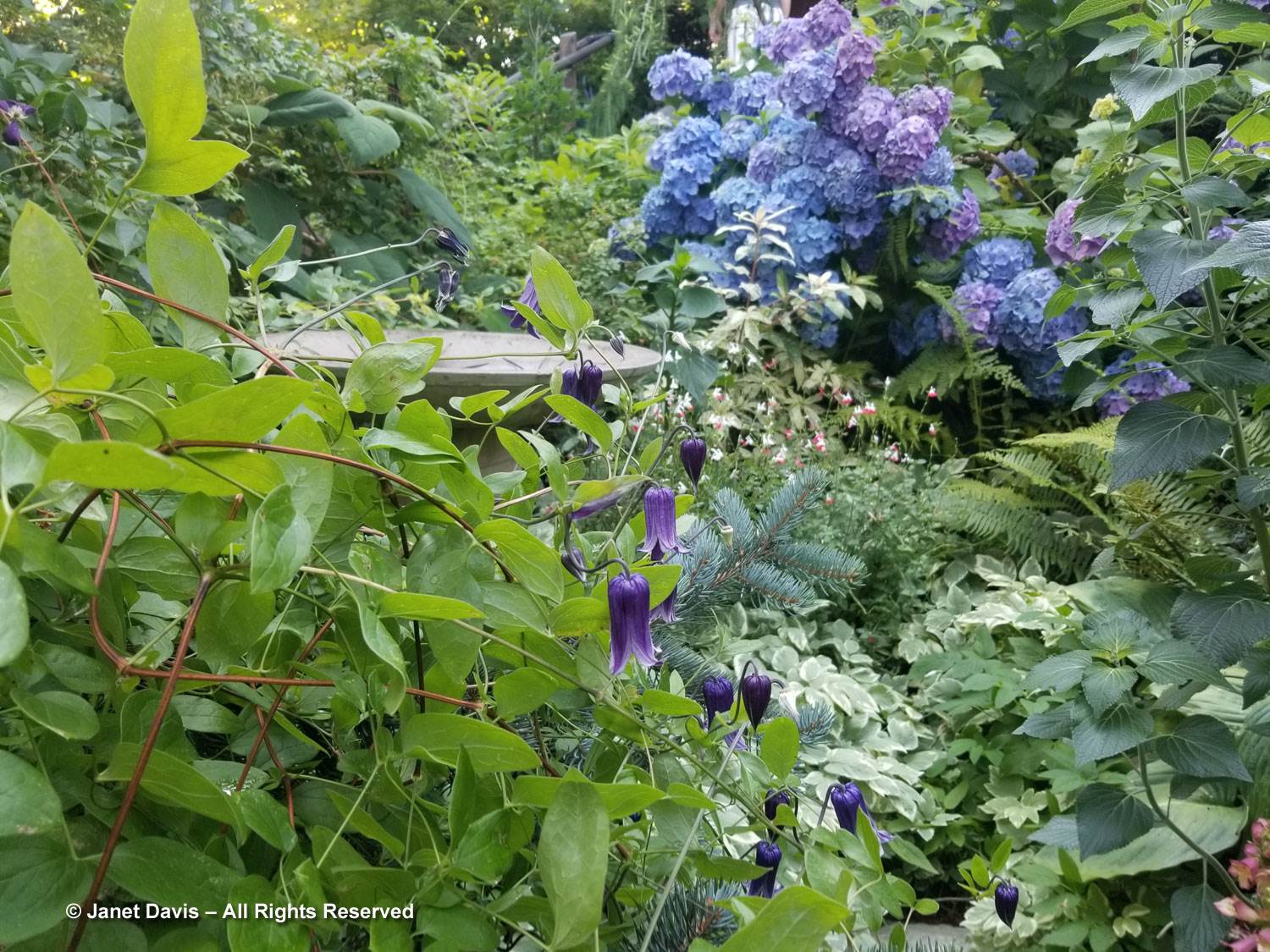
Azure-blue pots and hedging surround the swimming pool….
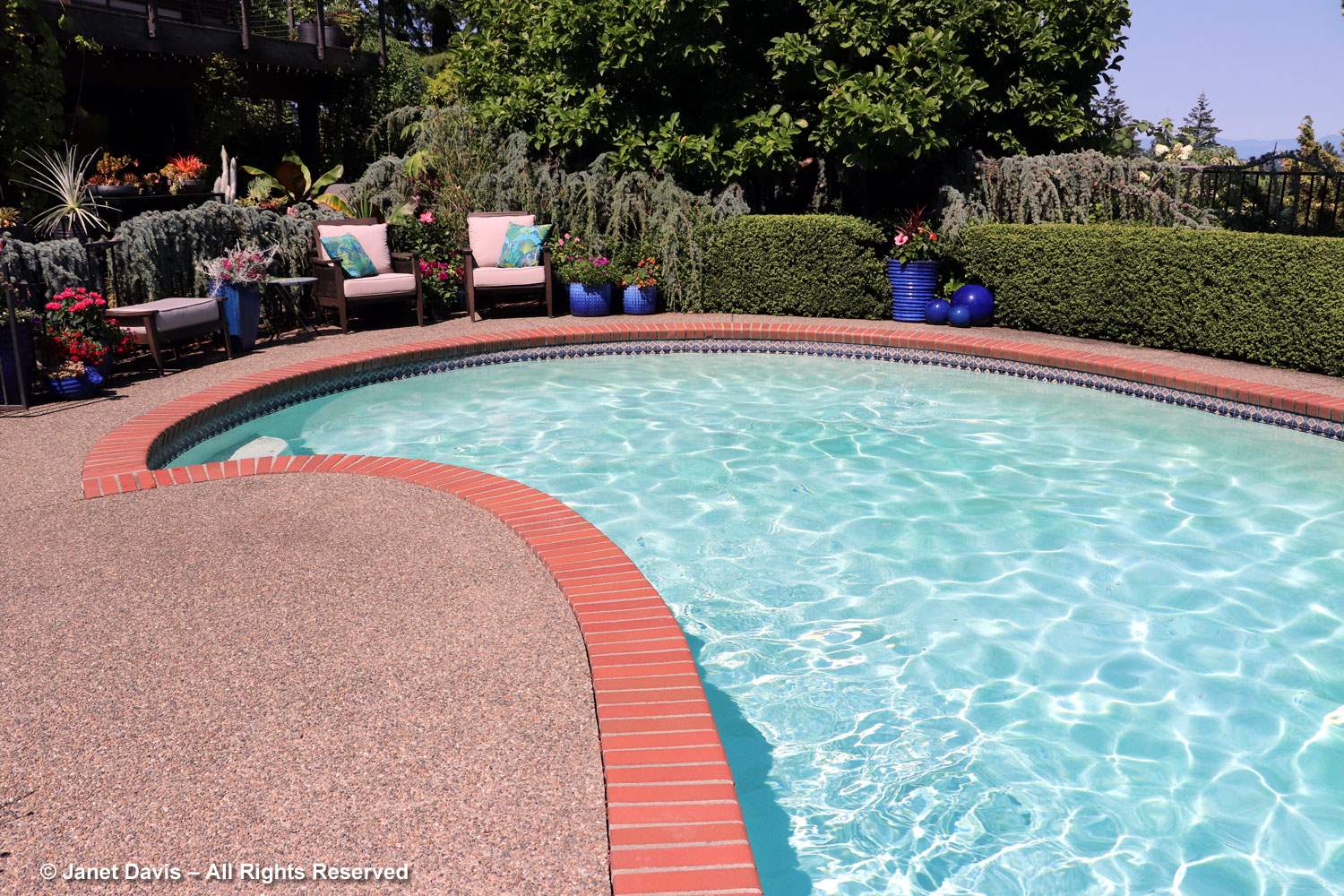
…. and the iron fence is cleverly disguised by a weeping blue Atlantic cedar (Cedrus atlantica ‘Glauca Pendula’) trained along it.
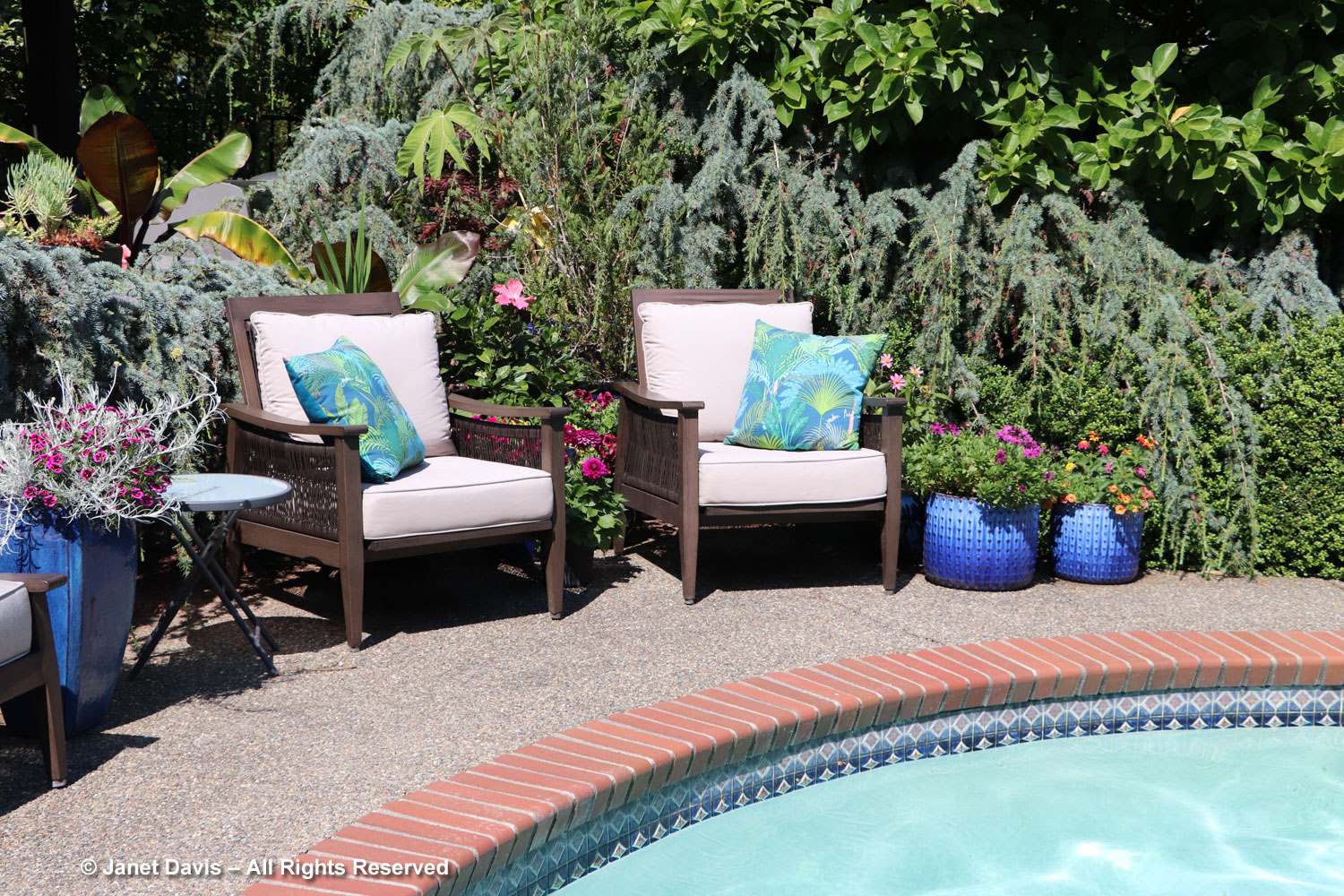
Even the garden furniture fits a pretty colour palette.
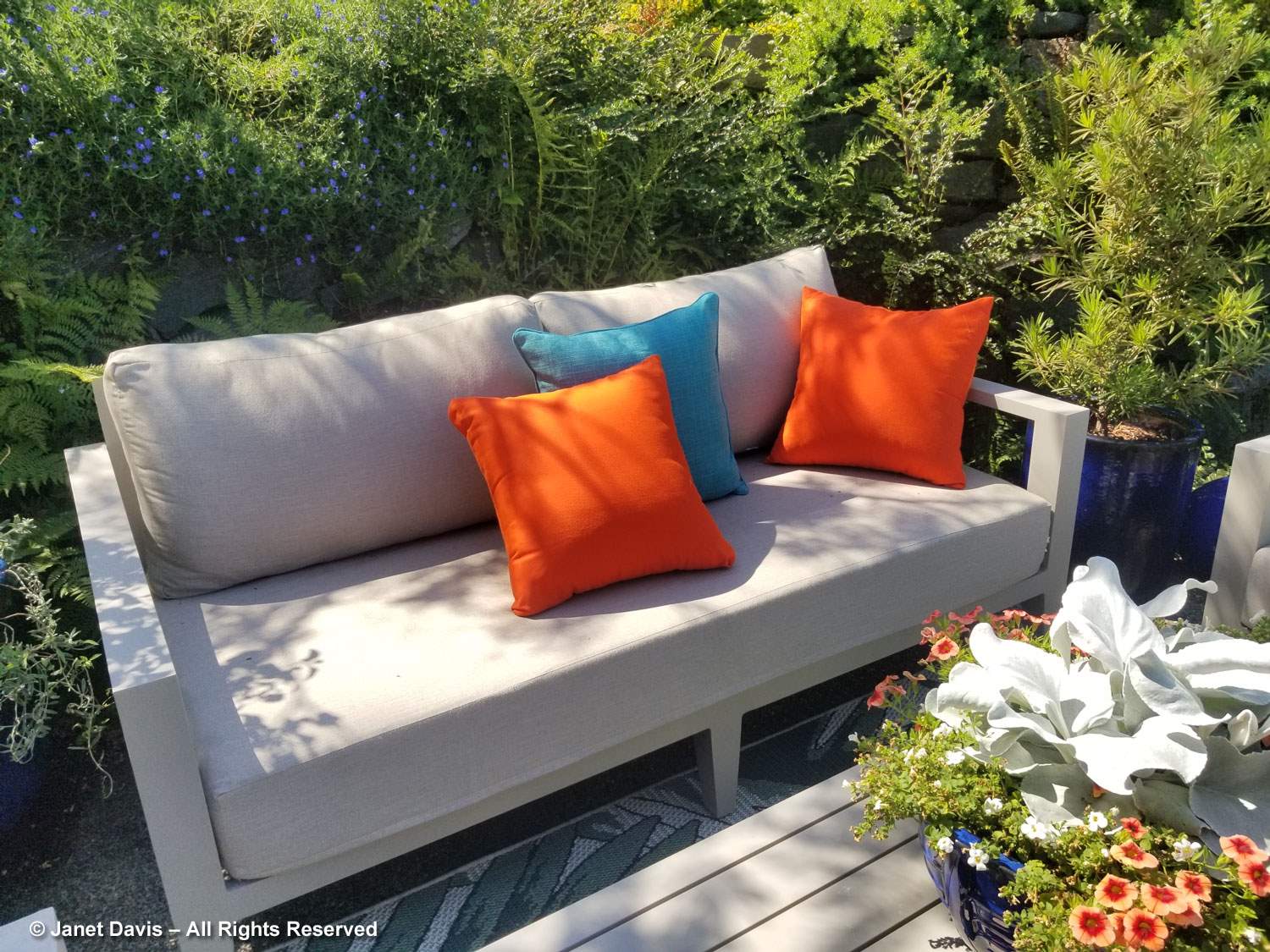
Colocasia and canna bring the tropics poolside, along with a dark-leaved begonia.
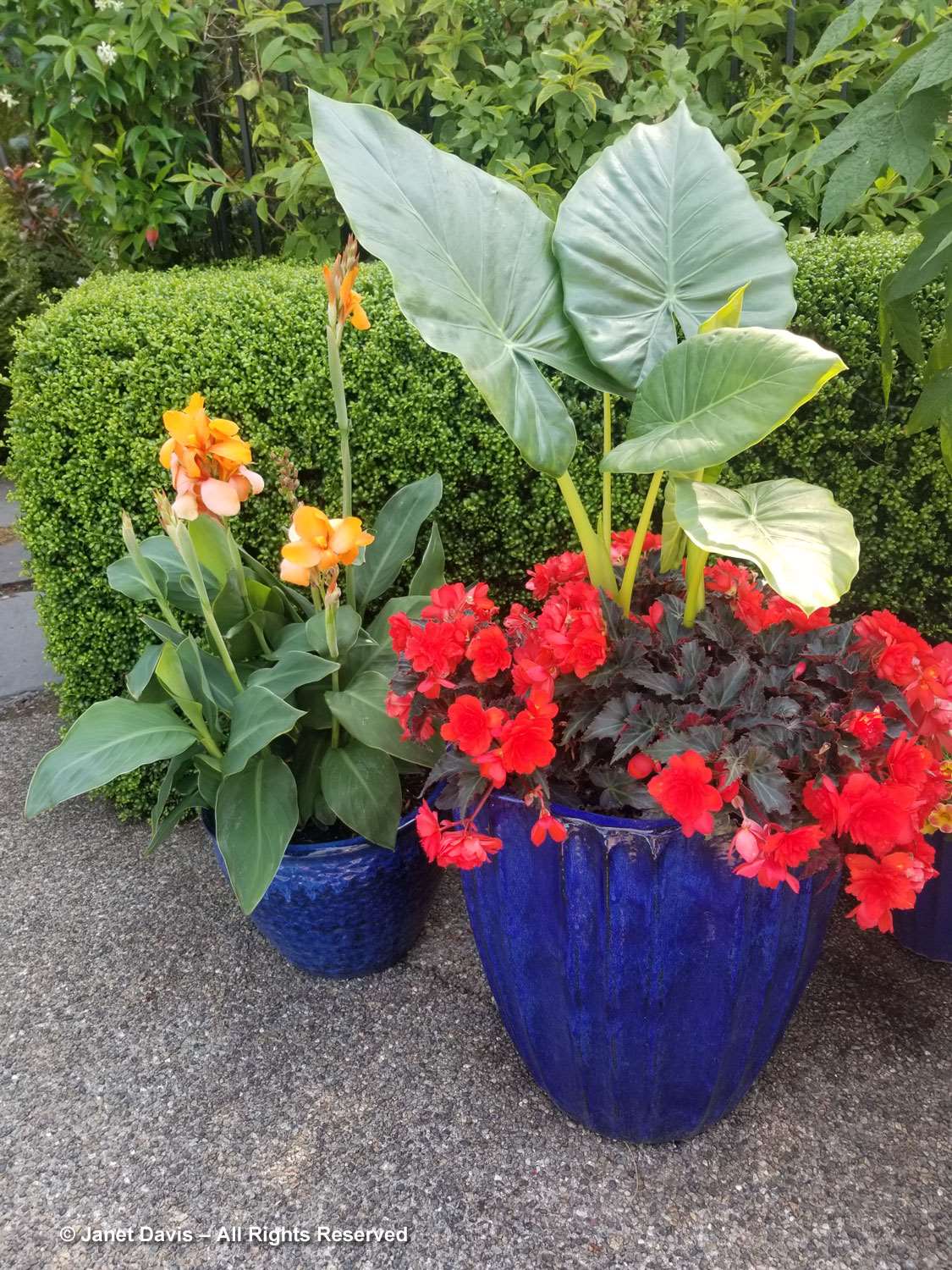
Abyssinian banana (Ensete ventricosum ‘Maurelii’) occupies another pot.
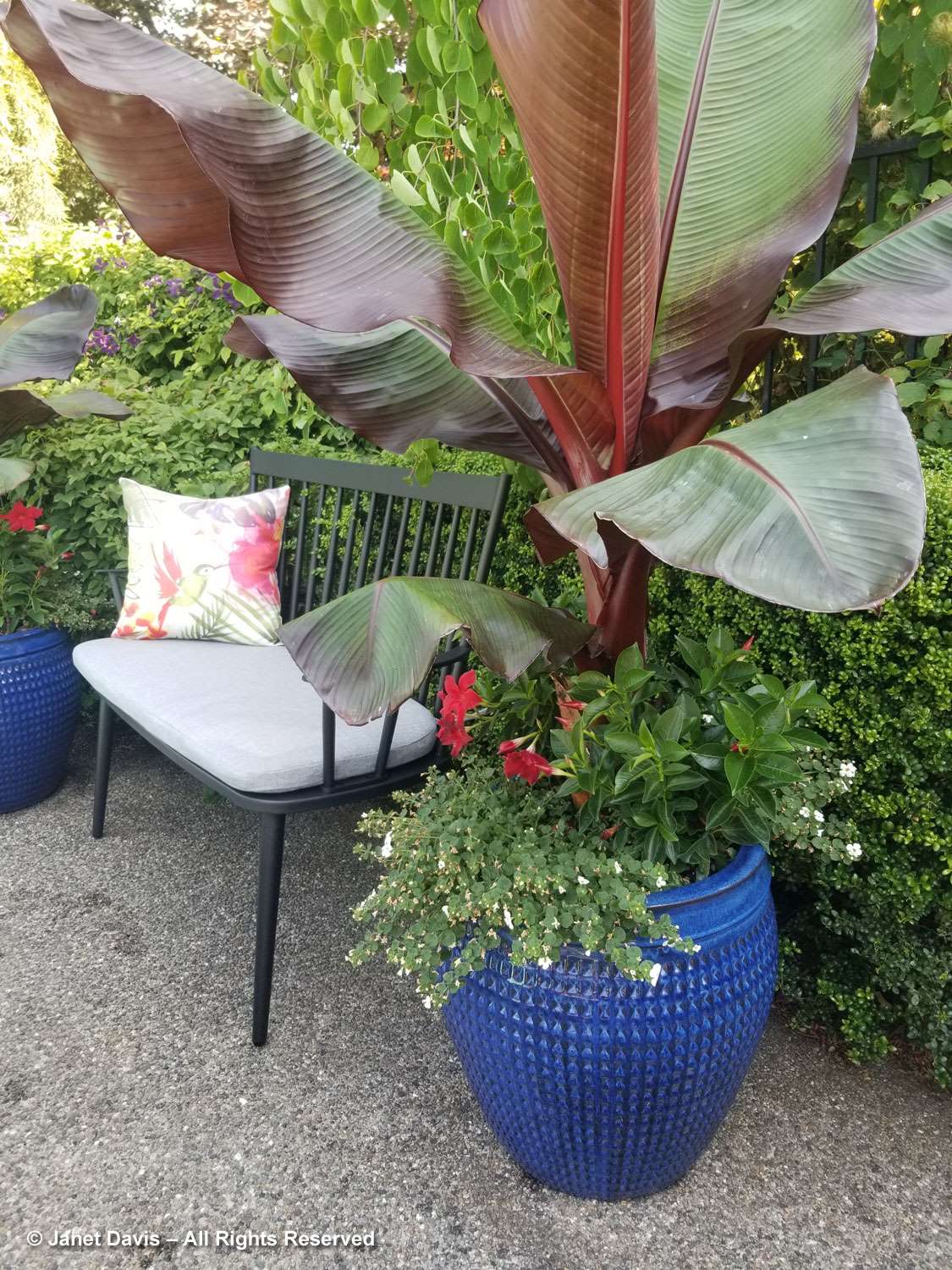
The pool fence has a raised planter shelf with pots of succulents.
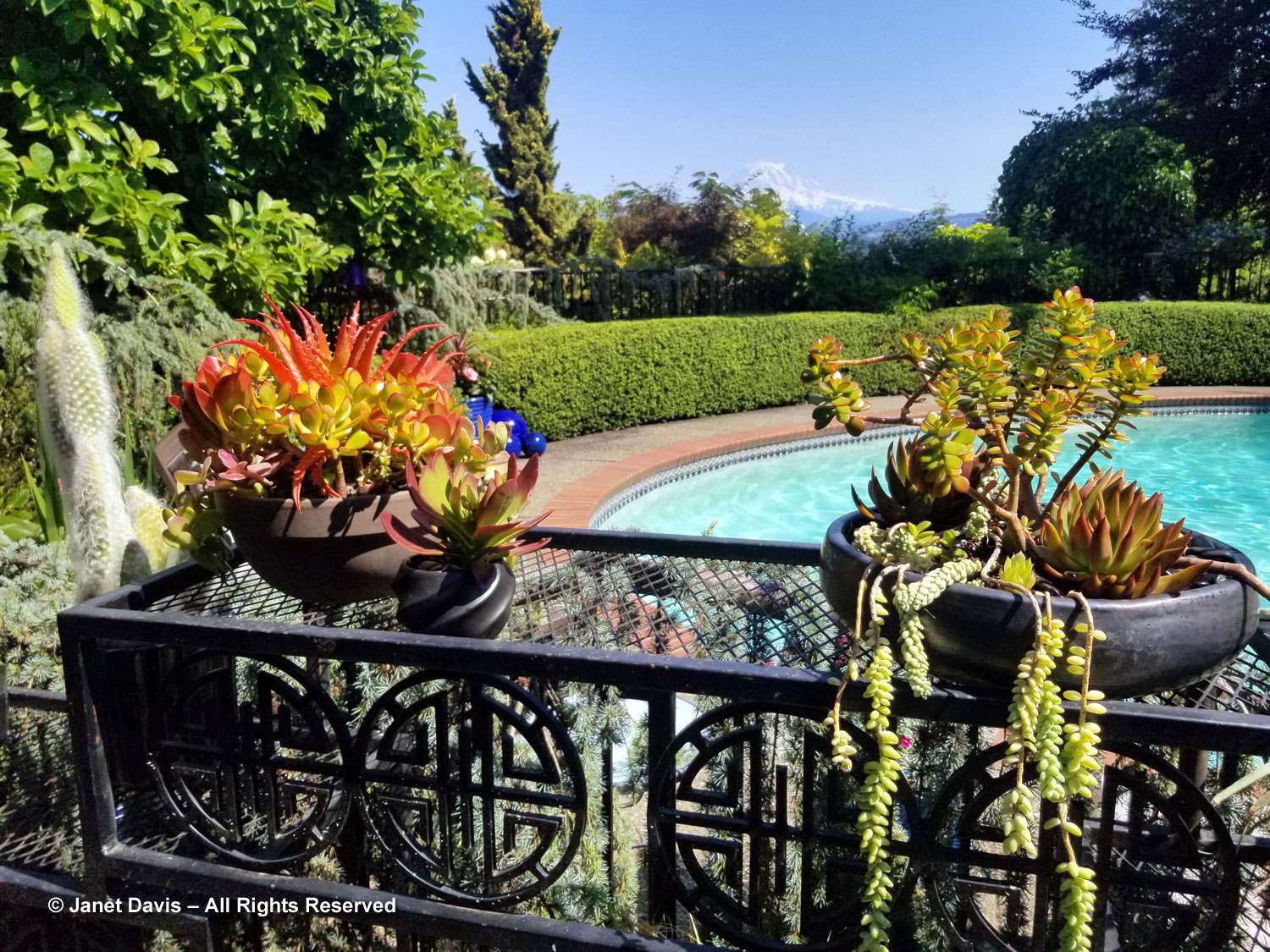
On the other side of the house, geometric stone flags set into a corten-edged grit path create a sinuous walkway past still more shade-loving plants.
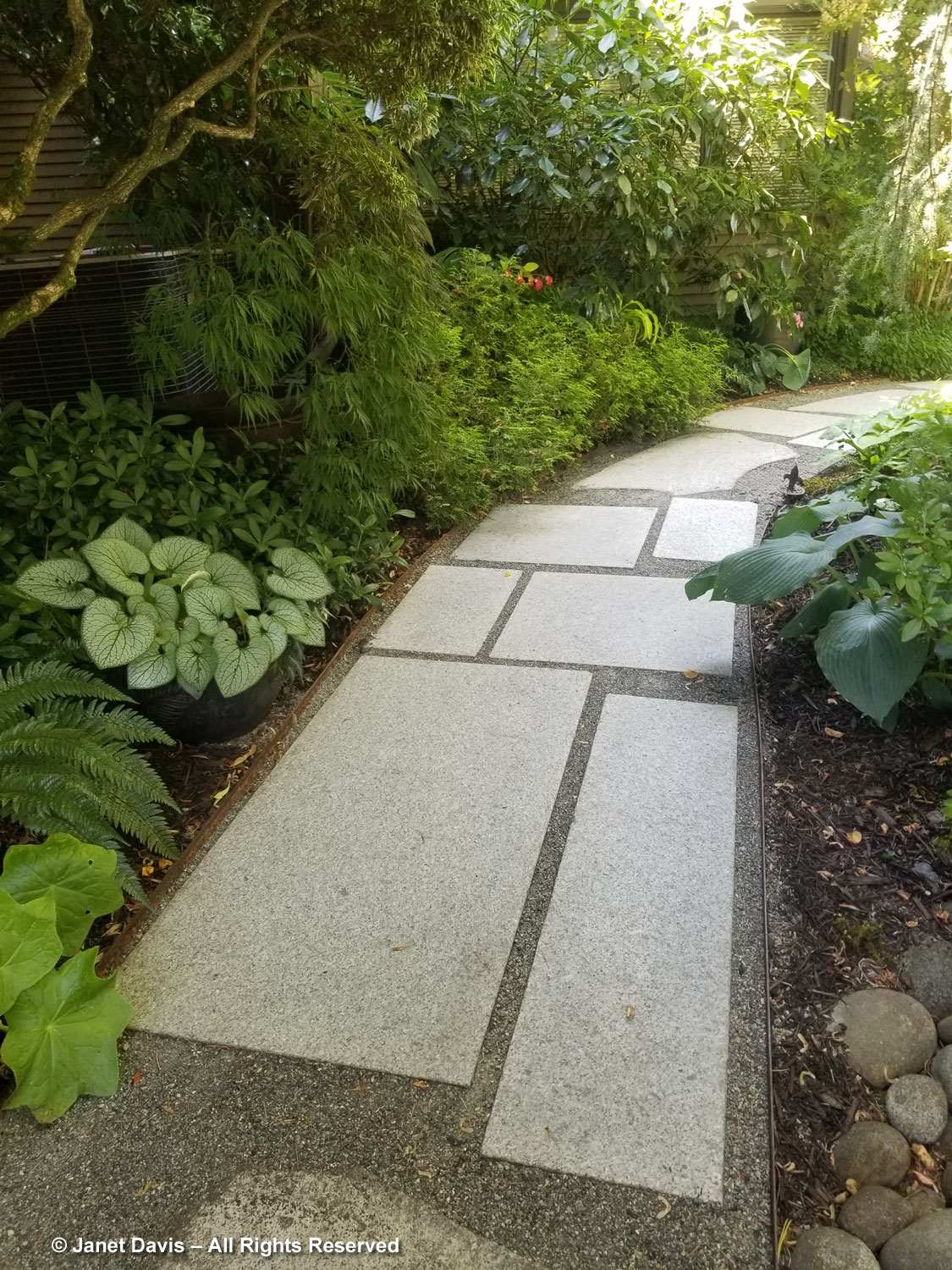
A luminous golden fullmoon maple (Acer shirasawanum ‘Aureum’) lights up the shadows here.
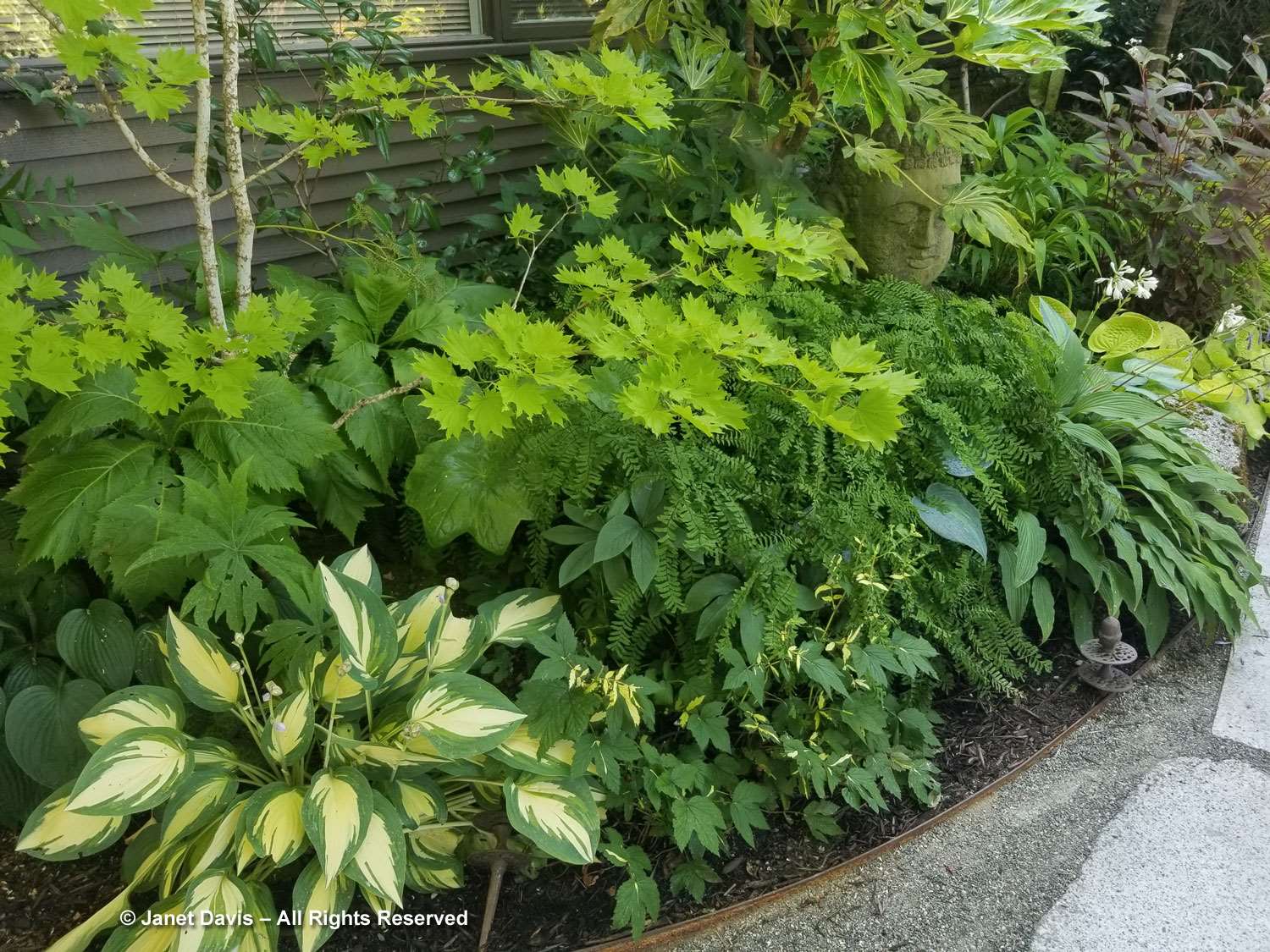
The stone flags give a Mondrian feeling to this path.
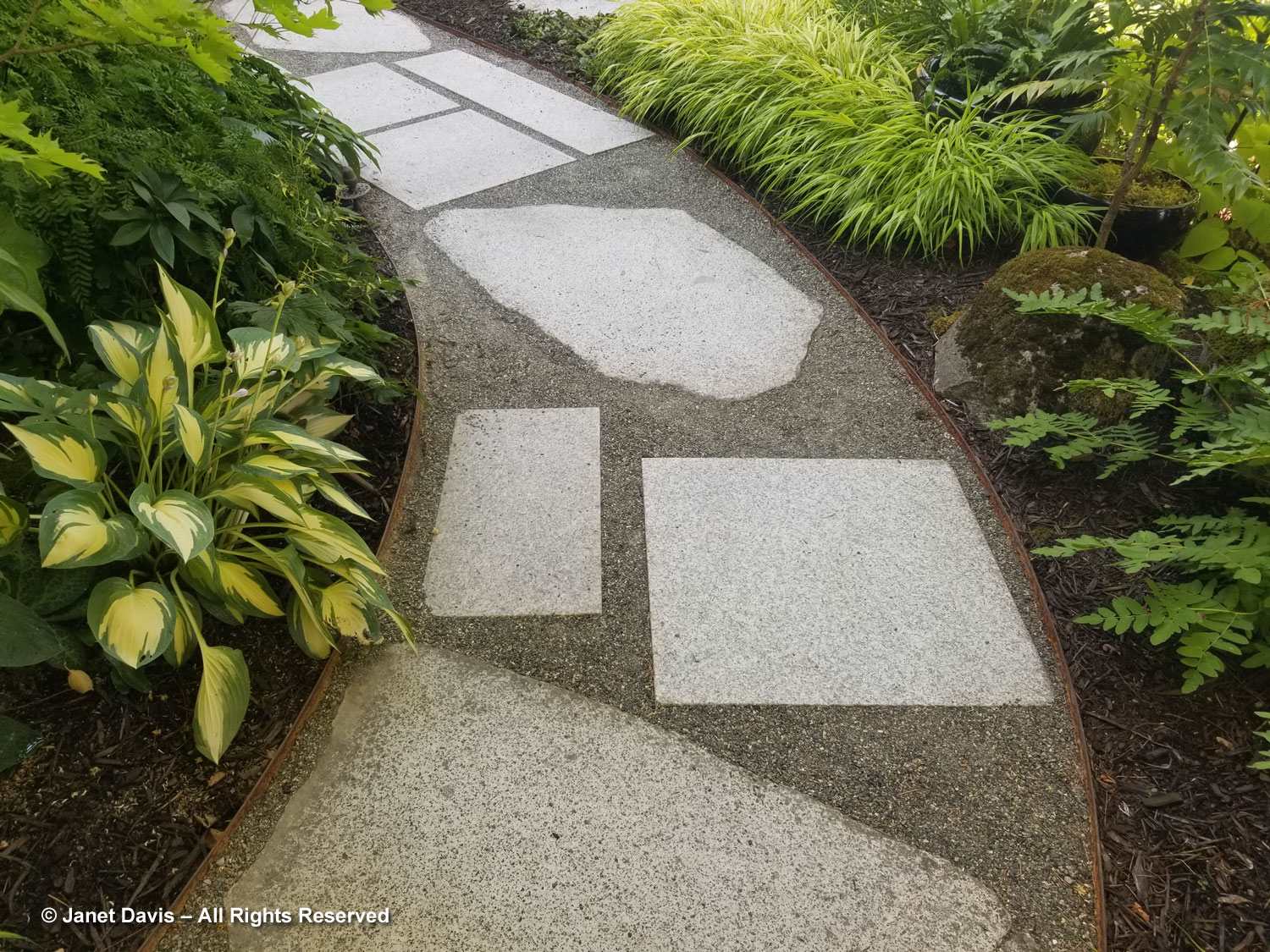
A stone face sculpture is nestled between a Fatsia japonica and a dark-leaved persicaria.
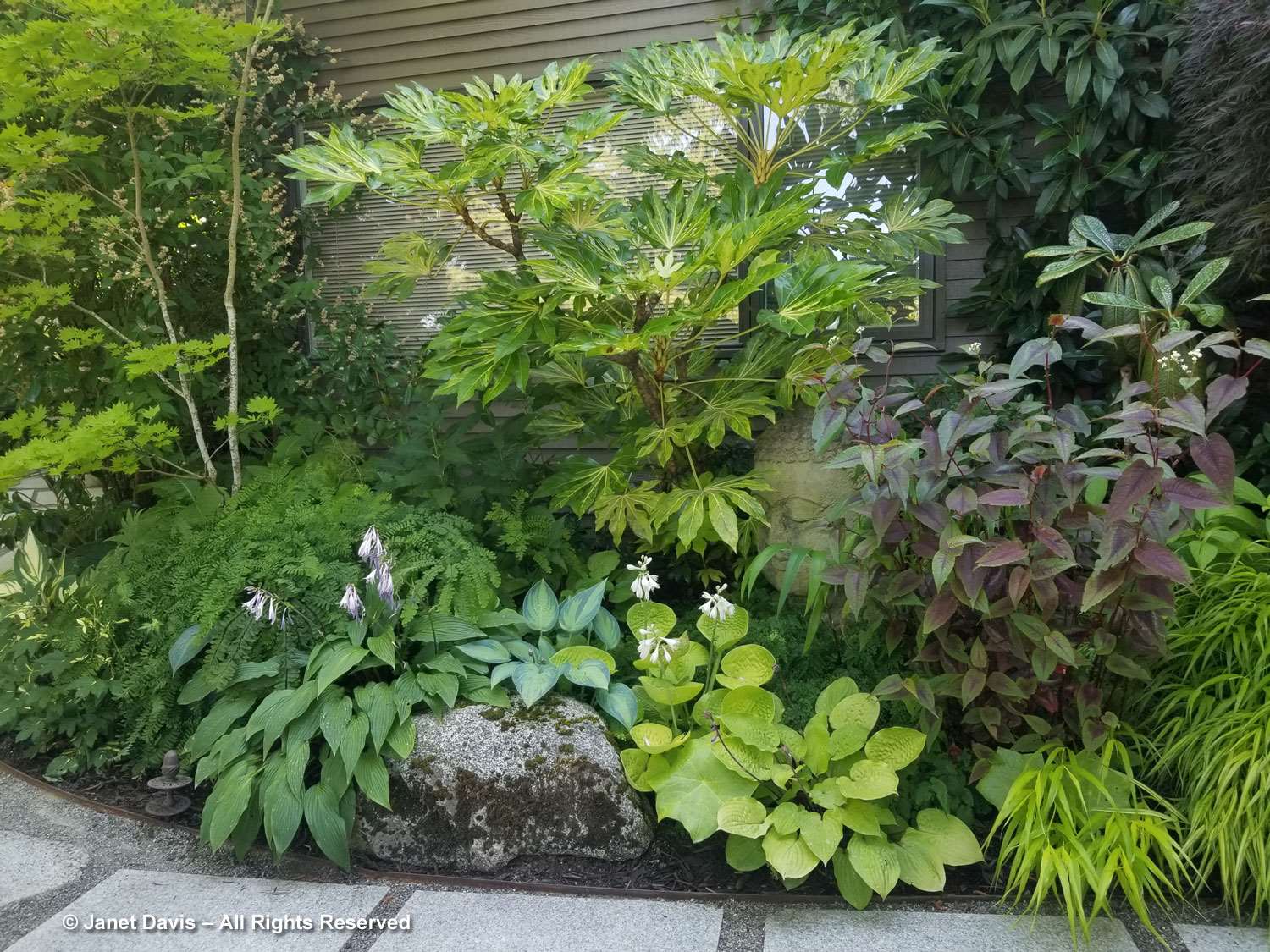
Coming back to the front garden, I sit and chat in a pergola with a friend from Maine, but my eye catches another of Camille’s sweet windchimes. It’s a garden I would dearly love to have spent many hours chronicling (without having to dodge a hundred fellow enthusiasts while shooting), but it has been a great delight to be here. Thank you, Camille and Dirk, for sharing it with us.
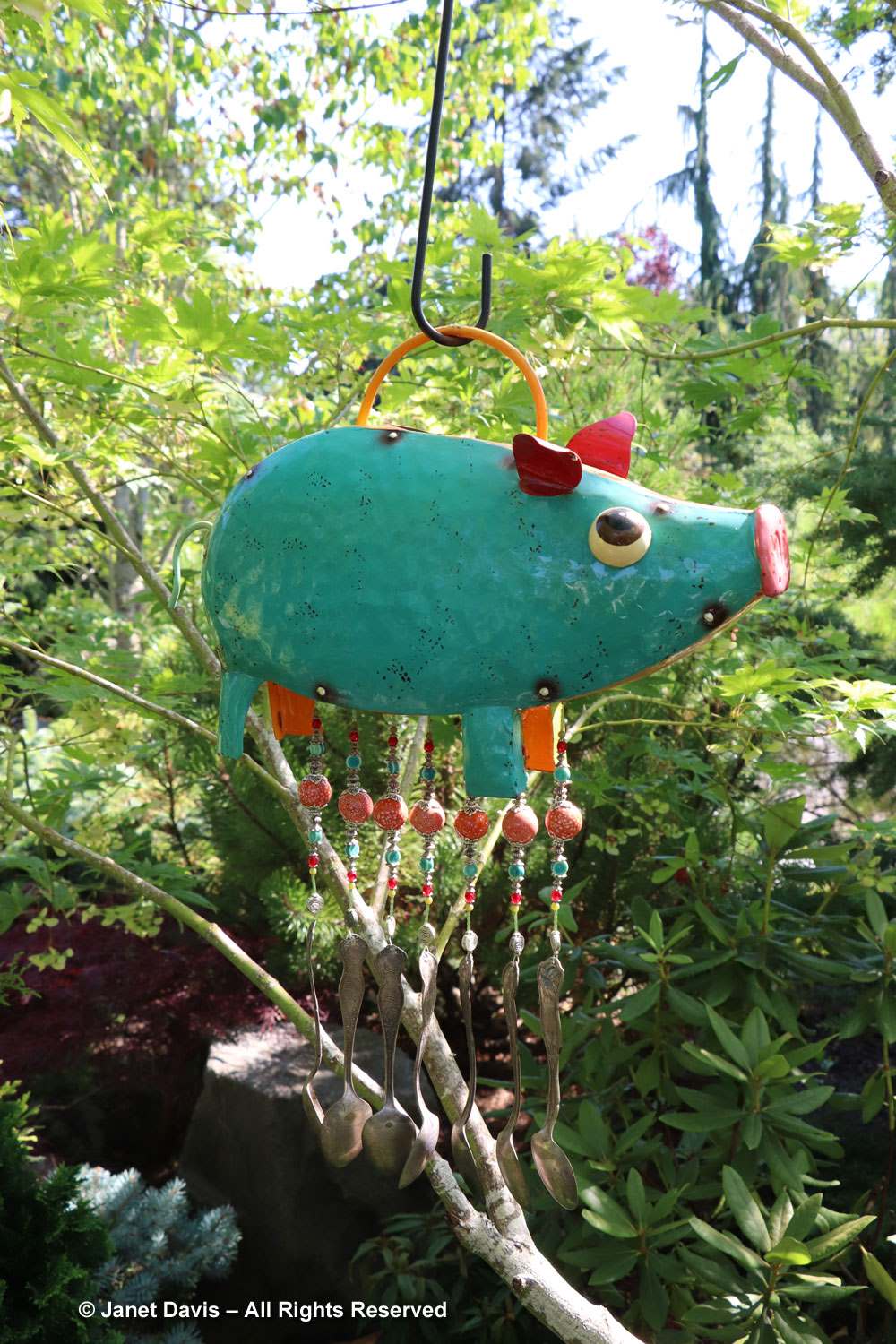
Follow Camille Paulsen on Instagram @tahomaflora.

